Can freshwater mussels live up to the hype?
Community composting ramps up, slowly

Can freshwater mussels live up to the hype?
Community composting ramps up, slowly






publisher Alex Mulcahy
managing editor
Bernard Brown
associate editor & distribution
Timothy Mulcahy tim@gridphilly.com
deputy editor
Katherine Rapin
art director
Michael Wohlberg
writers
Kyle Bagenstose
Tenaya Darlington
Anna Herman
Dawn Kane
Emily Kovach
Marisa McClellan
Sophia D. Merow
SJ Punderson
Jenny Roberts
Bryan Satalino
Jordan Teicher
photographers
Kyle Bagenstose
Chris Baker Evens
Troy Bynum
Jared Gruenwald
Jordan Teicher
illustrators
Bryan Satalino
published by Red Flag Media 1032 Arch Street, 3rd Floor Philadelphia, PA 19107 215.625.9850 • GRIDPHILLY.COM
For a few years now, I have been avoiding writing an article about freshwater mussels like the one Kyle Bagenstose wrote for this issue. His article airs doubts about the claim that restoring native freshwater mussels can help clean polluted waters — just as efforts are ramping up to breed and reintroduce mussels to our creeks and rivers.
Up until now, I have found it convenient to avoid the doubts. Even if they don’t improve water quality very much, there are plenty of other good reasons to restore mussels to waterways where hundreds of years of dams and pollution have wiped them out, but I worry that not everyone will agree.
There are close to 300 species of freshwater mussels across the continent. More than a dozen are native to the Delaware River and its tributaries (many with fabulous names, such as the tidewater mucket and the alewife floater). They live for decades, filtering tiny bits of plant or animal matter out of the water.
for us, their “ecosystem services,” in conservation lingo. And so mussel advocates point to water filtration. Mussels of course feed by pulling particles out of the water. Each mussel is small, but millions of them presumably add up to a river-scale water filtration system. The problem is that the science doesn’t back up that presumption, as explained in a paper co-authored by one of the experts interviewed in Kyle’s article. But who cares? Is a little bit of exaggeration a problem if it serves the greater good of restoring native species to their habitat? Kyle’s article discusses why it may indeed be a problem.
Mussel restoration isn’t unique in this way. Advocates understandably promote valuable environmental initiatives using all the angles available, and it is understandable that they would avoid scrutinizing the shakier points. I don’t blame them. It shouldn’t be so hard to rally support for the environment, but it is.
Content with the above logo is part of Every Every Voice, Every Vote, a collaborative project managed by The Lenfest Institute for Journalism. Lead support for Every Voice, Every Vote in 2024 and 2025 is provided by the William Penn Foundation with additional funding from The Lenfest Institute for Journalism, Comcast NBC Universal, The John S. and James L. Knight Foundation, Henry L. Kimelman Family Foundation, Judy and Peter Leone, Arctos Foundation, Wyncote Foundation, 25th Century Foundation, and Dolfinger-McMahon Foundation.
To learn more about the project and view a full list of supporters, visit www.everyvoice-everyvote.org.
Editorial content is created independently of the project’s donors.
Mussels are also intimately tied to the fish that swim freely around them. Non-tidal rivers and creeks only flow in one direction, which makes it impossible for the sedentary mussels to move upstream on their own. They have evolved what are essentially fish lures that draw in their free-swimming neighbors, at which point the mussels eject their minute babies. These then latch onto the fish’s gills. The wee mussels later drop off and settle onto the bottom, some of them now upstream from their parents.
All of this should be amazing enough to justify efforts to restore mussel populations, but the sad truth is that we too rarely appreciate the natural world for its own merits — and this is especially true for humble, uncharismatic creatures like mussels, whose fantastic lives unfold completely out of human sight.
So how do you convince public officials and foundations to spend money for mussel restoration? You focus on what they can do
So why didn’t I take on this subject sooner? As a nature writer and advocate for native biodiversity, I too have been content to avoid kicking the tires, particularly because I don’t want to erode support for restoring our historic mussel beds. It’s also personal. As a publication with a mission (it’s right there on our cover) we see ourselves as on the same team with anyone working for a more sustainable Philadelphia. These are people I respect and who, in many cases, I consider to be friends. Who wants to upset their friends if they can avoid it?
But here at Grid it is our job — and my job — to be more thorough than that, and to confront important questions about solutions that might not be so straightforward.
bernard
brown , Managing Editor





















































In the Delaware River watershed and elsewhere, a well-funded push to use freshwater mussels to clean up creeks and rivers is underway. Some question the efficacy of these efforts by kyle bagenstose
When the Fairmount Water Works was built in the early 19th century to provide clean drinking water to Philadelphia, it was a feat of modern engineering. Steam engines and a dam across the Schuylkill River powered water wheels large enough to pump millions of gallons a day uphill to a reservoir atop nearby Fair Mount. Gravity did the rest, funneling the water through a network of mains and pipes to quench the growing city’s thirst and help abate outbreaks of yellow fever.
More than two centuries later, the water wheels have long stopped turning. The Philadelphia Museum of Art now sits atop the hill where the reservoir once was. And the Water Works houses a very different kind of water technology, one that predates the steam engine by a few hundred million years: freshwater mussels.
Deep within the Water Works’ cave-like confines, Lance Butler, senior scientist for the Philadelphia Water Department, oversees a laboratory no bigger than a low-rent Manhattan studio. Rows of shelves house
little plastic drawers that can be pulled out and explored. Like kids in a candy shop, Butler and his team flit between them and rummage around. But they’re not hunting for a gummy bear or a Charleston Chew.
The drawers are filled with live mussels, and Butler prods them for answers.
“How much are they filtering?” Butler posits. “At what efficiency are they filtering? What are the effects of temperature and seasonality on filtration? What is the size scale? How much does a small versus a large animal filter?”
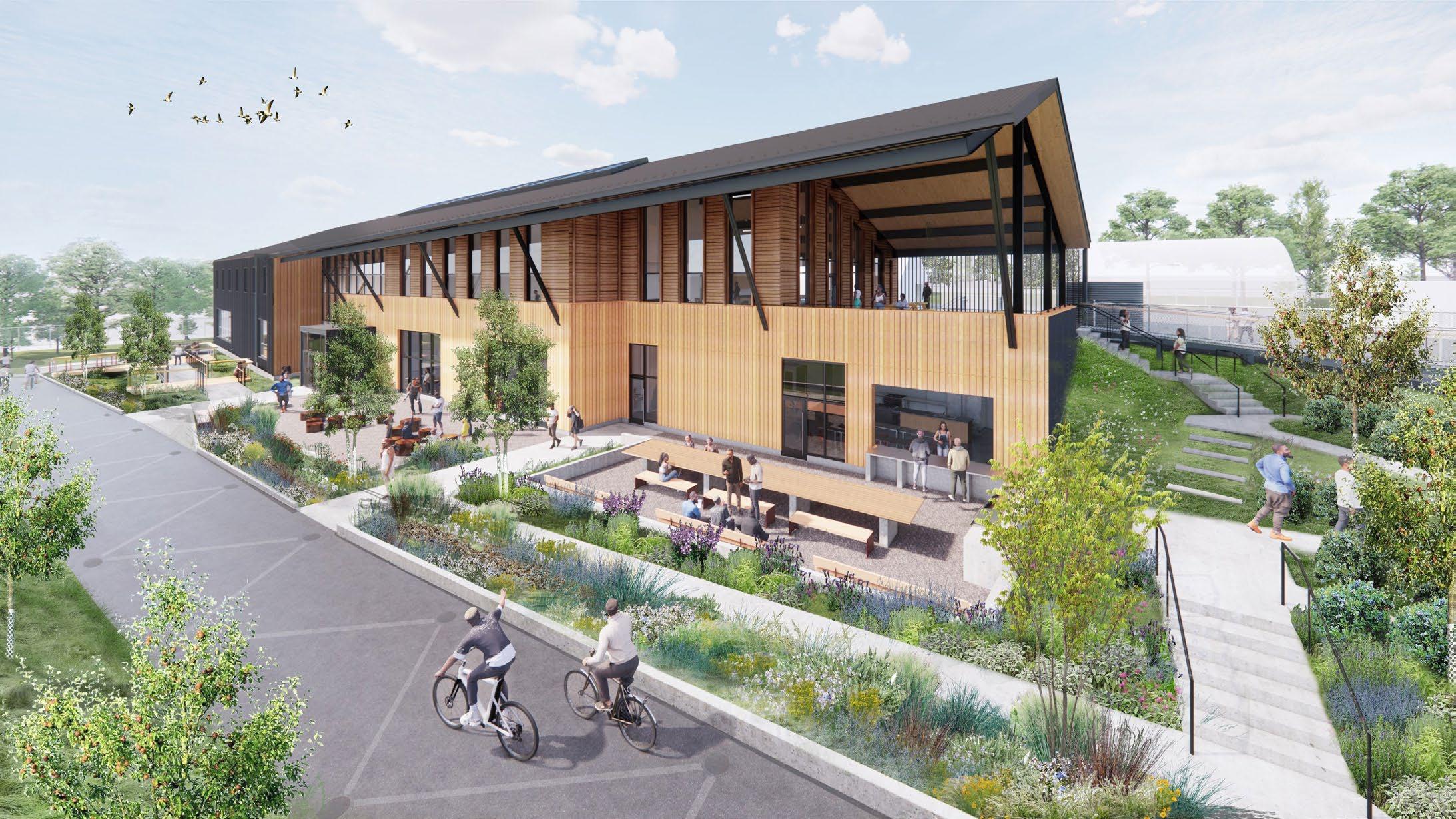
Bartram’s, with $7.4 million of that going to construction of the hatchery.
How much can these organisms, reintroduced at substantial levels, make a difference?”
— lance butler, Philadelphia Water Department
For the past seven years, Butler has sought to answer these questions. By studying freshwater mussels through their entire lifecycle — from nearly microscopic beginnings on the gills of a host fish to inch-long adulthood — his team is hoping to build the architecture of a promising new way to fight water pollution. Freshwater mussels are known to consume nutrients like nitrogen and phosphorus that can foul waterways, and even sequester harmful heavy metals. In theory, that could make them a valuable tool in cleaning up rivers and streams, a prospect that in recent years has also generated interest among some regulators and environmental groups.
But, all those little questions still add up to a big, nagging one.
“How much can these organisms, reintroduced at substantial levels, make a difference?” Butler asks.
The answer may soon be coming to a stream near you.
Over the next several years, a full-fledged mussel hatchery is set to be built at Bartram’s Garden, a historic public park nestled on the banks of the Schuylkill River just four miles downstream from the Water Works. Championed by the Partnership for the Delaware Estuary (PDE), the facility will have two halves, including a frontof-house education center for Bartram’s staff and visitors, and a mussel hatchery in the back. That’s where PDE staff will produce up to a million mussels per year — compared to just 40,000 at Butler’s lab — which will then be distributed to waterways through the region. It’s a major investment: about $21 million in total funding from public and private supporters according to
Kathy Klein, executive director of PDE, says it’s the culmination of years of planning and visioning, which originated in large part with Danielle Kreeger, former PDE senior science director. The organization is one of 28 Congressionally-designated National Estuary Programs, which means it receives federal funding and works closely with state governments, the Environmental Protection Agency (EPA) and other stakeholders to “restore and protect” the Delaware River and Bay.
Over the past decade, as excitement grew around mussels’ water-cleaning potential, PDE secured funding from several stakeholders to support activity in the space, first with the creation of Butler’s lab, and then the much larger hatchery at Bartram’s.
“The water department was interested in doing this work as well, and that led to the construction of the demonstration hatchery” at the Water Works, Klein says. “That led to the realization that if we were going to try and really restore the population of freshwater mussels … then we really needed to upsize the production.”
But some worry that freshwater mussels aren’t ready for prime time.
John Jackson, a senior research scien-
tist at the Stroud Water Research Center in Avondale, Chester County, says using mussels to try to clean up water at this point is putting the cart before the horse — or perhaps in this case, the bivalve before the science. For Jackson, the lingering questions around freshwater mussels are cause to proceed cautiously. He points to a 2019 paper he co-authored with several other scientists, including David Strayer of the Cary Institute of Ecosystem Studies in Millbrook, New York, which threw cold water on the rapidly-rising interest in freshwater mussels. He says there were two big “red flags,” the first of which was whether a push to propagate mussels could wind up introducing them into waterways where they haven’t historically existed, potentially causing significant ecological damage.
But a second, multimillion dollar question struck at the heart of the idea itself: are freshwater mussels actually a clean water solution worthy of such resources? Or are they distractions from tried-and-true methods of pollution reduction?
“The other [problem] was the promotion of this idea that the mussels would clean up the waterways,” Jackson says. “And there’s just no evidence. It creates a false expectation.”
Whatever their differences of opinion, those working on freshwater mussels in the Delaware watershed generally agree on the history of the bivalves, which stretches to the Cambrian period some 500 million years ago. In more recent millenia, their story began to intersect with humans locally, as some Native Americans took to eating them and using their shells for both decorative and utilitarian purposes.
This human-mussel relationship turned sour in the 19th century, when someone realized their shells made a great feedstock for button manufacturing. Subsequent overharvesting, an increase in water pollution and the advent of an industrial-era dam building spree caused their numbers to plummet: 70% of all freshwater mussel species are now imperiled or extinct in the United States, which Butler says adds to a bleak global picture in which the bivalve has become “the most im-
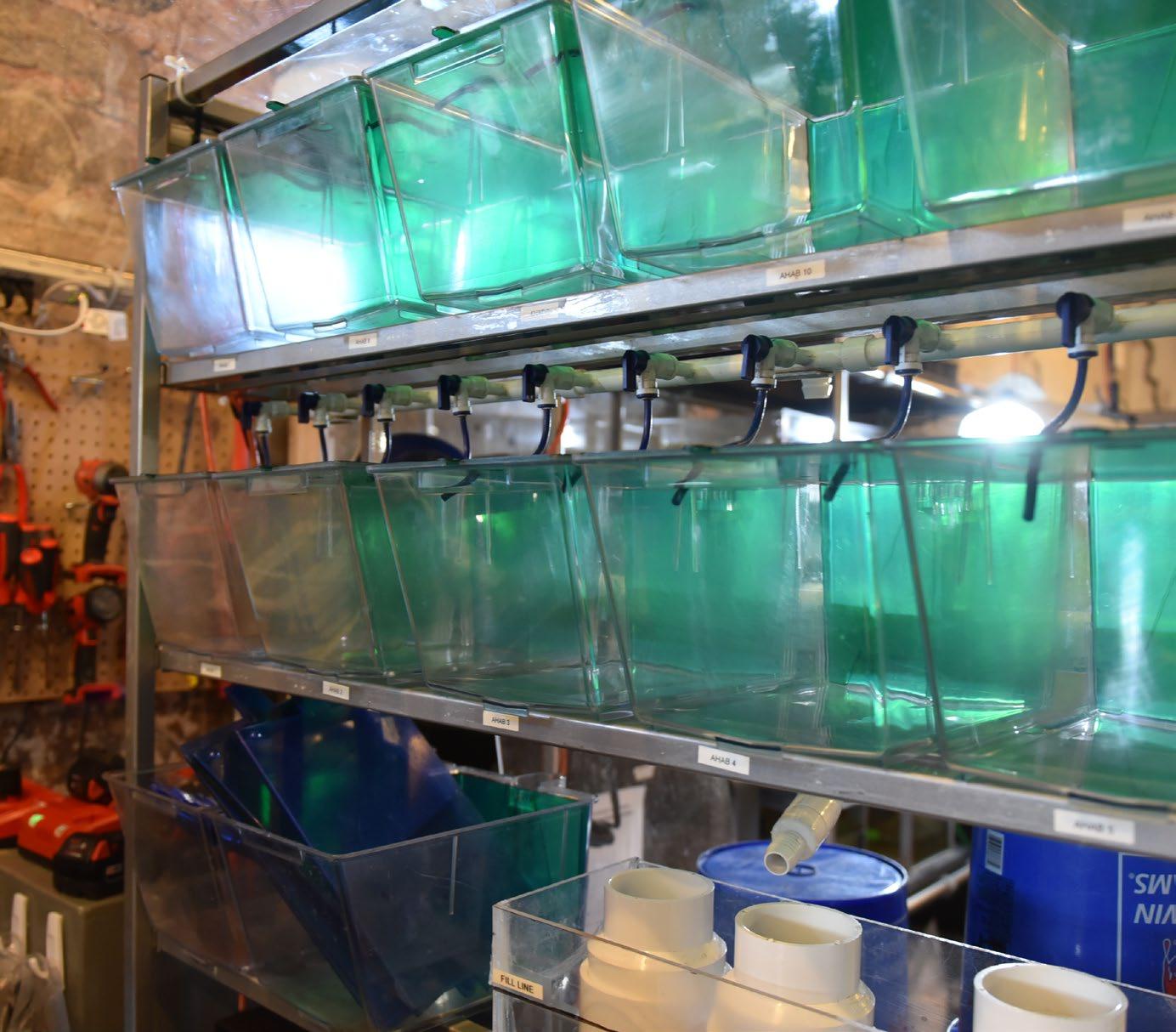
periled invertebrate” worldwide.
Another problem is the relative lack of scientific interest in the species, compared to their more sought-after (and tastier) seafaring relatives, such as the Atlantic oyster. That has led to a dearth of scientific understanding of their biology, lifecycles and historic locations in the region, which has only begun to turn around over the past few decades.
Exactly where or why this modern interest in freshwater mussels began is tough to pin down, but various experts say there is undoubtedly a trend underway. Jackson says he’s now aware of at least ten largescale hatcheries around the Mid-Atlantic, the creation of which he believes began to snowball once a few early efforts established best practices.
The trend also appears to be a diffuse one, with various public entities including the U.S. Fish and Wildlife Service, National Park Service, EPA, Pennsylvania Fish and Boat Commission and PDE, along with private research, conservation and academic organizations, all throwing various amounts of resources into freshwater mussels.
Jackson’s reservations on freshwater mus-
sels notwithstanding, others say they don’t want the bivalve to get a bad reputation.
Scott Ray, a biologist with the PA Fish and Boat Commission, oversees a commissionowned mussel hatchery in Union City, about 30 minutes southeast of Erie in the Ohio River basin. Whereas the Philadelphia-area efforts focus on the so-called “ecosystem services” mussels can provide, Ray says his hatchery for the past several years has focused on supporting existing populations of mussels, whether by bolstering already healthy beds or propping up endangered species.
“Our main focus is going to be to keep the common mussels common, and keep the listed species from going extinct, and off the listed status,” Ray says.
Such uses are generally less controversial than propagating mussels for the express purpose of cleaning up a waterway. Also more widely accepted are mussels’ ability to stabilize streambanks, and their importance in supporting macroinvertebrate populations, particularly the tiny insects that underlie a healthy ecosystem for fish, according to Kelly Somers, a senior water-


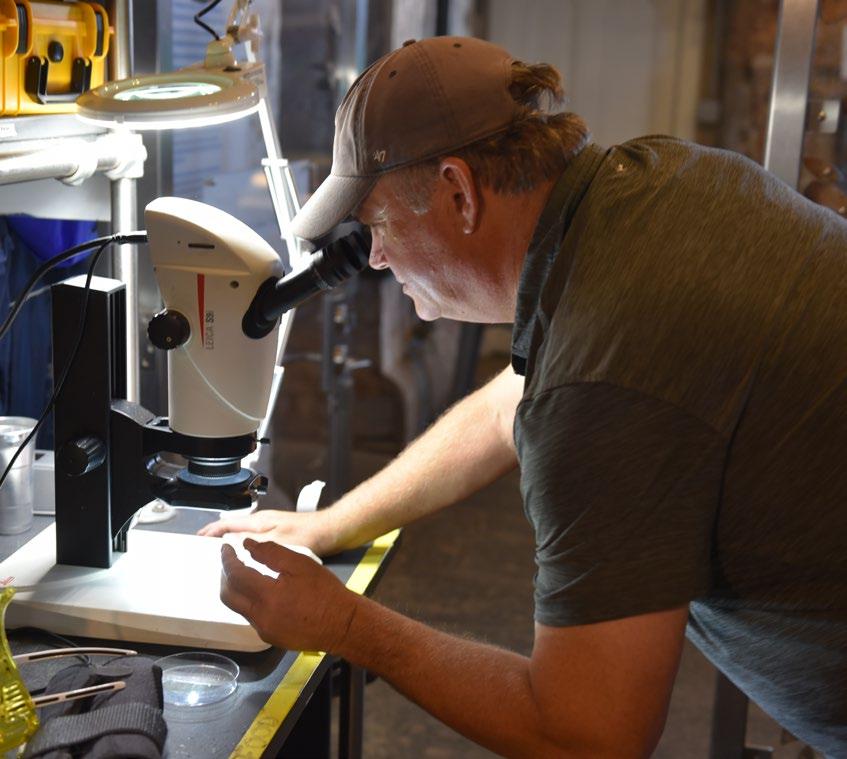
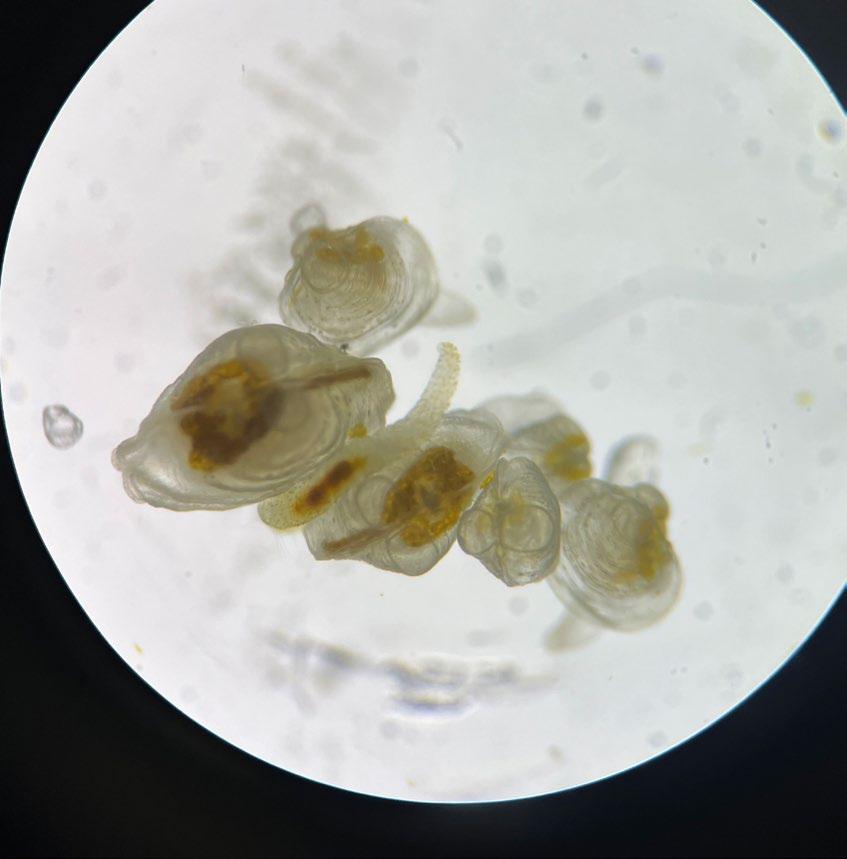
shed coordinator for EPA Region 3.
For all of these reasons, Somers and colleagues say, the EPA generally plays a “supportive” role in freshwater mussel propagation, whether that be providing the service of an in-house dive team to help place new mussels in waterways, lending technical or scientific expertise, or in certain occasions providing funding: The agency helped secure about $750,000 in funding for the Bartram’s Garden hatchery via the federal Bipartisan Infrastructure Law.
Ultimately, agency staff believe mussels are an important “tool in the toolbox,” to blend with more traditional engineering and pollution control measures, even if their exact utility is currently fuzzier for some purposes than others, says Megan Mackey, national estuary team lead for EPA Region 3.
“EPA is very supportive of that marriage of traditional and innovative,” Mackey says. “Those nature-based technologies complement the tried-and-true engineering ones.”
Our greatest success environmentally has not been asking nature to heal itself. When we remove the stressors that come from people, then nature heals.”
john jackson, Stroud Water Research Center
Half-shell full or half-shell empty?
Still, there’s that little question of the Bartram’s hatchery.
Jackson believes it’s too much, too soon. He’s concerned about the lack of historical records on where freshwater mussels naturally existed. He notes the bivalves are not an indicator species that belong in just about every healthy water way. Combing Pennsylvania, there are plenty of high-quality streams where freshwater mussels aren’t found. So if anyone starts placing them in rivers and creeks without an understanding of whether or not they truly belong there, he worries they could be asking for trouble.
“That’s very bad conservation biology,” Jackson says.
But even if the placement is right, Jackson questions their overall utility for cleaning up waterways. He says mussels are known to be sensitive to water pollution, which makes him question the logic that they can also be relied upon to treat it. He also worries they’ll detract from existing regulatory methods: several experts say there is talk of the EPA accepting mussel propagation in some areas as a “Best Management Practice” (BMP), a regulatory term that essentially gives a targeted entity credit for meeting pollution reduction requirements. For its part, EPA spokesperson Kelly Offner said the agency is not “currently aware” of any instances where mussels are being used as BMP, but reiterated that the agency generally supports their use.
“We recognize the important ecosystem services that mussels and other bivalves provide. We have partnered with stakeholders on a wide array of activities to help restore and enhance mussel populations and habitat,” Offner wrote in an email.
Nevertheless, Jackson says the whole idea reminds him of the mid-20th century philosophy that waterways were “self-cleaning,” and says he’d prefer focus to be kept on reducing pollution at its source. Indeed, known pollution sources such as nutrient and pesticide runoff from human landscapes continue
to contaminate the region’s waterways, as do billions of gallons of annual sewage overflows from Philadelphia’s aging sewer systems.
“Our greatest success environmentally has not been asking nature to heal itself,” Jackson says. “When we remove the stressors that come from people, then nature heals.”
Klein says the Bartram’s hatchery PENNVEST funding is in the form of a loan, which ostensibly will be paid back when the hatchery begins to sell mussels, potentially to regulated entities. But she freely acknowledges that the whole model is not guaranteed to work, and that mussels are not a silver bullet to clean up long-stressed waterways in any event.
“I think if we can work to restore these animals into our streams where they were historically abundant, there’s a lot of value in that,” Klein says. “At the same time … this is not going to solve the problems that we have with clean water.”
There’s also a solid upside for Bartram’s Garden. Staff will use the public portion of the new building to further the park’s mission of reconnecting nearby underserved neighborhoods with their river. New facilities will include public science labs and a kitchen space for use by Sankofa Community Farm.
The activity going on in the hatchery next door will also help demonstrate to visitors the importance of striving to clean up the watershed, says Caroline Winschel, director of development and communications at Bartram’s.
“We see the importance of seeing this project advance,” Winschel says. “It’s very exciting for us … to think about world-class science happening here in a public park, and to think about being able to make that accessible and make that part of how the neighborhood thinks about the river in our backyard.”








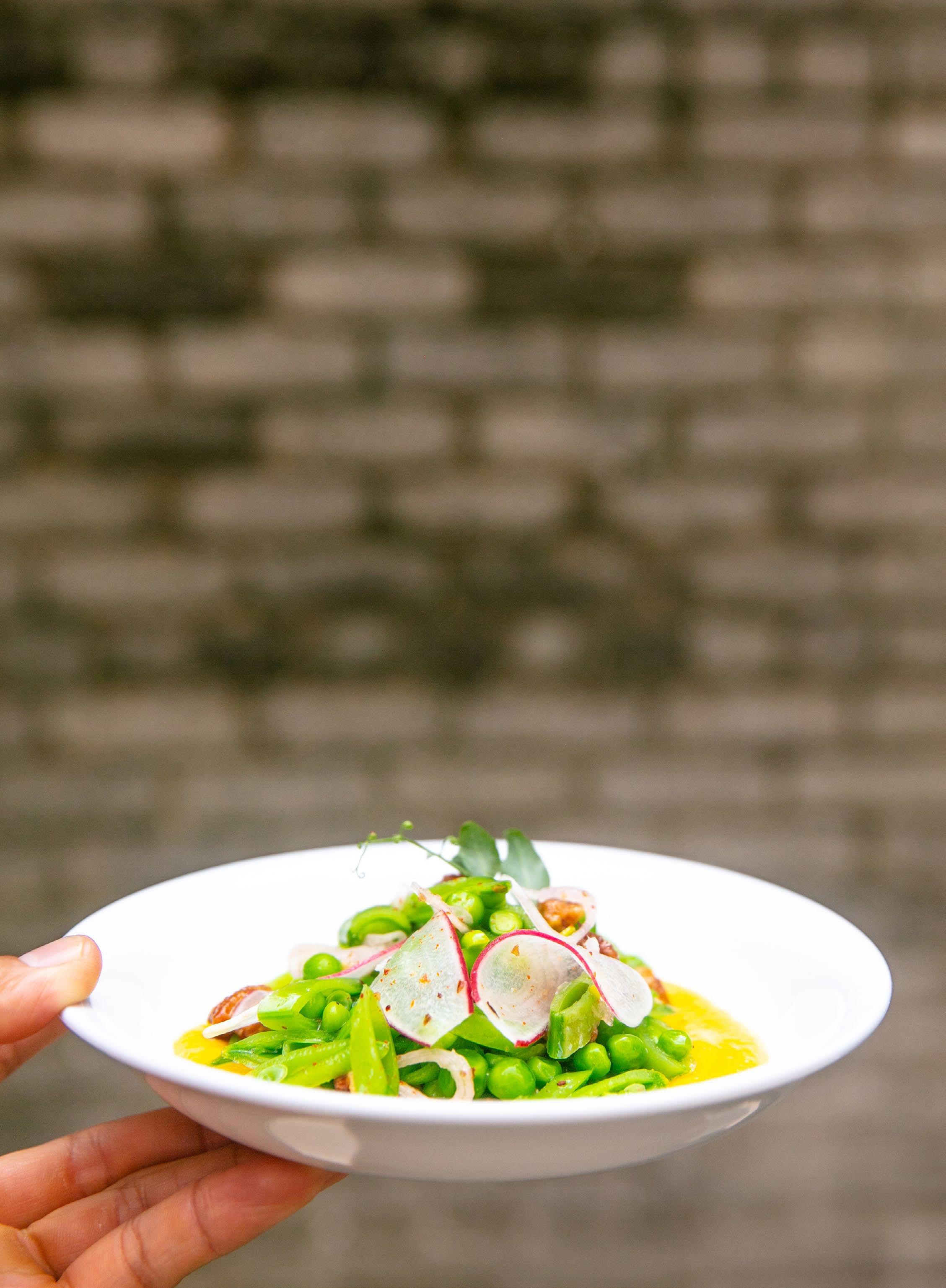
GRID HAS BEEN WRITING ABOUT FOOD SINCE OUR BEGINNING. It’s not just because we enjoy eating and thinking about what we’ll eat next, though we do. It’s because it matters. ¶ It takes a lot of resources to produce the food we eat. More than half the land area of the United States is devoted to growing crops and grazing livestock, according to the USDA. Irrigation comes in second on the list of water uses according to the U.S. Geological Survey, and agriculture is responsible for 10% of our country’s greenhouse gas emissions, based on EPA figures. Out in the oceans, 90% of the world’s fisheries are maxed out or overfished according to the World Bank. The impact continues through the food supply chain, with more than a third of our food (and the resources that went into it) wasted. Changing how we eat can change the world. ¶ Your diet can be a DIY project, or you can learn from the professionals. In this issue we reach into the vault to share recipes you can cook at home. We also shine a spotlight on establishments old and new that can teach us a few things about sourcing food and cooking it, reducing food waste and rescuing the leftovers. ¶ As we look forward to holiday feasts, we hope this issue inspires you to dine and cook better this season — and the entire year.


BY DAWN KAWN
As a kid, Wyatt Piazza connected with the natural world by helping his dad out in the family vegetable garden. He holds dear the memories of foraging with him in the woods of Vermont during summer vacations.
In his work as a chef today, Piazza creates vegetable-forward recipes for Kiddo, the restaurant he and his wife, Elizabeth Drake, opened last year in Washington Square West. The pair agrees that it isn’t enough if a dish looks, smells and tastes good; it must also make the world a better place. At Kiddo, food strengthens ties between the Earth, the local community and Pennsylvania producers. Earlier this year it was ranked as the number five top new restaurant in the country by USA Today.
Piazza and Drake met while studying at
Cornell University. “We actually met working in a restaurant — of course,” Drake says. And they knew that they wanted to open their own restaurant one day. They were drawn to “the nexus between food and the environment,” Drake says. “Food [is] the thing that connects us to the Earth almost more than anything else.”
Partnerships with Honey Brook Harvest Collective, Kneehigh Farm, Hill Creek Farm and Horse Shoe Ranch, among others, fuel the pair’s mission to weave sustainability into every plate served.
Kneehigh Farm delivers fresh produce boxes each week for both the kitchen and community members who pick up their orders at the restaurant. Their menu varies to accommodate the changing seasons and availability at local farms; they recently received 300 non-GMO, free-range guinea fowl
Wyatt Piazza puts vegetables at the center of the plate at Kiddo, his restaurant in Washington Square West.
from a Honey Brook grower — on a handshake agreement — for the dinner menu.
Although some customers expected a vegan menu, Piazza and Drake focus on making each dish adaptable for any diet. Piazza begins with a vegan base and doesn’t make non-vegan ingredients essential to most dishes. For example, on the brunch menu, a homemade sourdough muffin with smoked chestnut mushrooms, tomato jam, basil pesto and a side of house potatoes is perfectly delicious with or without a sunny-side egg on top. Including complex textures in each dish is a hallmark of Piazza’s cooking.
“I’m really happy a place like this exists,” says Kiddo regular Allyson Hardy, who likes the importance the staff places on vegetables and sustainability. She dines often with her fiancé, who is vegetarian and doesn’t drink alcohol. “We trust the bar to make him something fun,” she says. “It’s nice that we both feel so taken care of.”
Piazza and his staff work hard to make sure nothing goes to waste; leftover apple bits from a tempura Honeycrisp dish, for example, are used to make an apple shrub for the bar. And whatever can’t be crossutilized goes into the compost bin collected by Circle Compost
Kiddo was named after an experience Piazza had while managing a culinary garden in California. One day, a child ran up to a giant Berkeley tie-dye tomato — red with green stripes; he picked the tomato and shoved his face into it. Juice was running everywhere, Piazza says. The tomato passed the taste test, and Piazza says that kiddo’s enthusiasm stayed with him.
“I do this because I love it,” Piazza says. “It just pours out of me from my life and my experience. The food and the dishes, I put everything that I have into it. And I’m really blessed that people like that.” ◆


Two veterans of the sustainable food movement share how they’ve persevered through the decades
BY EMILY KOVACH
There is nothing easy about running a small business, especially when that business revolves around food. In most restaurants, there’s the mountain of to-dos that must be accomplished before the doors even open; the never-ending puzzle of scheduling employees; the toothy-smiled rigor of providing seamless hospitality; and actually serving up good food. For producers and suppliers, the challenges are related but different: staying on top of
regulations, licensing, taxes and invoicing, plus all of the logistics of growing/catching/ foraging/processing products and finding avenues to sell them.
These challenges exist even before factoring in sustainability: building community, treating employees and customers with dignity, reducing waste, lowering your carbon footprint — and maybe even turning a small profit. To pull this off is an extraordinary endeavor.
What inspires an entrepreneur to assume this mantle, and what keeps them in the fight,
not just year after year, but across decades?
We sat down with two leaders in the local sustainable food community to find out: Amanda Bossard, owner of Otolith Sustainable Seafood, and Ellen Yin, founder and co-owner of High Street Hospitality Group. These visionaries have been at the forefront of sustainable food systems for a generation. Both started out before “sustainability” was a mainstream buzzword and they’ve adapted and innovated their respective ways into the mid-2020s.

in 1992, Amanda Bossard left Fishtown, where she’d lived all her life, to study marine biology at Alaska Pacific University in Anchorage. After graduating and working for the Alaska Department of Fish and Game, she switched gears in 1999 and entered the world of commercial seafood. She worked aboard a 65-foot schooner for a commercial fisherman named Murat Aritan (also a native Philadelphian who soon became her husband). Bossard then founded a wholesale seafood distribution company with a focus on sustainability. She named it Otolith, a nerdy reference to a salmon’s ear bone.
Otolith’s wild seafood, including salmon, halibut and shrimp, is caught and processed in Alaska, where the couple still lives for part of the year. It’s then shipped to Philadelphia where it’s stored and distributed to wholesale accounts and retail customers throughout Pennsylvania (find it at Riverwards Produce), New Jersey, Delaware and New York City.
What were the beginning days of Otolith like? Murat would catch the fish and I’d make phone calls, letting people know what we were catching, when it would be landing and what the opportunities were to have it custom-processed and sent to them. It was leaning off the side of the boat trying to get a cell phone signal in the middle of the ocean — that’s what it was in the beginning.
Was doing this kind of business in a sustainable way always important to you? Yes, and I look at sustainability from a science-based perspective and also from the fact that the quality really does matter. In order for wildcaught seafood to be sustainable, it has to be part of something people are interested in learning about. My commitment has been to make this idea more mainstream, not some niche-y thing on the periphery. I want Otolith to be a catalyst for redefining industry standards.
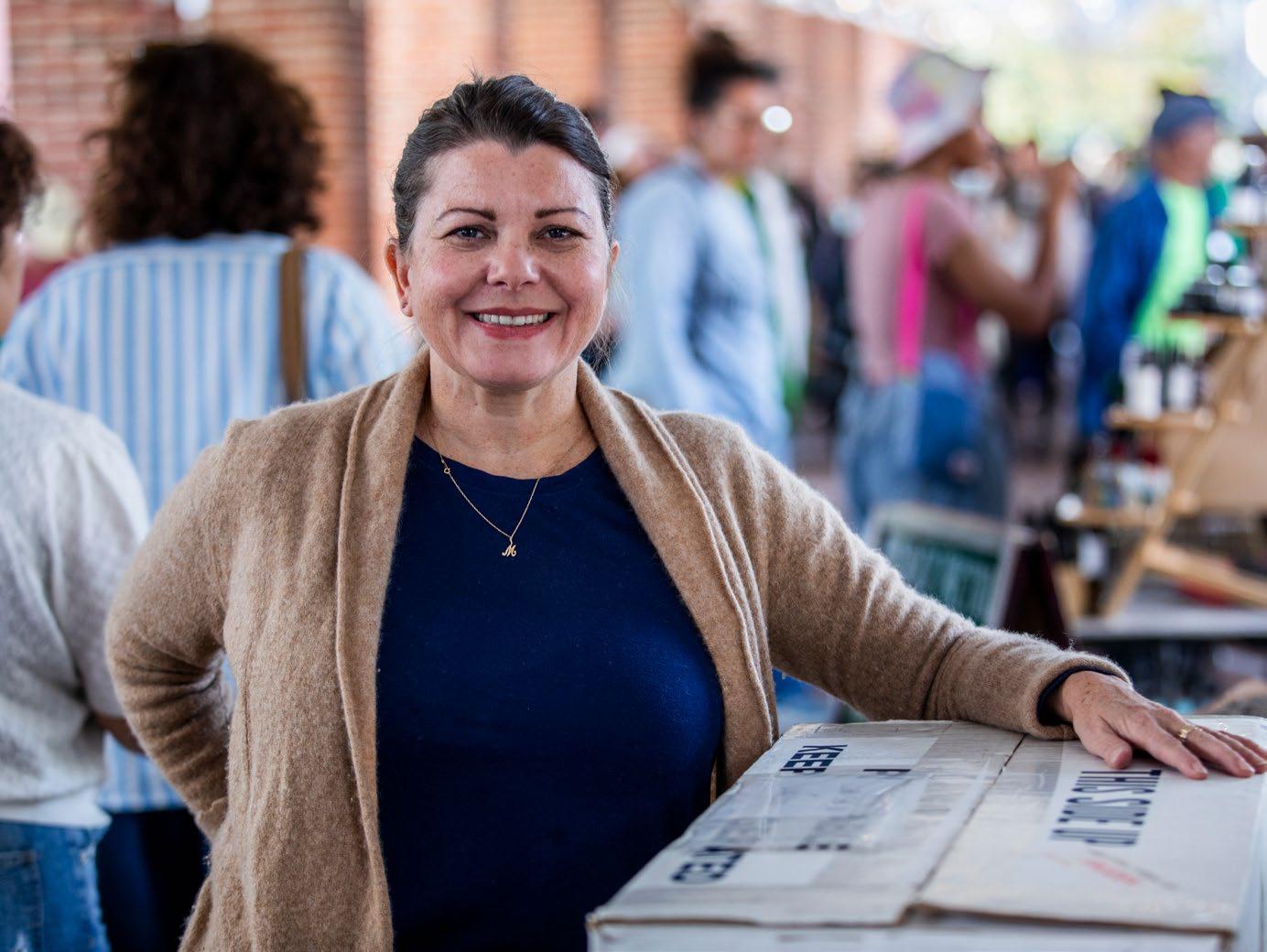
One of the reasons I stayed on the boat even though it was hard was that I wanted access to wild-caught seafood to be able to eat it and feed it to my kids.”
AMANDA BOSSARD, Otolith Sustainable Seafood
What does it look like to run a seafood distribution company in a sustainable way?
All of our specialty seafood is harvested in a protected marine area that is only accessible to low-impact harvesters, and that excludes trawling, which is one of the most problematic fishing practices in the world. [Ed. note: Trawling is an industrial method of fishing where a fishing net is pulled through the water behind one or multiple boats.]
When considering a new processing plant, what I always do first is buy and inspect their product. I want to know how it gets handled and what the quality is like. I’m always looking for the best, most consistent nutrition and flavor. I use these pillars as my guide when I’m buying custom services from small processors, and I see if I can request special things like shorter processing times and various cut and portion sizes to reduce packaging. It’s all about the relationships; these are people in small towns with small populations and a lot of producers and processors in Alaska know me.
What are some of your greatest challenges? There are so many obstacles to compensate for. Mainly, though, the margins aren’t great, the competition is enormous and more companies are getting stock market exchange funding to go corporate.
Have you noticed your customers’ attitudes toward sustainable seafood change over the years? There are a lot more ways to get information about sustainable seafood now and I’m thrilled about that. When I first started Otolith, my retail consumers were older people, but I have a lot of younger customers now so it seems the message is reaching them. Economically, I think people find it a little harder [to afford] than they used to. I remember when it was a huge deal to me where seafood was in my finances. One of the reasons I stayed on the boat even though it was hard was that I wanted access to wild-caught seafood to be able to eat it and feed it to my kids.
ellen yin has been a champion of sustainable, local dining in Philly for nearly as long as the concept has been familiar to Philadelphians. Her first restaurant, Fork, which she co-founded with Roberto Sella in 1997, has earned a stellar reputation not only for its inventive New American cuisine but also for setting a lofty standard for flawless hospitality.
Yin is a multiple-time James Beard Foundation Award nominee and winner in 2023 for “Outstanding Restaurateur;” under the umbrella of High Street Hospitality Group, she’s opened multiple restaurants, including High Street on Market and a.kitchen; and she’s helped propel the careers of a varsity squad of hospitality pros including chefs Terence Feury, Andrew Wood and Eli Kulp (now the culinary director of the group).
When did you first encounter the concept of sustainable food sourcing? I was tired of eating at restaurants where the menu never changed, so it started with seasonality. Fork’s first chef, Anne-Marie Lasher, and I worked at the White Dog Café — I was a bartender — and we’d both been indoctrinated into Judy Wicks’ philosophy about community and working with farmers and artisans. In the ’90s you couldn’t get everything farmto-table, there wasn’t even that term yet. For me, it was about creating a local ecosystem and supporting the local economy.
How did you communicate the philosophy of farm-to-table to your customers? It’s not that we had to convince people, but we did host lots of farm dinners to engage our guests with what we were doing. And that’s just being passionate about it, not trying to “educate,” just sharing our beliefs and making it as fun as possible.
Has the availability of locally-grown products changed since 1997? In the beginning, it was
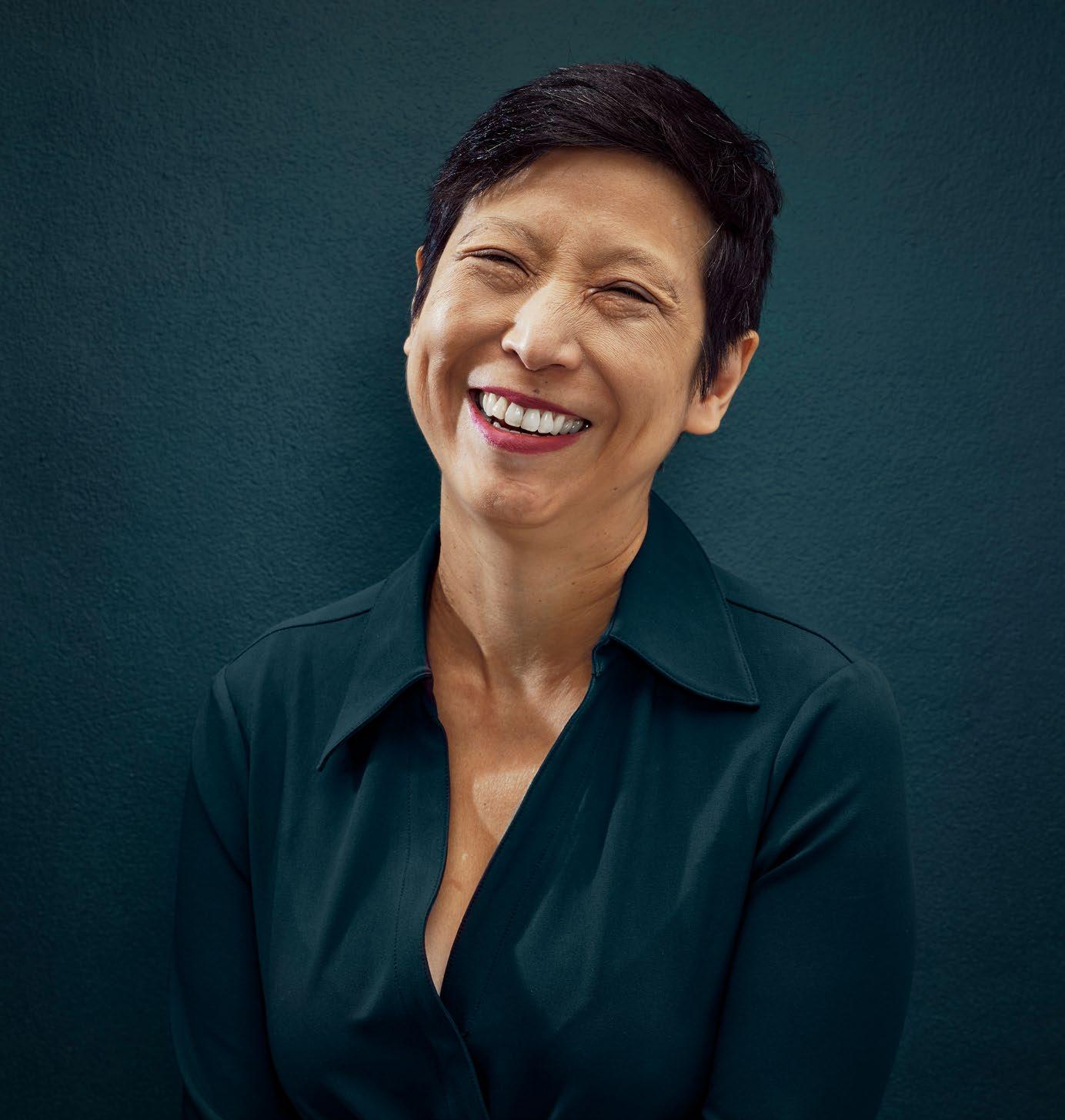
mostly herbs, tomatoes, basic produce, but that has changed ten-fold now. You can buy grains, meat, dairy products and cheeses … so many different products. Our food ecosystem has evolved so much over the past 25 years.
What are some of the challenges of sourcing this way? The biggest roadblocks initially were that small farmers didn’t have mass distributions systems or accounting systems and sold things by the bushel, which makes it hard to cost things out. Like “10 sprigs of thyme” on a handwritten invoice — what does that even mean? But farmers have gotten more sophisticated and places like Lancaster Farm Fresh Cooperative, Green Meadow Farm and Plowshare Farms distribute for smaller farms and sell everything by the pound, which makes things more efficient on our end.
What are some of the joys? It’s all about personal connections, creating an ecosystem. It’s knowing that people share your
values. When you hit it off with a new vendor, it’s very invigorating and fun. For creative types, it’s exciting to frequently have a new palette for inspiration, especially in a business that’s so fast paced.
You’ve taken a holistic view of sustainability that goes beyond food. Can you explain what that means to you? Creating a sustainable business model really has to do with labor. In this industry, there’s often no health insurance, no schedule — especially in the kitchen — no discussion about hourly rates or mental health. The culture of leadership and management hasn’t been inclusive, though that is shifting. People are trying to experiment with new restaurant business models, and there are a number of bills the Independent Restaurant Coalition, which I’m a member of, has put forward. So many people want to make these changes, but it’s really hard. I connect with people across the country because I want to hear what’s working and not working. ◆
We prepare students for the whole of life.
OPEN HOUSES
Tuesday, Nov. 12 at 8:45 a.m. Grades Pre-K–4
Thursday, Nov. 14 at 8:45 a.m. Grades 5–12
Saturday, Nov. 16 at 9:30 a.m. Athletics, Grades 5–12

Thinking about being a beekeeper? Or simply fascinated by honeybees?

Become a member of the Philadelphia Beekeepers Guild!
The Only All-Gendered Pre-K to 12 Quaker School in Center City. Take our survey on local urban waterways to help push for a healthier future! You could win a $50 gift card. RIVERWAYS COLLABORATION WOULD LIKE TO KNOW HOW YOU



Join an exciting and passionate group committed to a sustainable future dedicated to caring for and educating about bees. We host many events and offer a variety of classes and workshops with a lot opportunities to learn and volunteer. No previous knowledge is needed!
L ear n more – v isit phillybeekeepers.org or email info@phillybeekeepers.org



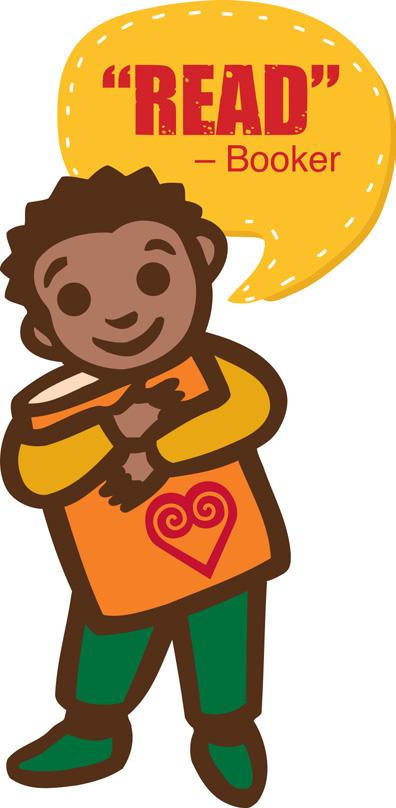
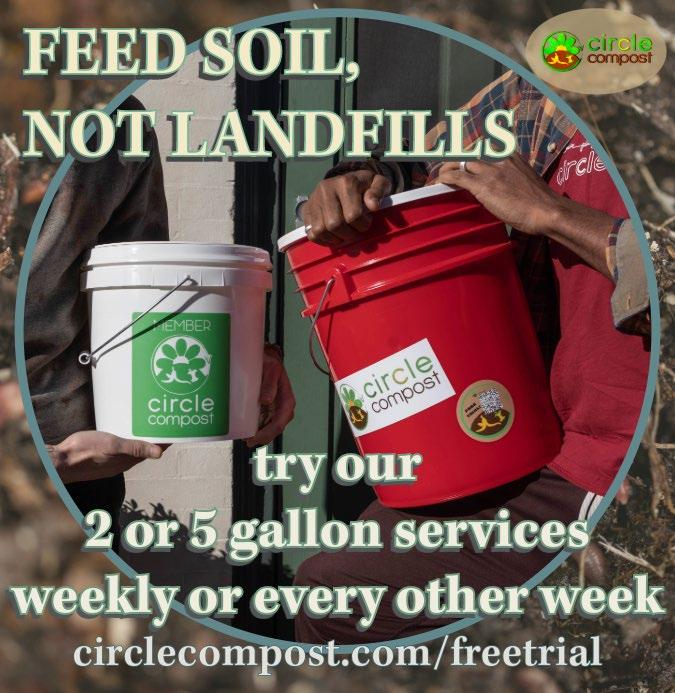









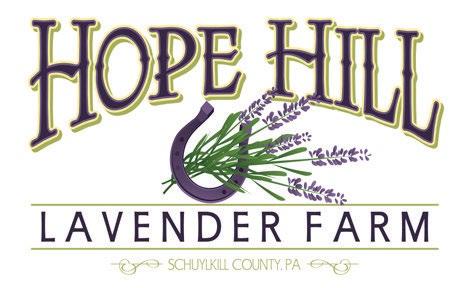





Experience the NextFab makerspace through these open-to-the-public two-month Maker Series. This comprehensive program includes 5-6 pre-scheduled classes, equipment access, and a completed project to take home. Gift card options are available for the perfect present for aspiring makers. Purchase at nextfab.com
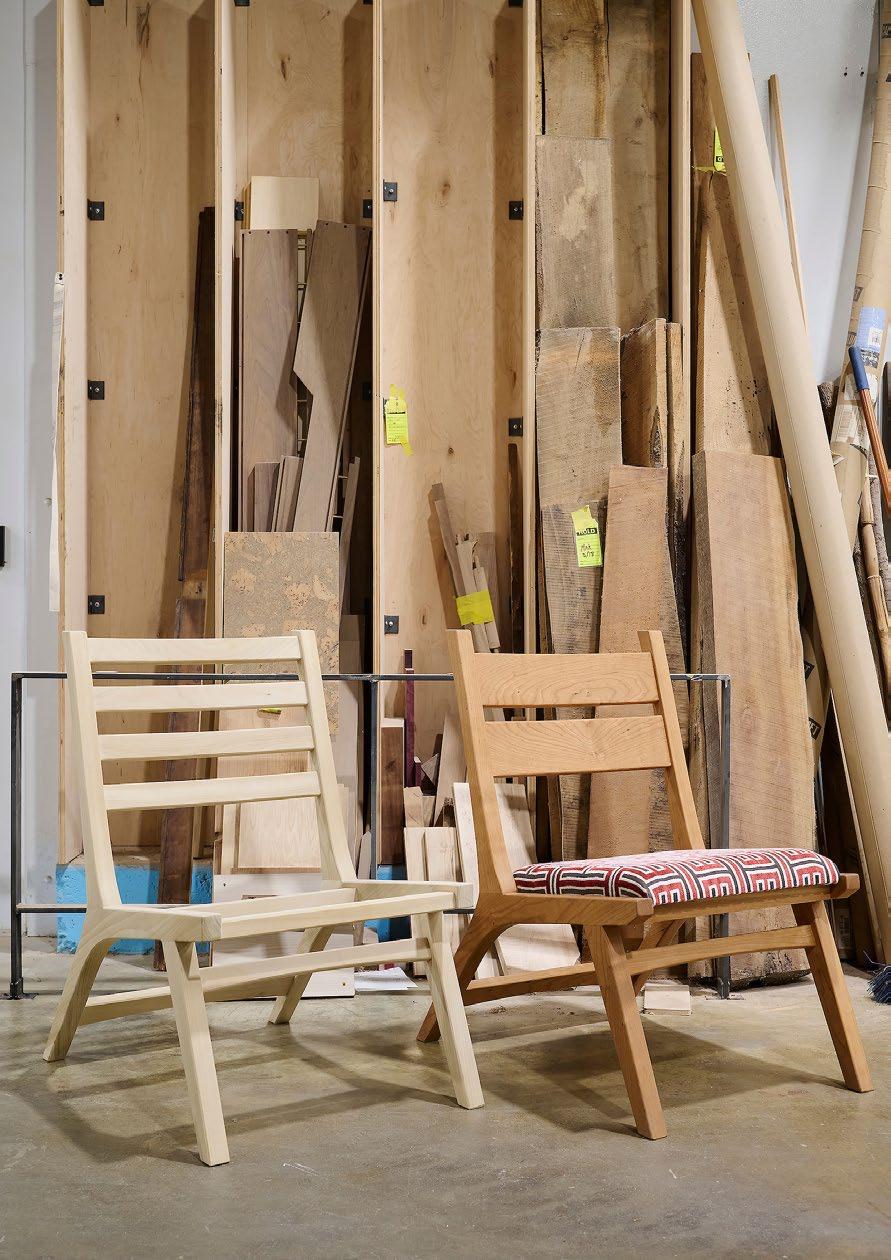
1
Fine Furniture Making: Craft a Mid-Century Modern Lounge Chair
Elevate your woodworking skills with our intermediate-level Maker Series in fine furniture making, where you’ll embark on the exciting journey of crafting your own MCM-style lounge chair. This comprehensive course focuses on building essential skills for any fine furniture maker, such as precise wood milling, template and profile cutting on the router table, and mastering mortise and tenon joinery using the Festool Domino system. You’ll also gain practical upholstery skills and learn best practices for achieving flawless wipe-on wood finishes.
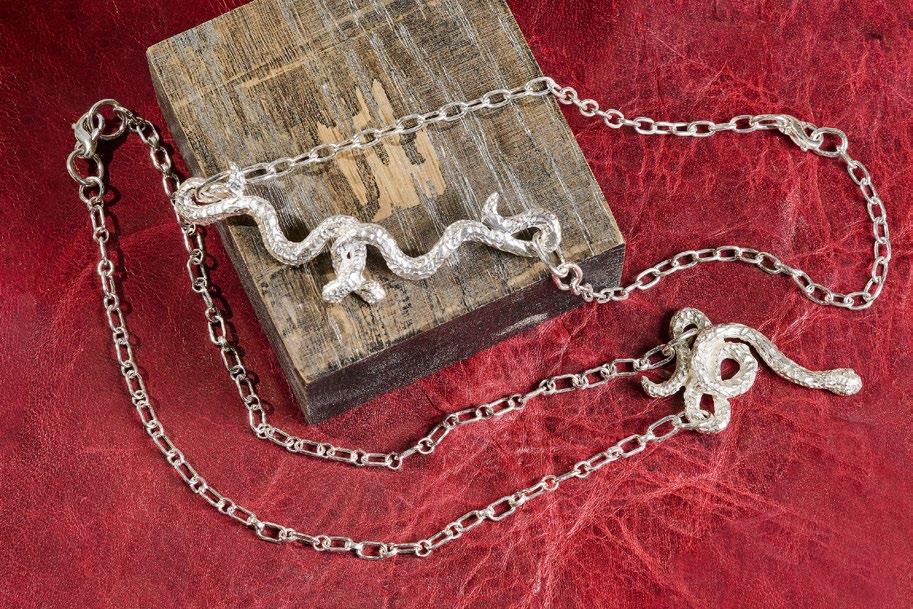

PRICE: $799 1
● Wednesdays, January 8th – February 9th
PRICE: $799
2
Master the lost wax casting process from the creation of wax models to pouring molten metal to create your own custom jewelry components and multiples. Learn essential creative casting techniques, master basic carving tools, and gain a comprehensive understanding of this step-by-step immersive experience with the lost wax casting process. Complete this series with finished jewelry components ready for wearing or further finishing, and learn about creating reusable silicone molds for the effortless production of multiples! Featured: talented longtime member Zoe Marchiano who has ramped up her wax carving game in the jewelry studio.
● Mondays, January 13th – February 17th
PRICE: $799
3
Forging and Fabricating: Make a Sheet Metal Vase
Learn metal forging and fabrication techniques to create a one-of-a-kind flower vase in our metal shop! Whether new to metalworking or a seasoned metal sculptor, this series will teach you how to transform ordinary sheet metal into a stunningly functional object. Gain the skills and practice to design and craft metal bowls, vases, and dishes. All materials are included in the price.
● Sundays, January 12th – February 16th
Celebrate the season with a touch of Philadelphia charm! Whether you’re chanting E-A-G-L-E-S, taking on the Rocky Steps, or indulging in a classic Philly cheesesteak, these gifts are perfect for any phantic in your life.
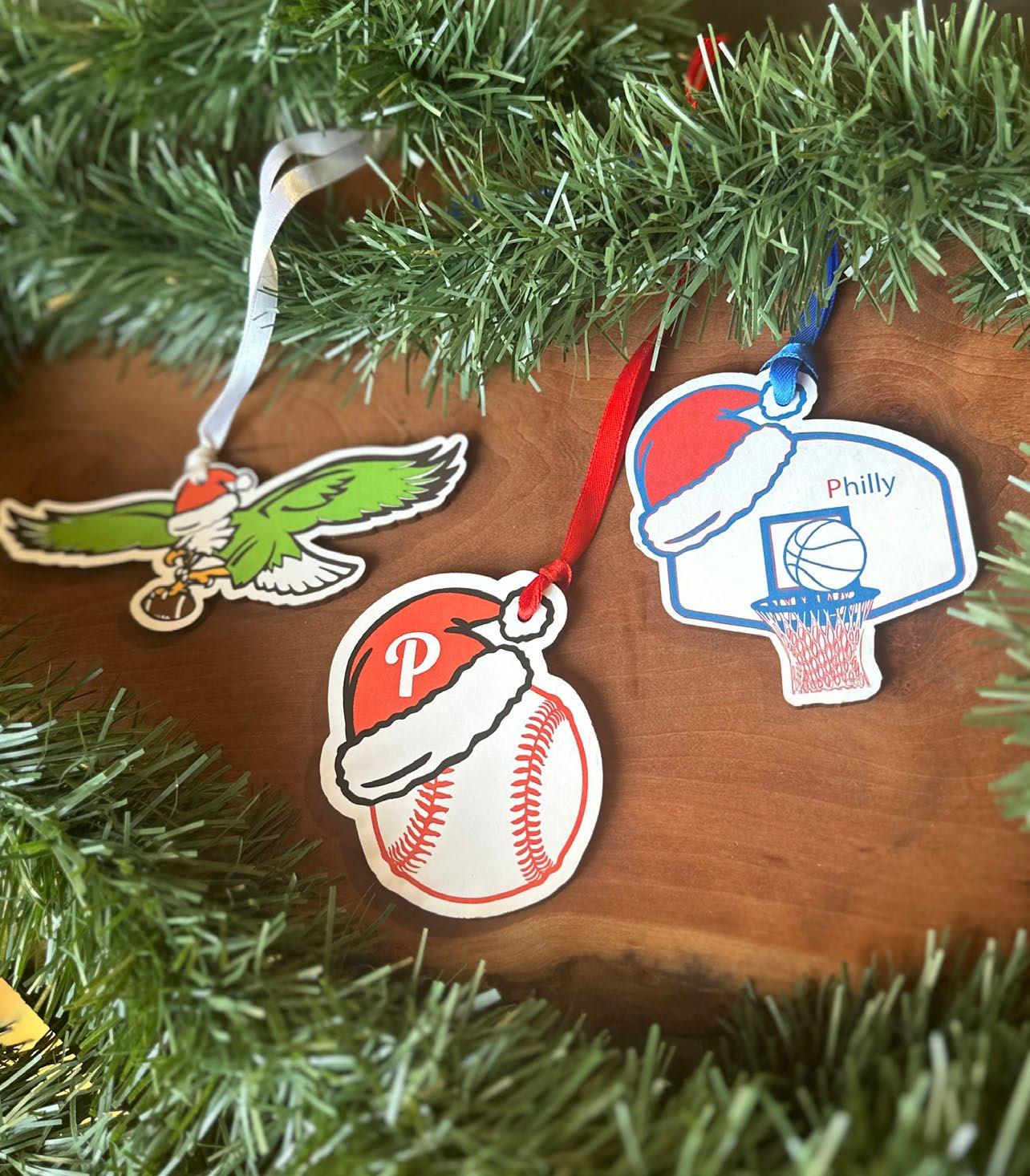
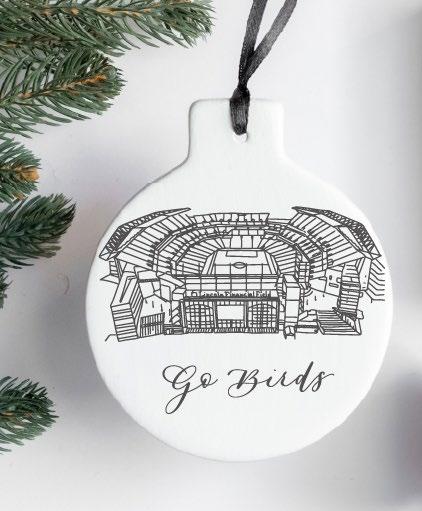

Go Philly Christmas Ornaments $15 at mcaseydesigns.com
Bring the City of Brotherly Love straight to your tree with these handcrafted Philadelphia-themed ornaments. Adorned with iconic Philly symbols, these unique pieces capture the essence of the city in a festive and fun way.
2
Linc: Go Birds Ornament $30 at girlholdingapen.com
Show your Eagles pride with the LincGo Birds ornament. This handcrafted porcelain ornament features intricate designs and calligraphy, capturing the spirit of the Philadelphia Eagles.
3 Jawnaments
$15 at jawnaments.com
Hyper-local holiday ornaments that show the love for Philadelphia, its neighborhoods, favorite places, and things! Handmade in Philadelphia with love, choose from the PPA Parking Ticket, Johnny Brenda’s, Ring the Bell Jawnament, and more!
MAKER PROFILE

Milan Marshall & Malik Tyler of Ivy Eye
Milan Marshall and Malik Tyler are the design minds behind Ivy Eye, a fashion brand that’s redefining sustainable style. With a shared passion for creativity and community, they’ve built a platform that celebrates unique, handmade designs. By focusing on eco-friendly materials and innovative techniques, Ivy Eye is not only making a fashion statement but also a commitment to a more sustainable future.
$25 - $65 UGO Candlestick holders at untitledco.design
Inspired by crystalline forms, these tapered candlestick holders are individually sculpted into faceted shapes. Using Ash sourced locally from Pennsylvania woods, the solid brass ferrules keep a ⅞” tapered candle securely in place. Available individually or as a set.
Genesis Book at moodiostudio.com
Celebrate local artistry with the Genesis Book. This unique collection features a curated selection of works by talented local artists, beautifully printed using a risograph printer in two vibrant colors. The perfect coffee table book for when you need a break from the everyday.
Mei Luxe
$59.95 Lychee Rose Coconut Apricot Candle at etsy.com/shop/MeiLuxe
Enjoy the delightful scents of fresh fruit and floral botanicals encapsulated in this luxurious handmade candle. Made with luxurious coconut apricot wax double wicked with natural cotton wicks in a luxurious reusable glass vessel. Comes in additional scents with an amble burn time of up to 65 hours.
$400 Poly Globe at marcdigiaimodesign.com
Crafted from high-quality wood tiles, this segmented globe was precisely created using the CNC machined and mitered together to form a hollow globe, showcasing the intricate details of the world map. Defined by country outlines lasered engraved on each facet, this globe offers a visually stunning representation of our planet. The base features a brass rod mounted at the accurate 23-degree angle of Earth's axial tilt.
Transform your home office into a productive and inspiring workspace with these fun and functional products. From ergonomic furniture to stylish decor, shop everything you need to create a comfortable and unique home office that radiates your personal style.
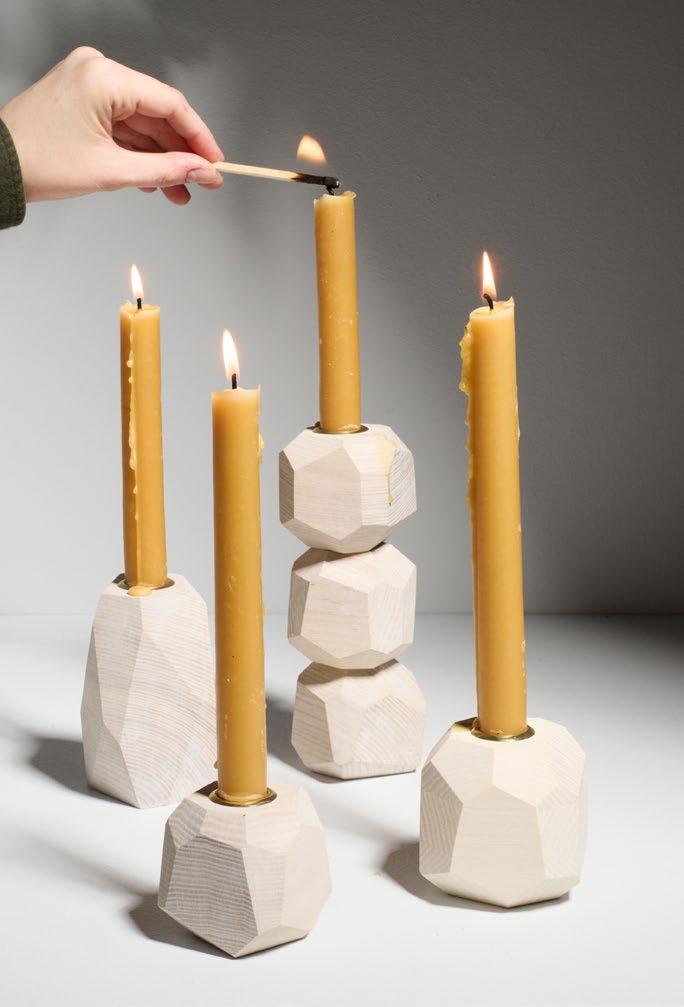
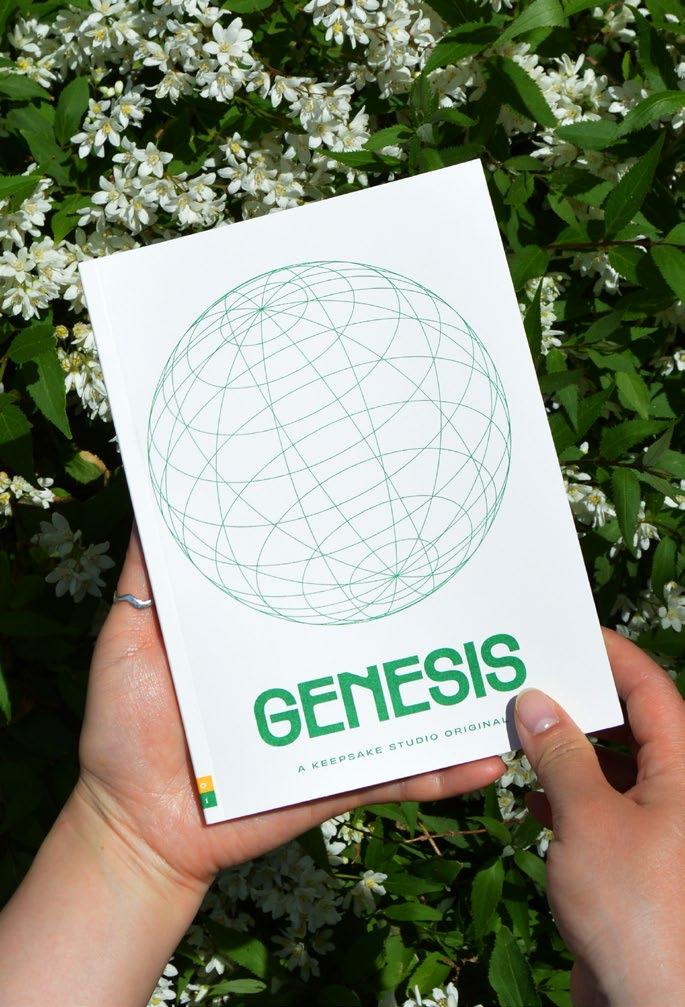
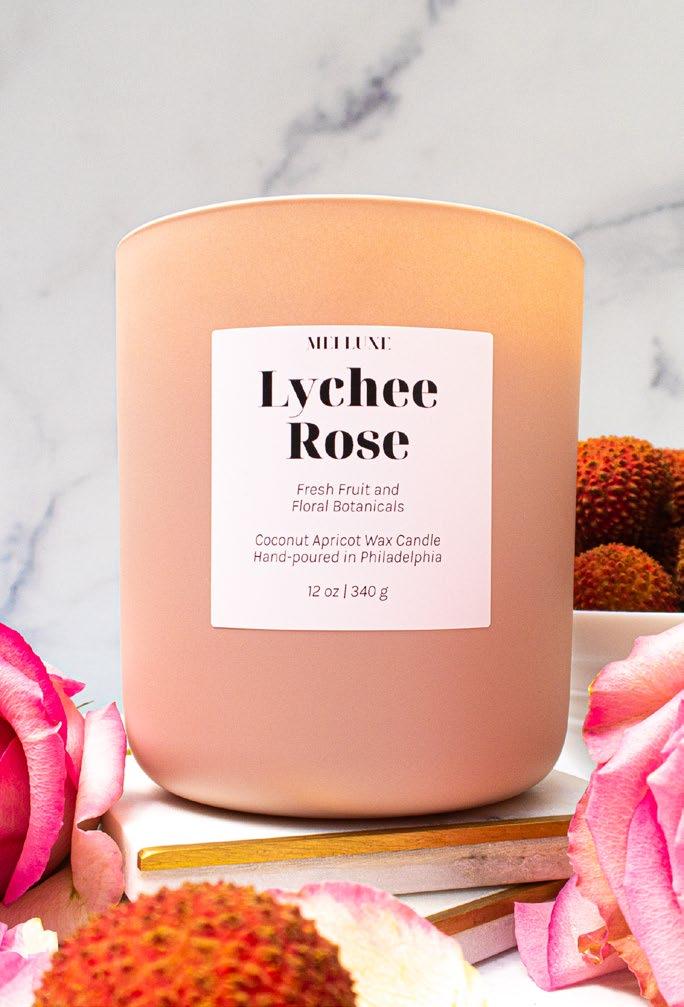



5
Friday
$2599.99 Clamshell 48” Desk at friday.furniture
This WFH desk, at just 48,” is designed to fit in the tightest nooks and crannies of your home, and can be tailored to your exact specifications with a range of modular accessories. Best of all, when the day is done it folds away, reclaiming precious space and restoring a sense of work-life balance. Comes in a smaller 36” for those extra small spaces for $2399.99. 5

6
$25-$50 Manhole Cover Coasters and Trivets at tombino.shop
Crafted from sustainable Portuguese cork, these coasters featuring manhole cover designs from around the world, offer a durable and eco-friendly way to protect your surfaces while adding a touch of flair. Each coaster is 4 inches in diameter and 1/4 inch thick, providing a sturdy and stylish base for your drinks. Comes as trivets at 7" diameter by 3/8" thick.
7
Friday
$89.99 MagSafe Phone Dock at friday.furniture
Charge your phone while you work!
This MagSafe phone holder is a drop-in replacement for the cork board in the bottom left cubby on your Clamshell 48 Desk. 3D printed from sustainable plant-based polymer and mounted on birch plywood.
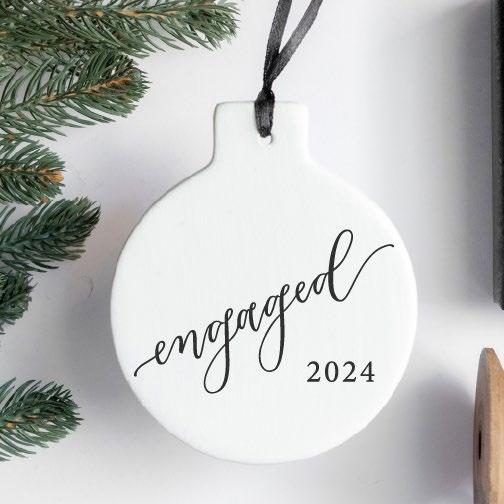
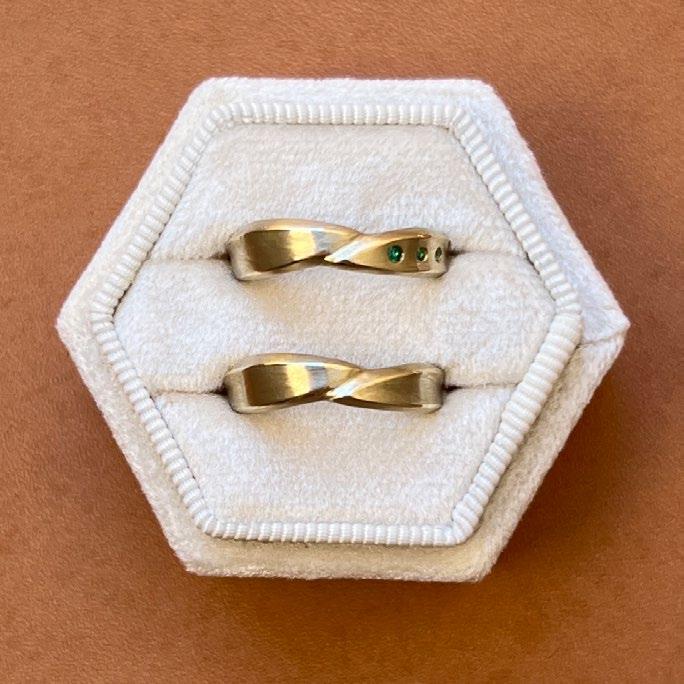

1
Girl Holding a Pen
$30 Engaged 2024 ornament at girlholdingapen.com
Commemorate a joyous engagement with this charming ornament. This elegant piece, measuring 3.5” x 4,” features the artist's signature sleek design, making it a beautiful and timeless keepsake for the happy couple.
2
Niki Leist
Custom wedding bands, 14k gold and emeralds at nikileist.com
Niki Leist elevates your special day with custom wedding bands crafted from 14k yellow gold and sparkling emeralds (price upon inquiry). Each ring is a unique work of art, carved in wax and then cast in precious metal.
3
Marc DiGiaimo Design
Wooden ties at marcdigiaimodesign.com
Elevate your wedding attire with a truly unique accessory! These handcrafted wooden ties are crafted from high-quality maple veneer laminated onto prefinished leather, ensuring both durability and style. Each tie is meticulously laser engraved, making it a meaningful gift for the groom or your groomsmen.

MAKER PROFILE
Christian Noguera, a passionate percussionist, educator, and artisan, is the driving force behind Acheré Percussion. Born in Argentina and now based in New Jersey, Christian brings his deep understanding of Latin American musical traditions to every drum he crafts. Each instrument is meticulously handmade, offering authentic sounds and unparalleled quality while staying true to preserving cultural heritage.
$40 Cotton Cyanotype Bandana at severepaper.com
This unique bandana is part of a limited collection by visual artist Yannick Lowery, inspired by Toni Morrison’s powerful novel, Song of Solomon. Crafted from high-quality cotton, this bandana features the artist’s previous collage works reimagined using the sun-printing technique of cyanotype.
$50 - $175 Abstract Figurative Sculptures at samyankellart.com
This unique collection by artist Sam Yankell explores the human form through a contemporary lens, blurring the lines between representation and pure form. Each piece is crafted using a combination of materials, resulting in a dynamic interplay of textures and finishes, creating a sense of movement and intrigue. Comes in a variety of series and movements: Lift, Yoga, and Tango series.
$200+ Sculptural Objects at kevinbhuang.com
Artist Kevin B. Huang creates unique and captivating sculptural objects, each a testament to his dedication to fine art and his exploration of form, texture, and material. Inquire about his latest creations.
$25+ Digital prints of original artworks at lyandlines.com
Elevate your space with high-quality digital art prints that draw inspiration from the artist’s experiences as a Philly-based Vietnamese immigrant, and mother. Choose from a variety of sizes and papers, all signed and titled by the artist.
Fuel their creativity and inspire their next masterpiece with these unique, handcrafted pieces! From local artists’ minds to your home, each piece will add a special touch to your home, studio, or as that truly one-of-a-kind gift.


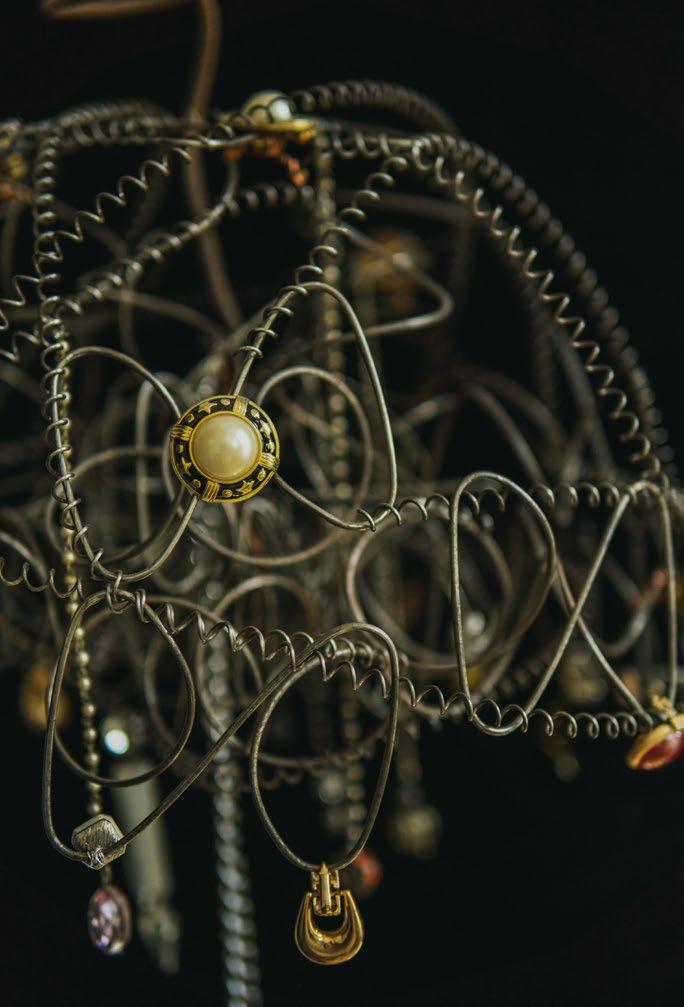


Javier Lopez Cabello of Obliqua isn’t just a woodworker, he’s a storyteller. Originally from Chile, Javier brings the magic of nature indoors through his handcrafted wooden sculptures, with his mantra of “keep sanding” always at hand. Sourcing his materials from unexpected places, whether it’s freediving in Chilean lakes for reclaimed wood or breathing new life into salvaged shingles from a demolished Patagonian barn, his commitment to sustainability prevails. His sculptures are both lamps and conversation starters. Each piece embodies a touch of wilderness, a reminder of the beauty and fragility of our natural world. By incorporating reclaimed and endangered woods, Javier encourages us to appreciate the stories these materials hold and inspires us to be responsible stewards of the environment.
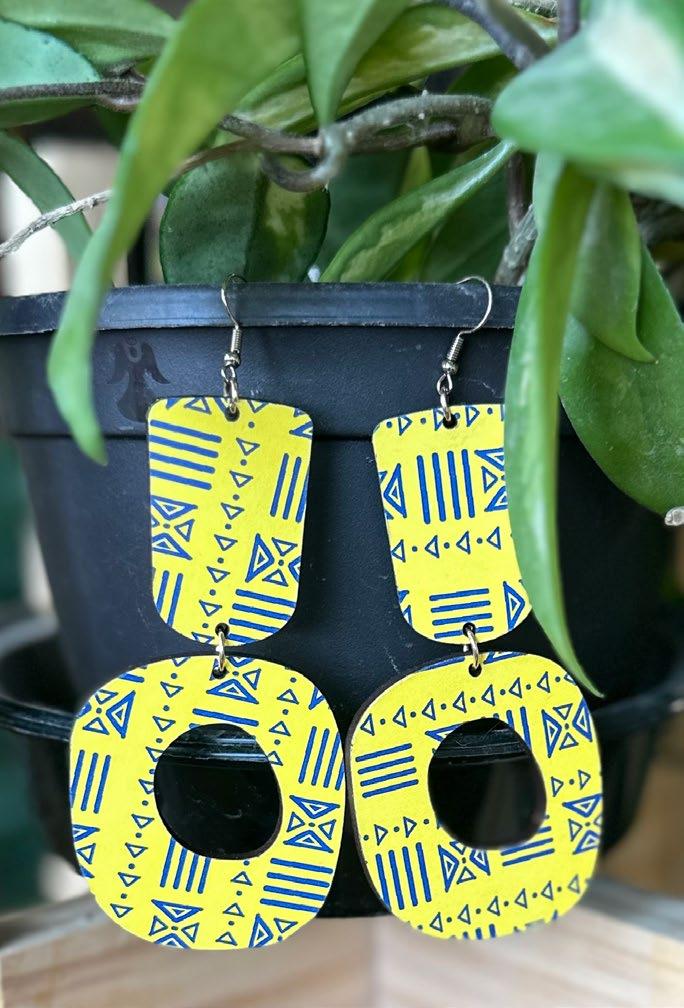

Discover unique and stylish pieces for the fashionforward friend in your life. Featuring clothing and accessories that are sure to stand out from the crowd, handcrafted for that truly special one-of-a-kind piece.
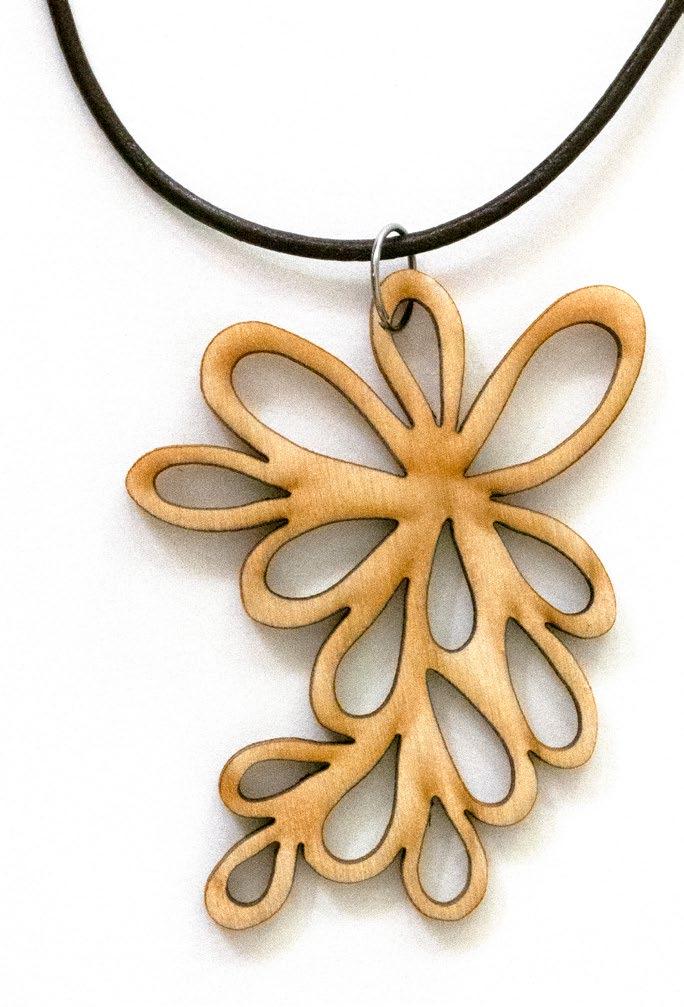

Earrings $15-$25 at mcaseydesigns.com
Handcrafted from the finest natural wood, each pair is a unique piece of wearable art, blending earthy vibes with chic flair. Comes in studs and dangles.
Linda Celestian
$25 Doodle Pendant or Earrings at lindacelestian.com
These playful pieces, laser-cut from acrylic or birch wood, capture the essence of freehand expression. Choose from a charming pendant or a pair of stylish earrings, both featuring a doodle design. 16”
3
Linda Celestian
$25 White Lace Pendant at lindacelestian.com
This elegant piece, laser-cut from acrylic, captures the delicate beauty of lace. The pendant's timeless design makes it a versatile accessory that can be dressed up or down. 16”
$135 Emerald Edge Satin Mesh Shirt at ivyeye.co
This statement piece combines the elegance of emerald green satin with bold mesh cutouts for a touch of modern sensuality. Perfect for layering or wearing solo on a cool fall or spring day, this breathable long-sleeve shirt offers a luxurious feel with the added benefit of durability, while the shoulder seam zipper ensures a comfortable and flattering fit. Only available for pre-order in sizes S-2XL.
$150 Dress at
Embrace vibrant culture and timeless style with a handprinted cotton dress from Yemisi Art. This unique garment is meticulously crafted using traditional techniques, offering a stunning statement piece for any occasion.


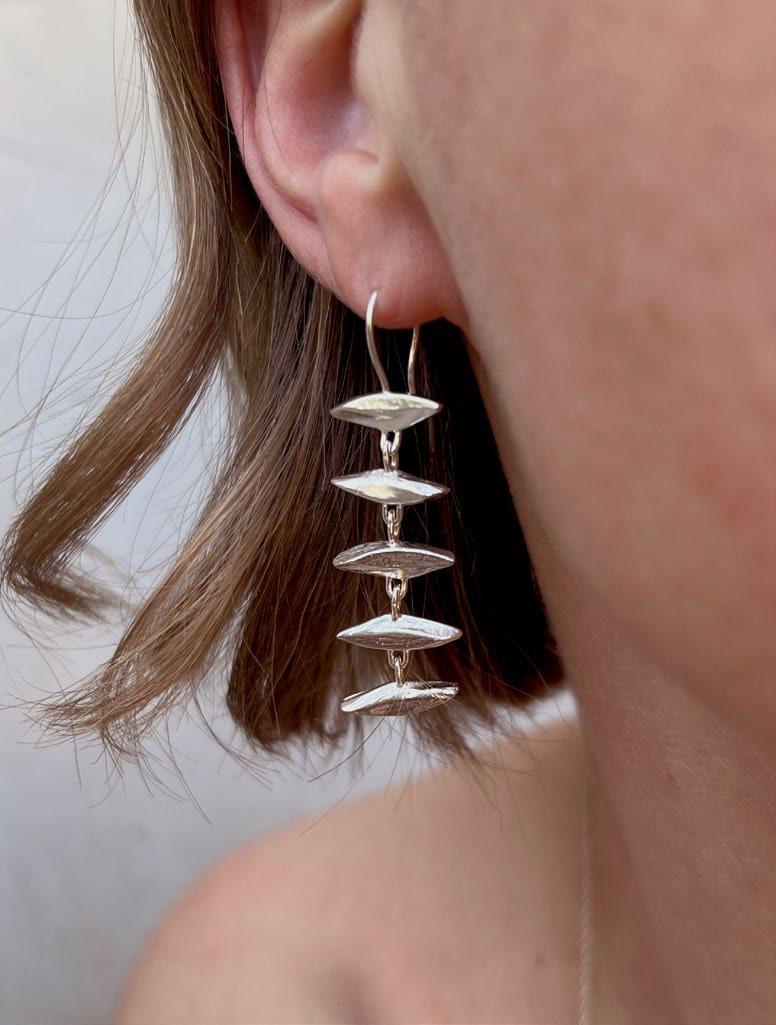


Tired of the same old holiday decorations? Discover this handcrafted collection of timeless gifts that bring lasting joy and holiday spirit year after year. Designed to be cherished for generations to come, add a touch of magic to your home.
$30 Rittenhouse Christmas ornament at girlholdingapen.com
Commemorate a special occasion or simply show your love for Philadelphia with this charming porcelain ornament. This delightful piece, measuring 3.5” x 4,” features the artist's signature design and calligraphy, making it a unique and personal keepsake.
$30 Leaves and Seed Pod ornament gift set at lindacelestian.com
Bring a touch of year-round nature charm to your home with this set of four laserengraved ornaments featuring beautiful leaves and a delicate maple seed pod, all crafted from high-quality materials. Each ornament is meticulously crafted and includes a gold ribbon for hanging, making them easy to display and add a touch of elegance to your holiday décor or as yearround accents.
Kevin B. Huang Studio Art
$12 - $350 snow(flake)mobiles at kevinbhuang.com
Handcrafted from upcycled materials and featuring intricate laser-cut snowflake designs inspired by Wilson Bentley's photography. Customize these mobiles with your own decorations and connect multiple pieces to create a grand display.



1 Niki Leist
$145 Across Earrings at nikileist.com
Earrings available in sterling silver or fine silver with 24k yellow gold.
2 Yemisi Art
$75+ Silk batik Scarf at instagram.com/yemisi_art
Elevate your style with a luxurious and unique silk batik scarf from Yemisi Art. Hand-printed and dyed using natural dyes on 100% pure silk, these scarves offer vibrant colors and intricate designs that are sure to turn heads.
8th House Reign
$50 Beverage Bags at 8thhousereign.com
These stylish and functional bags feature a spacious interior designed to accommodate bottled beverages, keeping your drinks easily accessible. Features a front zipper pocket to hold debit/credit cards and phones.
4
8th House Reign
$75 Corset belt at 8thhousereign.com
This adjustable leather belt offers a versatile and stylish way to cinch your waist and define your silhouette. Crafted from high-quality leather, the one-size-fits-most design’s unique adjustability system offers a satin lace at the back or belt notches in the front.
Choose from a curated selection of unique and eye-catching accessories designed to add a touch of personality and flair to any outfit. From handcrafted handbags to statement jewelry, these pieces will help you stand out in the crowd.



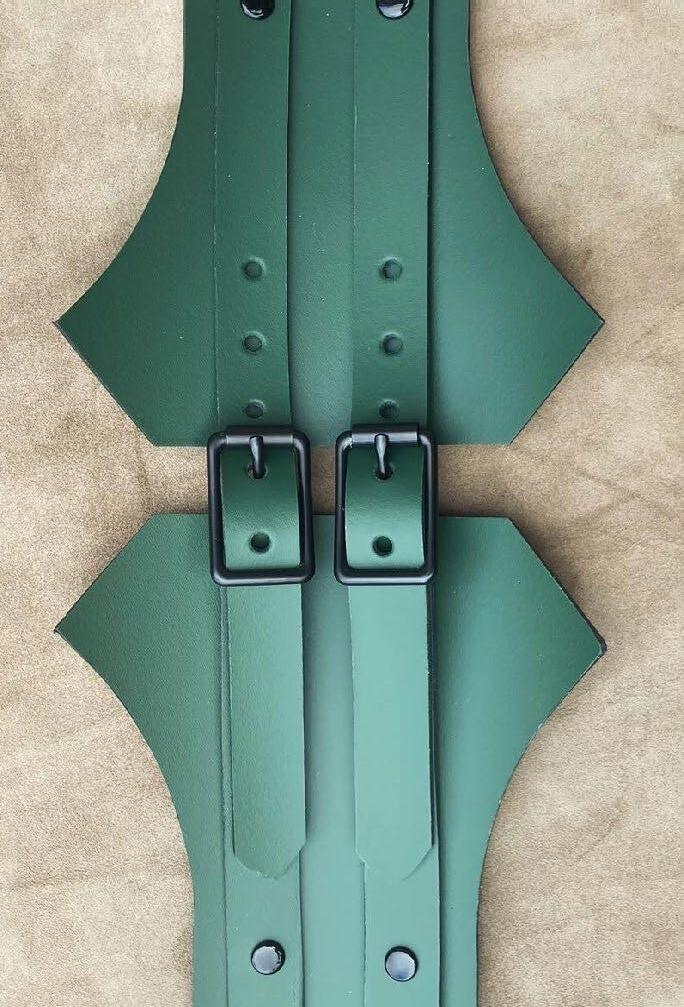

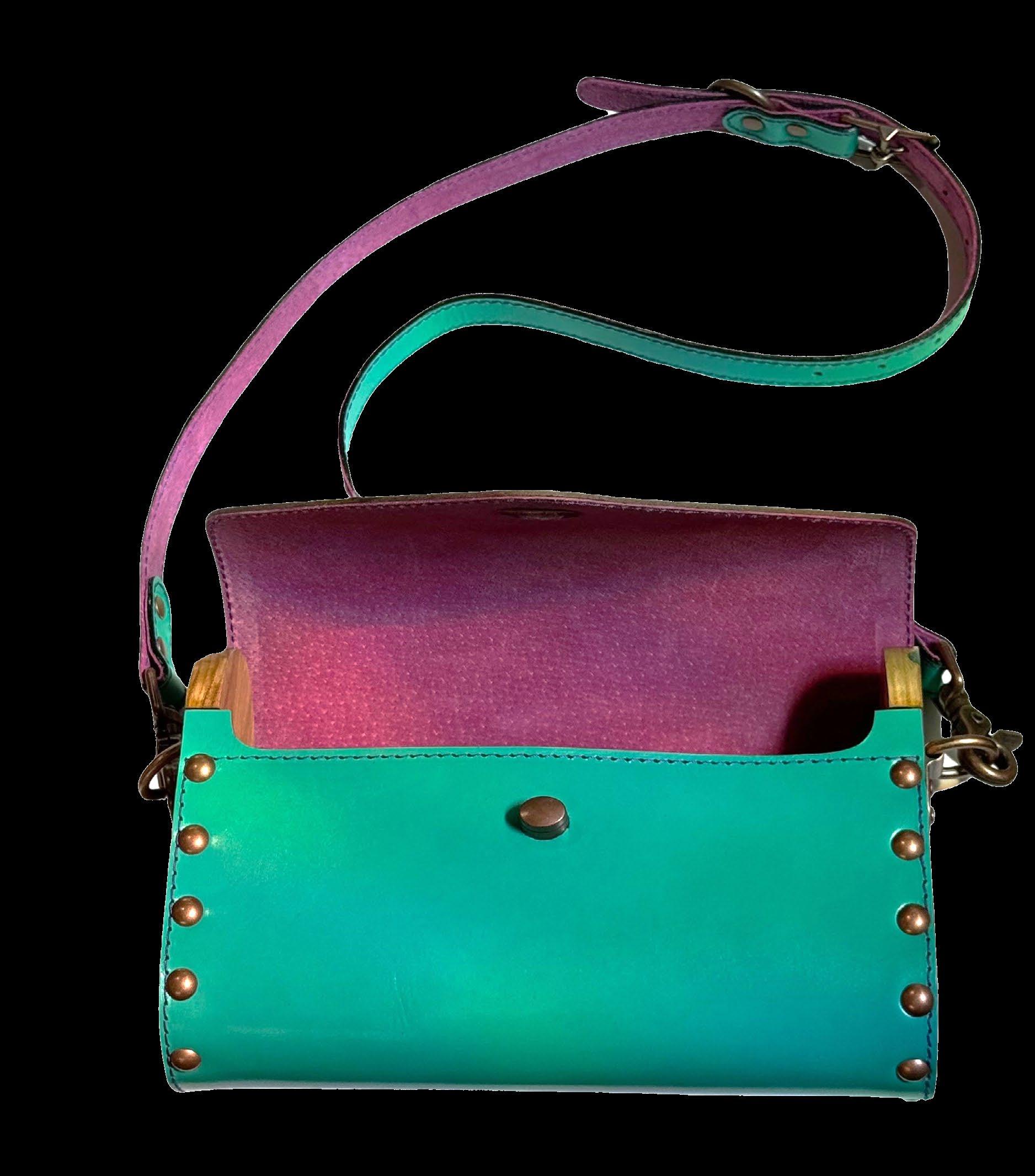

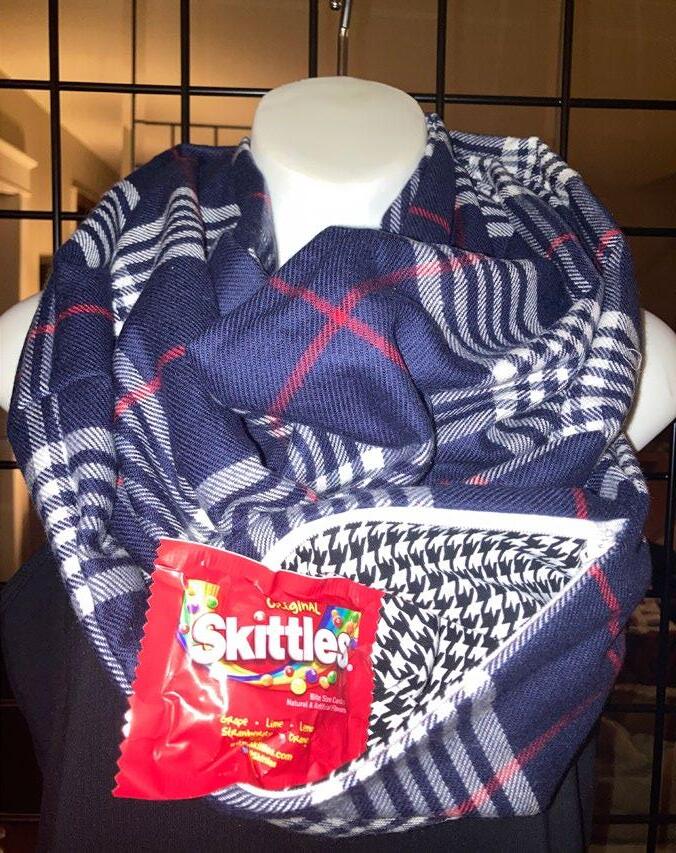
$275 Epoxy and Wood Turquoise Purse at etsy. com/shop/ekarasek
This handcrafted cross-body handbag combines the warmth of hand-carved poplar wood filled with teal pearlescent epoxy and the rich texture of Italian leather for a truly one-of-a-kind design.
Studio Art
$50+ Tiny Hand Beads kevinbhuang.com
Meticulously crafted in bronze and silver, these tiny hands are ideal for jewelry-making and fine art applications. Perfect for a statement piece in your collection or as a unique element to incorporate into your jewelry designs.
7
$40 Hidden Pocket Infinity Scarves at 8thhousereign.com
Stay warm and stylish with these cozy flannel scarves featuring a discreet hidden pocket, perfect for keeping your essentials close at hand without sacrificing your look.

$111 Ceramic Earrings at emily-arin.com
Handmade ceramic earrings that have either been glazed or painted and varnished. Fitted with custom-made gold-filled findings. Lightweight little sculptures that are made to last and fun to wear. Choose from a variety of earring designs and shapes. Receive 20% off all orders for local pick up with this code: NEXTFAB24.

Yemisi Ajayi is a Philadelphiabased textile artist with a passion for preserving and reimagining traditional Yoruba cloth techniques. Her work seamlessly blends ancient adire (starch resist) motifs with contemporary design, resulting in stunning wearable art, silk scarves, and home decor. Inspired by the skilled women who have passed down these techniques for generations, Yemisi’s creations celebrate the rich cultural heritage of Nigeria. By combining traditional methods with modern sensibilities, she creates unique pieces that resonate with both art enthusiasts and fashion-forward individuals.
Give a gift that goes beyond the surface and touches the heart. These sentimental pieces are more than just objects; they carry special stories and a touch of magic that will be cherished for years to come.

1 Compass Rose
Custom Dog Houses at compassrose-sd.com
Pamper your pup and the planet with these dog houses that are as good for the environment as they are for your furry friend. Featuring a functional green roof, each dog house is custom-built to ensure the perfect fit for your dog's size and personality. Choose from a variety of planter options to create a vibrant space for both plants and your pup. 2
M Casey Designs
$5 or 4 / $15 Magnets at mcaseydesigns.com

$510 BAMM Sterling Silver Historical Dates
Medallion Necklace at historicaldream.com
Featuring a round 2.5-inch sterling silver medallion engraved with significant dates that have shaped American history from 1619 to 2008.
Bring a piece of your favorite cities to life with these high-quality magnets that capture the heart and spirit of the places you love most, from your childhood hometown to your favorite vacation spot. Choose from a variety of cityscapes, state outlines, or iconic landmarks that speak to your roots. 3 Historical Dream


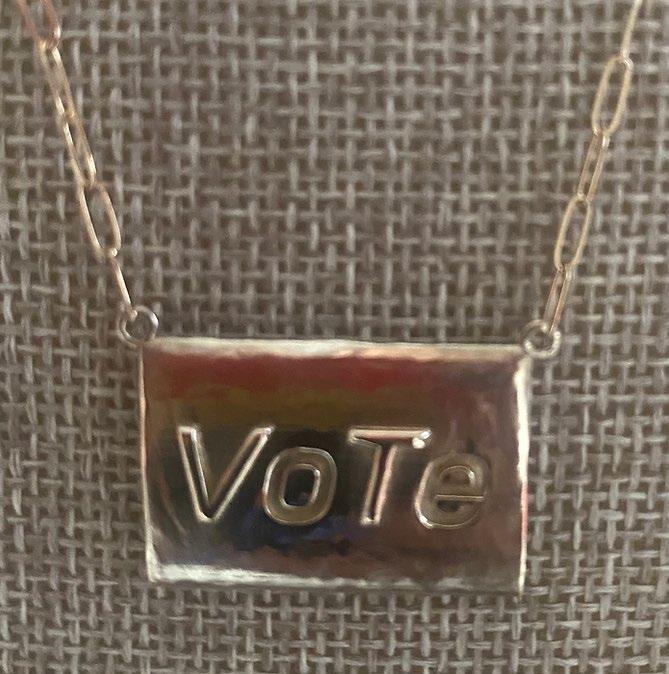

5
m.a.b.e.l.
$40+ Maker Caddy at mabelstyle.com
This incredibly spacious bag is your ultimate companion for overnight trips, beach days, or simply hauling everything you need under your stroller. Crafted from a charming, pre1950s vintage quilt, each Kitchen Sink Tote is a one-of-a-kind piece. The lining is made from durable canvas, and it features a convenient internal pocket for storing smaller essentials.
$150 VoTe Necklace at historicaldream.com
Celebrate the power of the vote with this elegant sterling silver "VoTe" pendant. Crafted from high-quality sterling silver, this pendant is suspended on an 18" sterling silver clip chain, providing a versatile and comfortable fit.
6
$490 Swerve Bracelet at historicaldream.com
Handcrafted jewelry celebrating historical icons and cultural trailblazers, this handcrafted sterling silver bracelet features a bold, 480 rhodium-plated "Swerve" design, symbolizing the power of change and resilience.
Ly & Lines
$35+ Wooden lanterns at lyandlines.com
Bring warmth and artistry to your space with these beautiful laser-cut wooden lanterns. Each lantern features artist Anh Ly’s original designs, meticulously crafted from high-quality birch baltic plywood. Every piece is hand-assembled with care, and comes in two sizes (4” x 4” x 8” and 3” x 3” x 6”), and includes a battery-powered light. Choose from captivating designs: Mandala, Yin Yang, and L-O-V-E geometric
2
Mei Luxe
$59.95 Lavender Bergamot Black Tea Coconut Apricot Candle at etsy.com/shop/MeiLuxe
Relax and unwind with this calming lavender and refreshing citrus blended with a soothing black tea-scented candle. Comes in additional scents with an amble burn time of up to 65 hours.
3
Soulflower Print Co.
$29 Wild & Free Gray Crop Top at soulflowerprint.co
This soft and comfortable top showcases the delicate lily of the valley, vibrant anemones, and clusters of berries.
4 Lumpy Studios
$20 Bao Candle Lamp at lumpystudios.com
Inspired by the beloved Chinese steamed bun, baozi, this soy-based candle reveals a surprise green matcha “filling” as it melts, showcasing a delightful blend of tradition and fun.
Melt into any space or moment with these self-care gifts. Set a soothing ambiance, wrap yourself in the warmth of a cozy fabric, and treat yourself to the perfect night in.

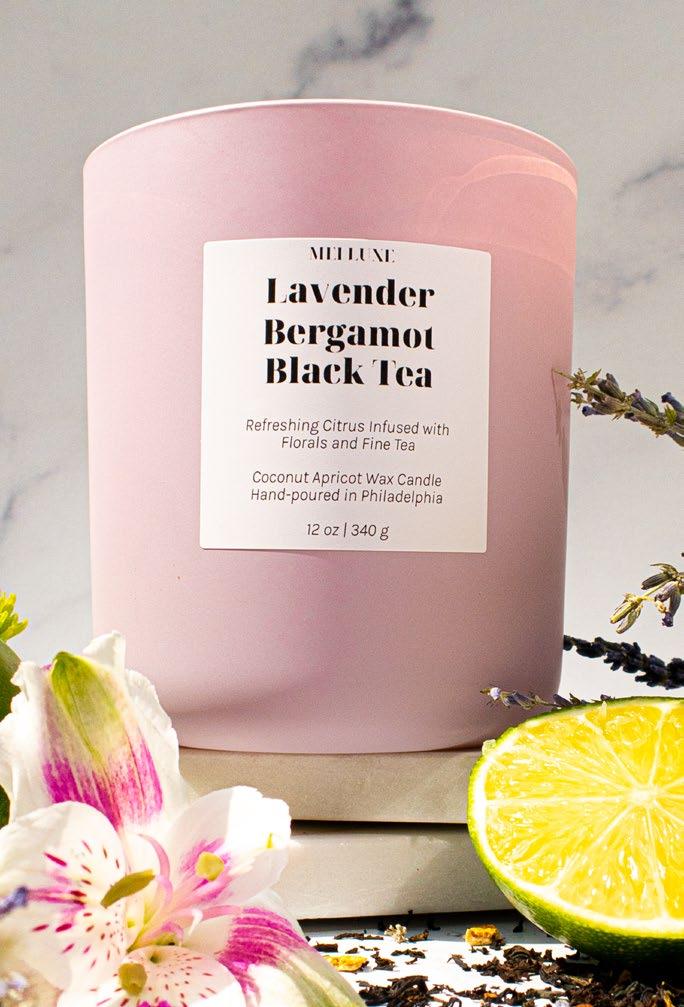
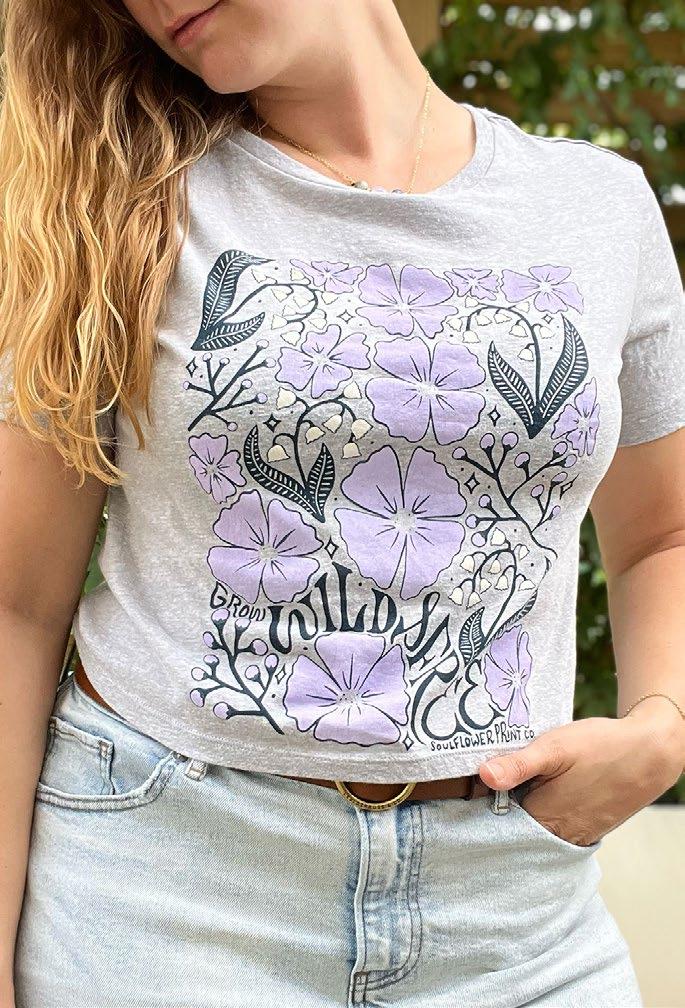
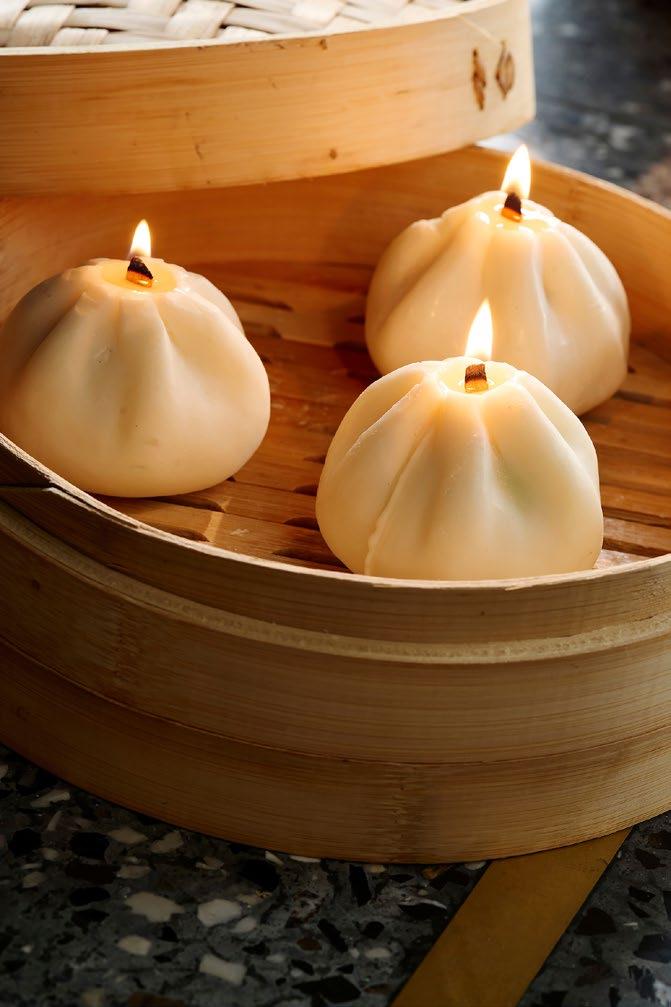



5 N’u . lo . Adaeze Rest in Repose (R&R) Zero Gravity Rocker at nuloadaeze.com
Experience ultimate relaxation and improved posture with the innovative rocker. This unique zero-gravity rocker goes beyond comfort, offering a range of therapeutic benefits, including improved posture, enhanced breathing, and feeling grounded.
6 Ivy Eye
$225 Insulated Oversized Floral Hoodie at ivyeye.co
Crafted from repurposed post-consumer thrifted fabrics, each hoodie features a captivating floral blanket design, boasting a thick blanket fabric and a durable lining for ultimate comfort and warmth. Available in a comfortable XL/2XL size.
7
Soulflower Print Co.
$40 Self-Care Cat Sweatshirt at soulflowerprint.co
This cozy design features an adorable cat lounging behind a teacup, surrounded by delicate floral and mushroom motifs, with a sweet little mouse friend keeping them company. Perfect for a self-care moment.

8
$220 Offset - Cast Concrete Lamp at lightenuplab.com
A contemporary interpretation of mid-century Italian design, this lamp seamlessly blends form and function with its sleek, off-center concrete base and warm, 2700K LED light source.
9
$34 Moodio Tees at moodiostudio.com
Elevate your everyday wardrobe without sacrificing comfort, with the Moodio Tee, crafted from high-quality heavyweight cotton. Offered in a range of comfortable and stylish adult short-sleeve shirts, these vibrant designs are screen-printed on both the front and back, ensuring long-lasting quality that won’t fade. 10 m.a.b.e.l.
$225 - $300 Quilt Popover & Jacket at mabelstyle.com
Crafted from one-of-a-kind, pre-1950s vintage quilts, each item is a piece of wearable history. Choose from different styles, including the snap-up jacket or cozy popover..
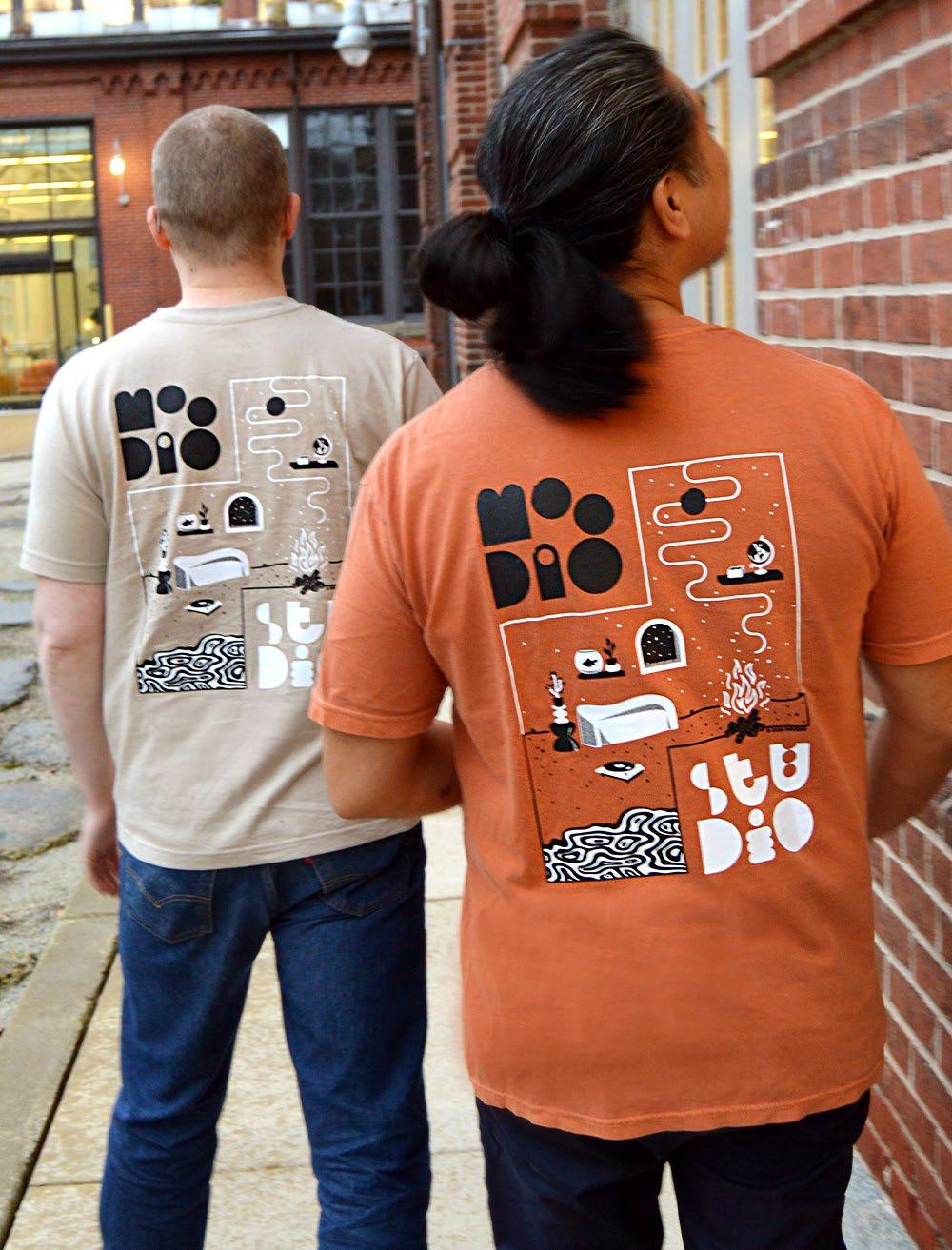
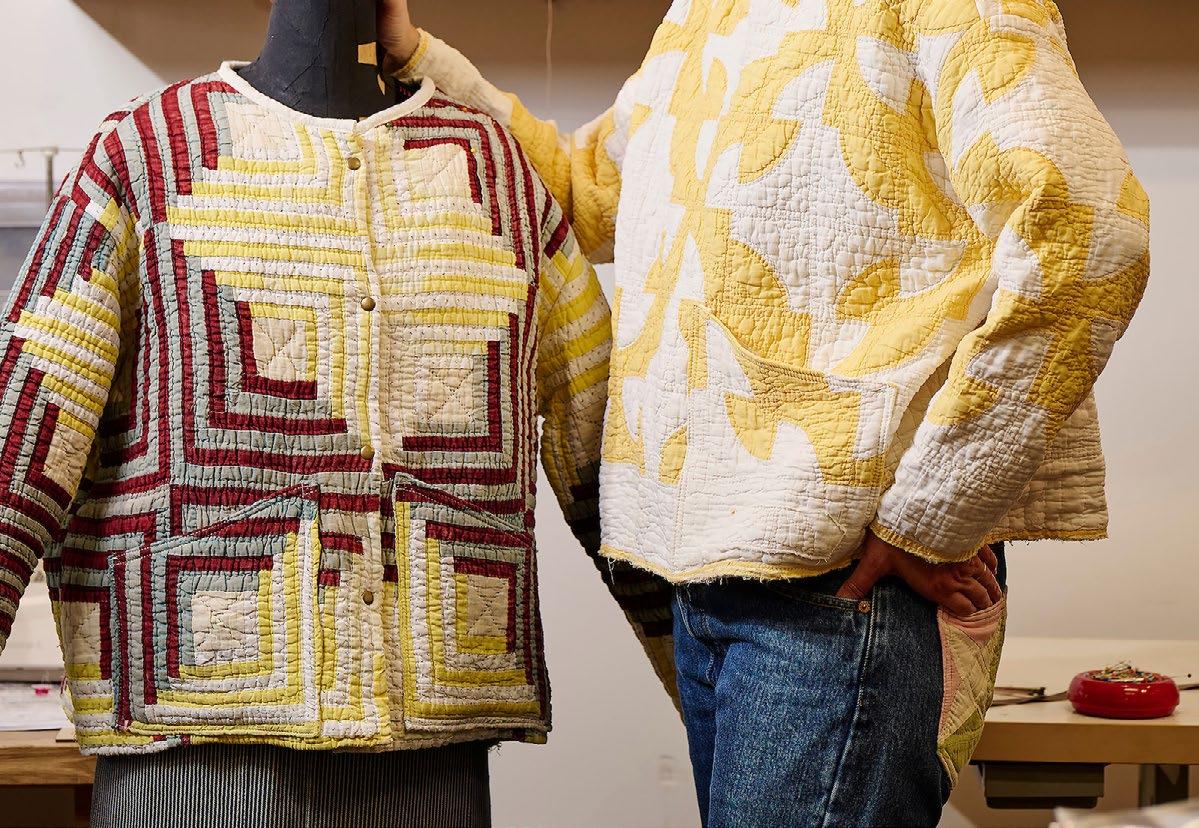

Mason Holden of Friday is redefining the future of home offices. With a background in industrial design, Mason has a keen eye for both aesthetics and functionality. His handcrafted desks, made with eco-friendly materials, seamlessly blend into any home environment. Friday’s mission is to create inspiring and functional workspaces that enhance productivity and well-being. By offering customizable, modular designs, Mason empowers individuals to tailor their home offices to their unique needs and styles.
Elevate your house into a home with these gifts that will be stable in any home decor. Designed to add a touch of personality and charm to any space, give to a friend, or keep for yourself!

1
Obliqua
Wood + Light Sculpture at instagram.com/obliqua_madera
Obliqua creates handcrafted wood and light sculptures that blend natural beauty with modern design. Each piece is unique, featuring live-edge wood and intricate light patterns inspired by mathematical diagrams. Customize your sculpture and enjoy the warm glow of dimmable LED lights. Each piece comes with a remote-controlled LED and various sizes made of walnut (74”x 15”x 1”, 73”x 13”x 1 1/2’, or 82”x 13”x 1”). Inquire for holiday promotions of up to 20% off.
$45 Sumo Orange Lamp at lumpystudios.com
Transform your space with the playful charm of the Sumo Orange Lamp! Inspired by the juicy citrus fruit, this unique lamp boasts a realistic texture and look, casting a warm and inviting glow. Add a touch of whimsy to any room.
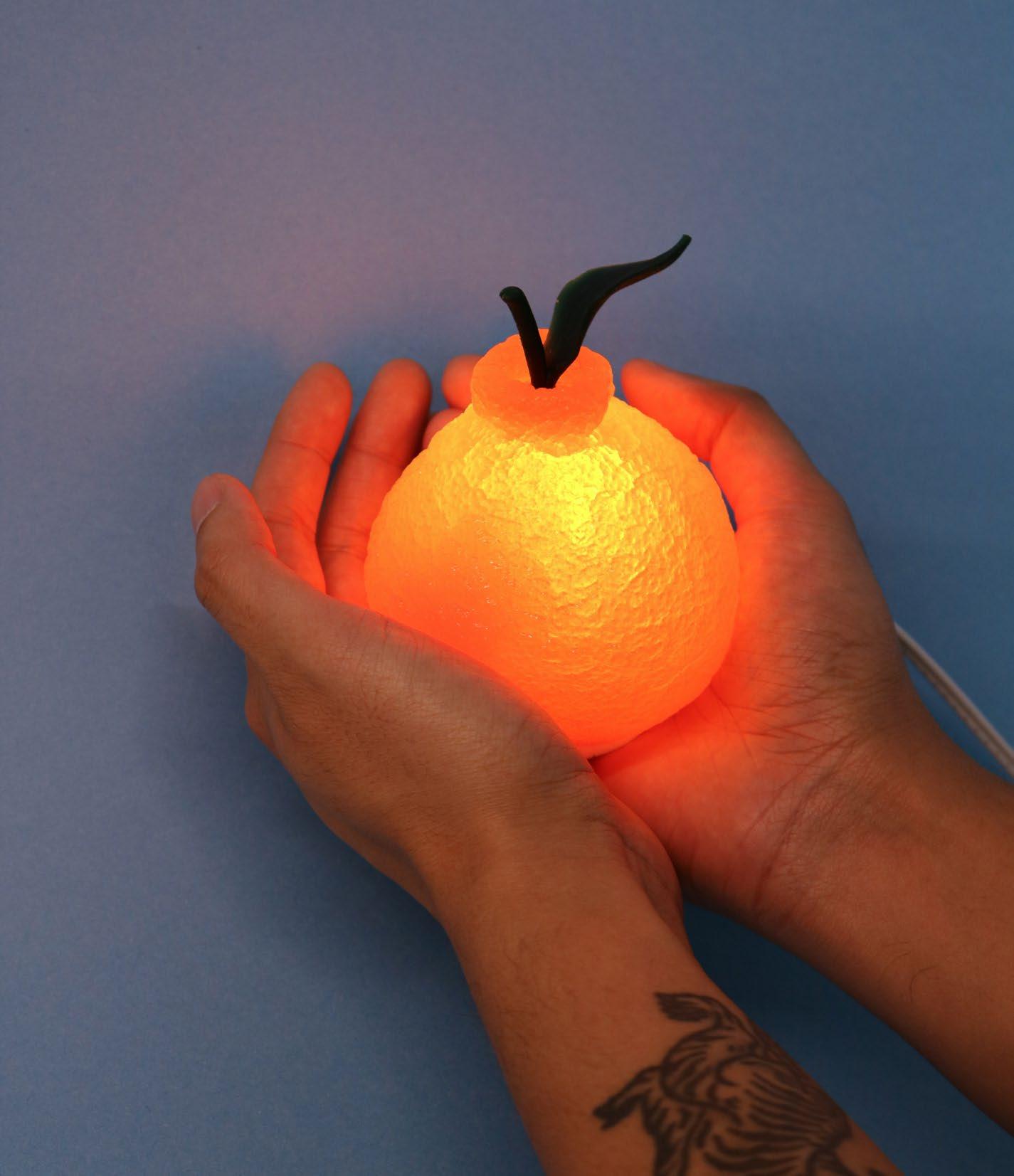
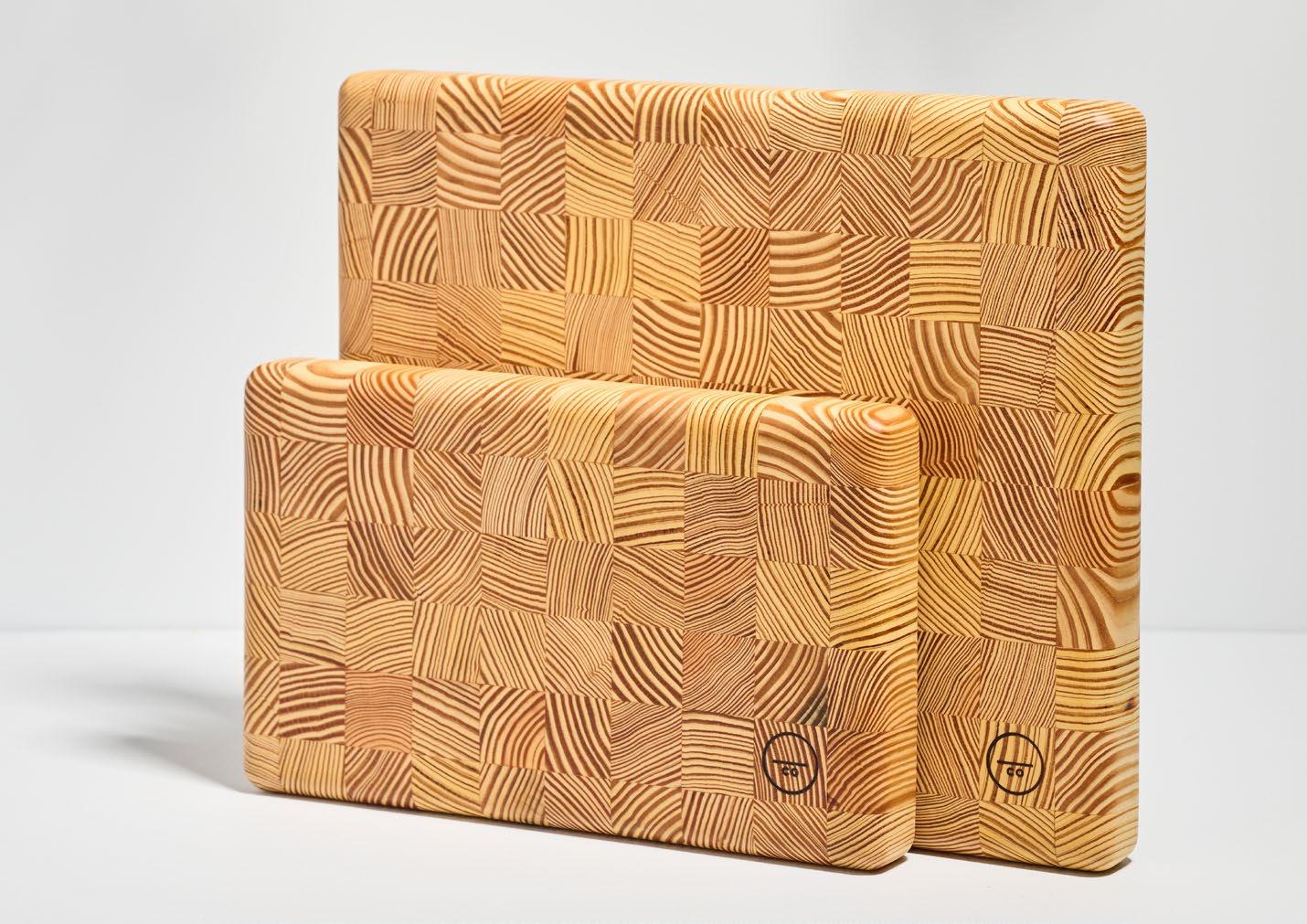

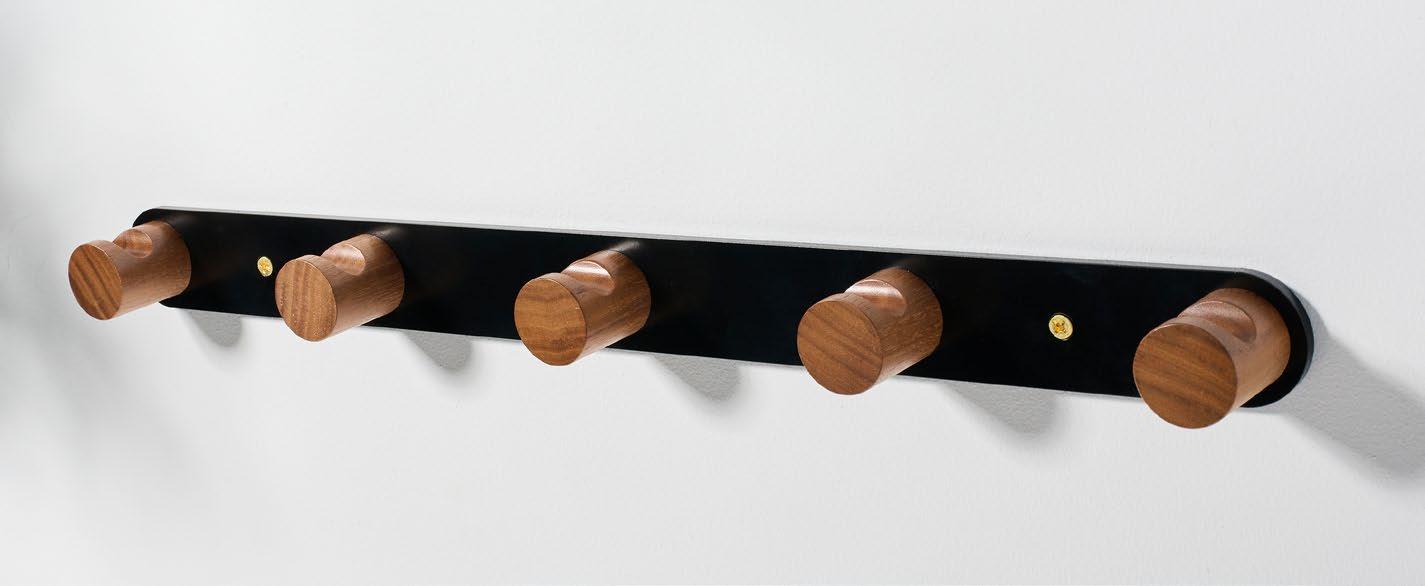
$132 - $214 Jasper Cutting Board at untitledco.design
The signature design is meticulously crafted from end grain Southern Yellow Pine, known for its exceptional density and durability that rivals maple. The visually striking grain structure adds a touch of beauty to your kitchen. Featuring a large, comfortable rounded edge for easy handling, each Jasper board is finished with food-grade oil and polished with a conditioning wax for long-lasting protection.
$18 Soap Dumplings at lumpystudios.com
Discover this charming and unique addition to your hand-washing routine. Each soap, meticulously crafted to resemble delicious dumplings, offers a delightful blend of clean ingredients that leave your skin feeling soft and refreshed. Perfect as a gift or a treat for yourself, these soaps bring a touch of playful elegance to your bathroom or kitchen.
$35 - $121 RALSTON Coat Rack at untitledco.design
Modern curves and stout materials are combined to create this minimalist coat rack. Ralston is the perfect space to keep your coats and bags in place while keeping your space clutter-free and stylish. Hats, bags, and towels hang securely from the notched 1.5” diameter White Ash peg while the hefty powder coated steel base keeps everything together. Brass mounting screws and drywall anchors included. Available in Black Walnut and White Ash.
$35 Seek Hope Pink Waffle Knit Long Sleeve at soulflowerprint.co
This cozy long sleeve features a beautiful design with delicate Luna moths, vibrant poppies, and whimsical mushrooms — a gentle reminder to find hope and light even in challenging times.
$80 Small Wall Clock at scrapyardaesthetics.com
Bring a touch of industrial charm to your space with this unique wall clock. Crafted from a repurposed large bearing race and other salvaged metal parts, this clock is a testament to sustainable style. The 8-inch diameter size makes it a versatile piece for any room, adding a touch of industrial personality without overwhelming the space.
$20-$25 Upcycled Air Plant Vessel at byrdboards.com
Crafted from upcycled materials, these vessels feature a striking contrast of colorful veneers and natural wood tones. Perfect for home or office decor, these eco-friendly creations add a touch of personality and style while showcasing your plant collection.
4
m.a.b.e.l
$300 Quilt Coat at mabelstyle.com
Crafted from a damaged, pre-1950s quilt, this unique workwear piece features a relaxed fit with drop shoulders and a collarless style. The quilt’s cotton fabric, cotton batting, and muslin lining provide warmth and durability, while the professionally finished seams ensure a highquality construction. Closed with antiqued brass snaps up the front and finished with two external patch pockets.
Looking for meaningful gifts that make a positive impact? Discover products crafted with sustainability in mind. From recycled materials to ethical sourcing, these gifts celebrate a greener way of giving
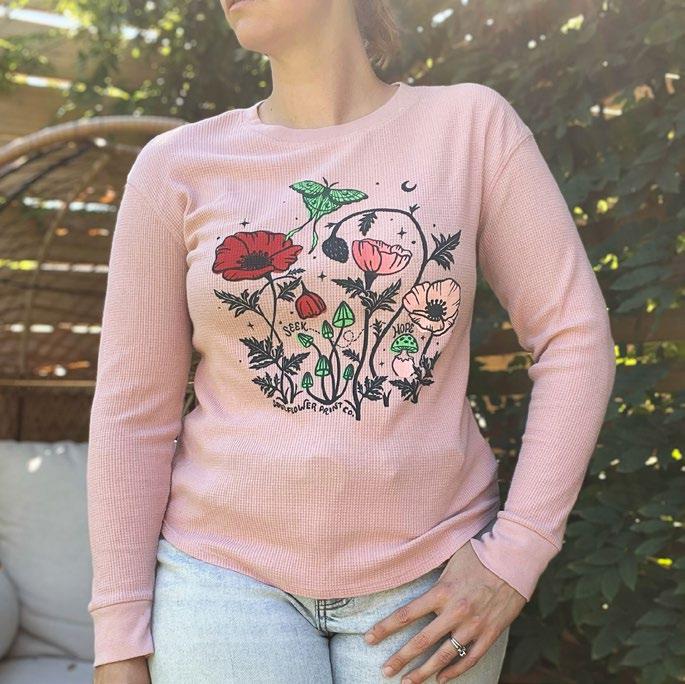

$115 Orbit Ivy Circle Shorts at ivyeye.co
Disrupt the norm with a skirt appearance and short functionality. These shorts are your go-to for a blend of fashion-forward aesthetics and practical wear, featuring a hidden side seam zipper for quick changes. Available in medium-size.



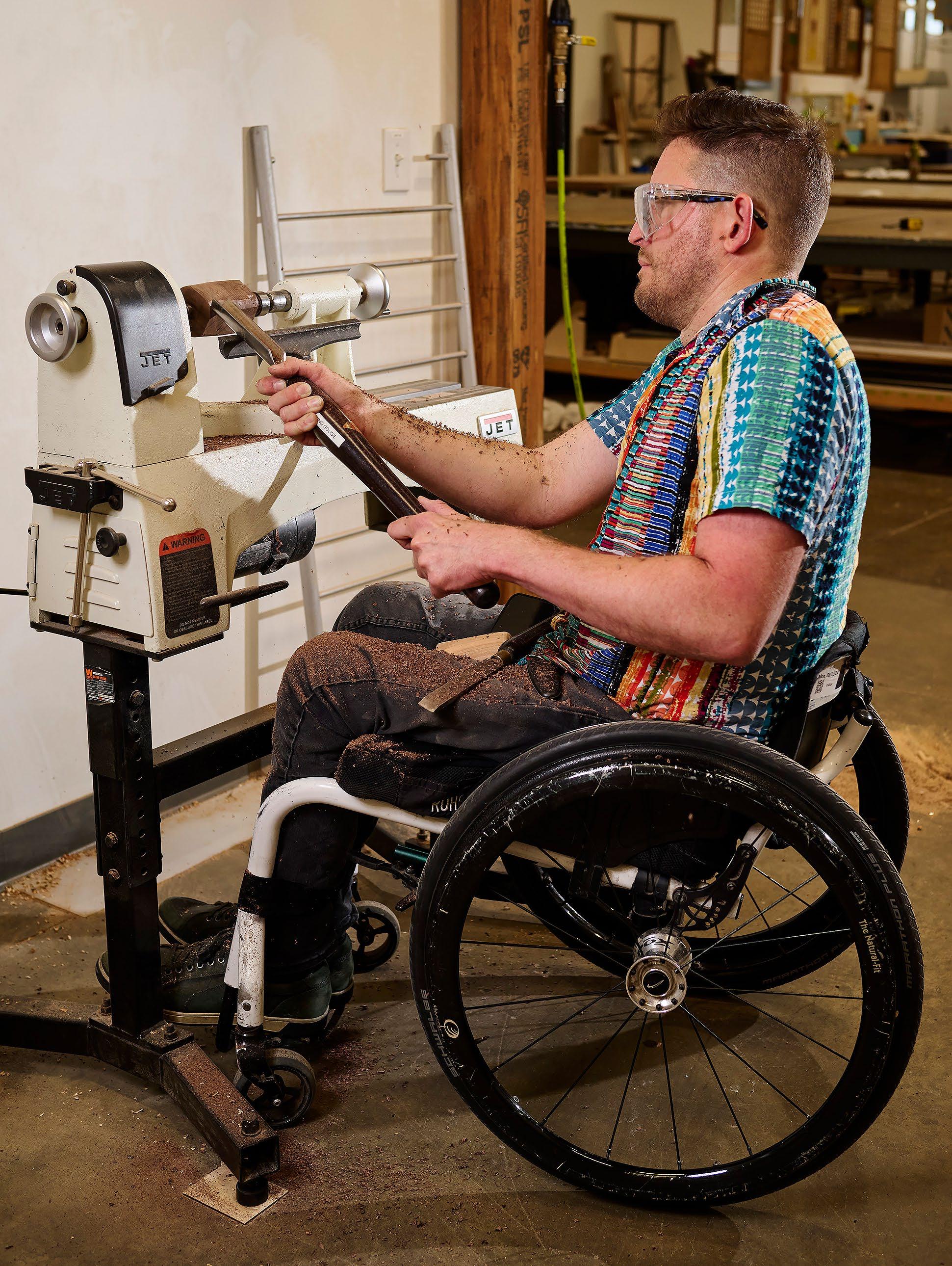
Aaron Anderson of Lighten Up Lab is the master of transforming ideas into tangible objects. With a passion for innovative design and sustainable practices, Aaron creates stunning lighting and signage that pushes the boundaries of traditional manufacturing. By combining 3D printing with concrete casting, Aaron brings his unique designs to life. Each piece is a testament to his dedication to craftsmanship and his commitment to creating functional and visually striking objects.
$225+ Handcrafted Longboard Skateboard at byrdboards.com
Byrd Boards elevates skateboarding to an art form with their one-of-a-kind, handcrafted longboards. Each board is crafted from locally sourced wood, prioritizing both beauty and functionality. The rich grain of eastern black walnut on both the top and bottom complements the strong hard maple core, ensuring a smooth ride, stability, and shock resistance. This versatile 40” x 9.5” board is perfect for cruising, carving, downhill riding, or commuting.
$1,500 batá drums at acherepercussion.com
These traditional Afro-Cuban drums, crafted from ethically sourced Spanish Cedar, come in the three sizes of Iya, Itotele, and Okonkolo. Each drum features durable 5mm rope and Argentinian cowhide for a rich and authentic sound.
$45 Be At Ease Tote at moodiostudio.com
Head to the seaside with this stylish tote bag featuring a beautiful, beach-inspired landscape design screen printed on sleek black, 100% cotton canvas. A zippered closure keeps your belongings secure, while an inner pocket offers convenient storage for smaller essentials.
$4,400 Congas ‘’Popular series’’ set at acherepercussion.com
Offering handcrafted conga drums, perfect for Latin and Jazz enthusiasts, these highquality instruments are made from black cherry wood and produce clear, powerful sounds. Includes four congas of varying sizes for a versatile playing experience. This professional-grade set features four congas crafted from beautiful black cherry wood.
Fuel their wanderlust with these unique gifts that spark exploration and adventure. Whether they’re seeking interactive experiences or virtual escapades, this category offers something for every adventurous spirit.

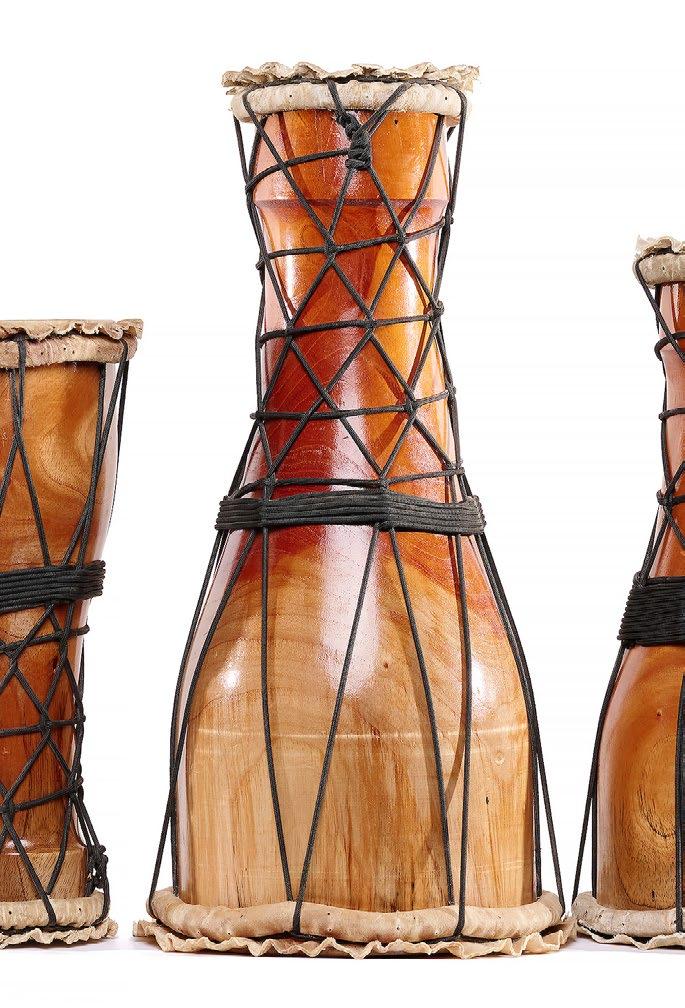

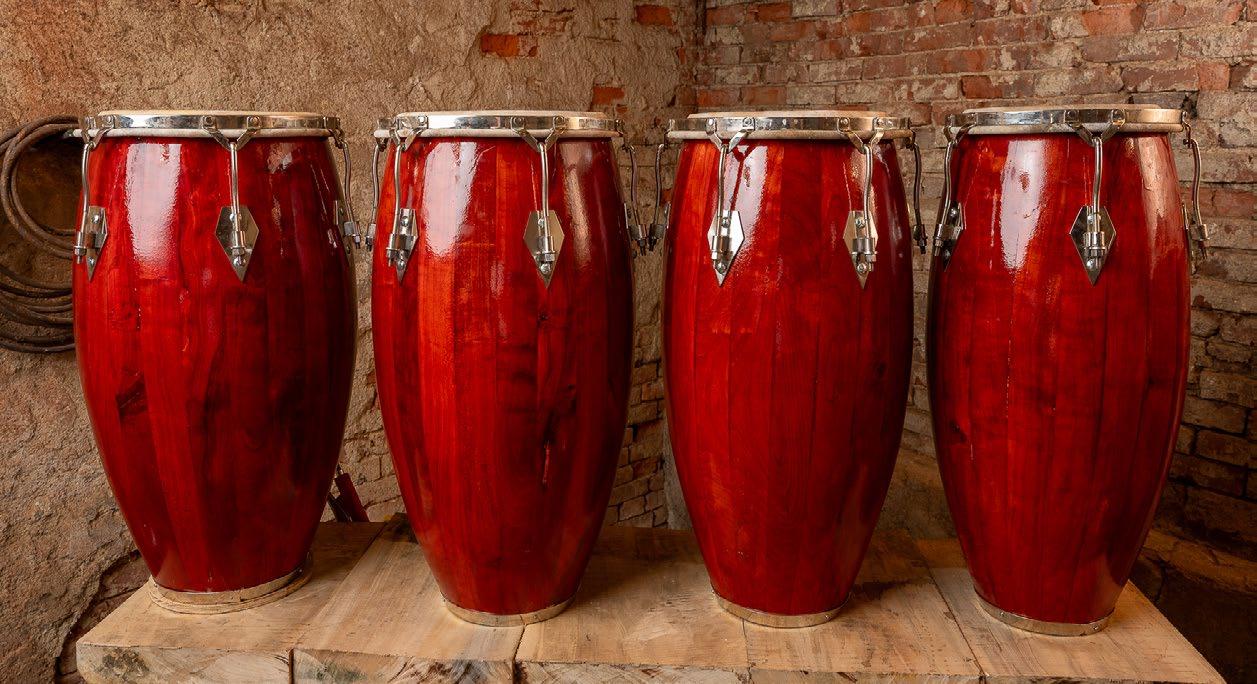
4

Janice Noh and Brian Temsamrit of Lumpy Studios, are reimagining Asian heritage through playful and innovative design. Drawing inspiration from their diverse Asian-American roots, they create functional and aesthetically pleasing products that celebrate culture and spark joy. With a focus on sustainability and ethical practices, Lumpy Studios aims to make a positive impact on the world. Their unique blend of design, engineering, and cultural appreciation has garnered attention and admiration from people around the globe.


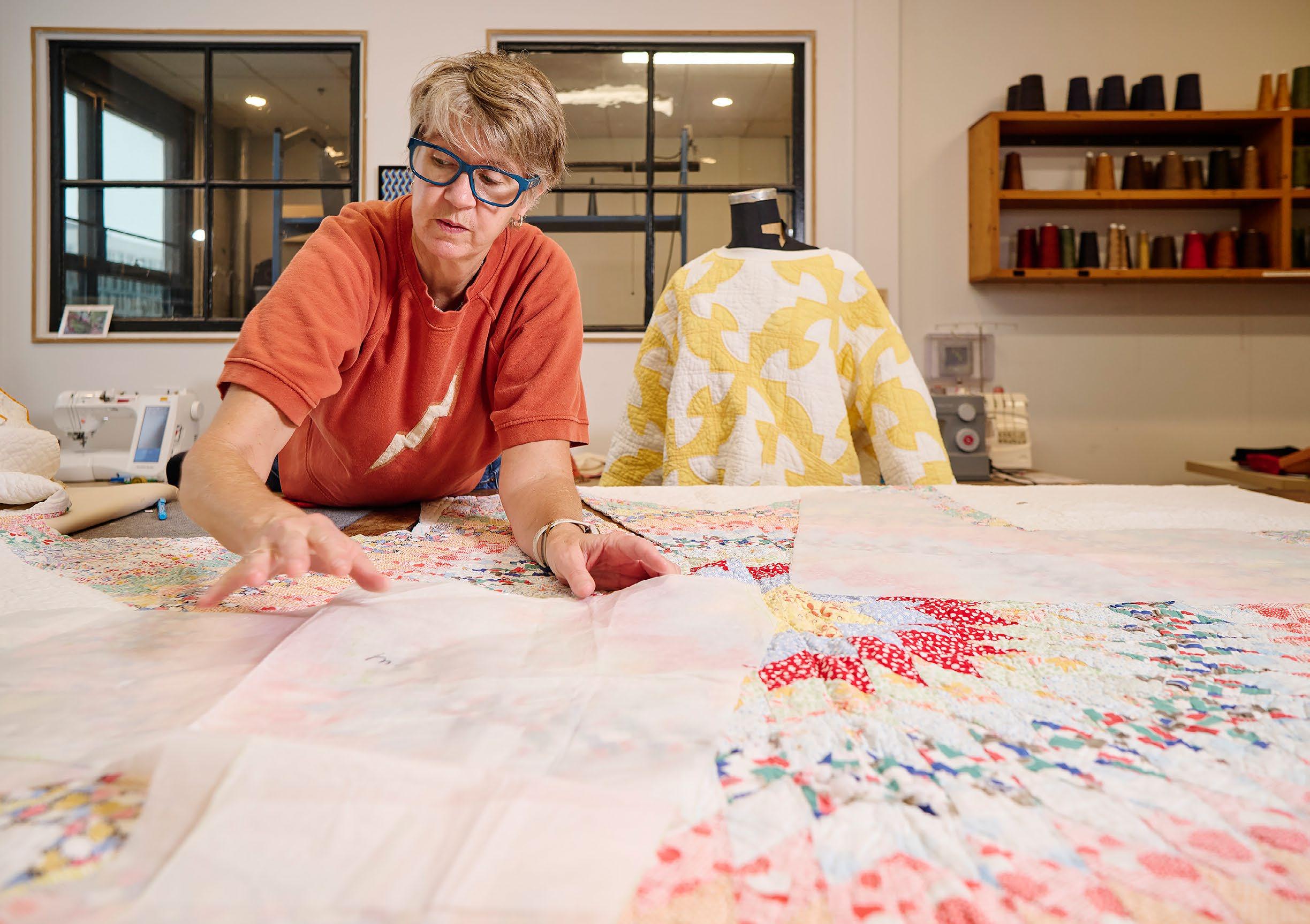

“If you look for it, you’ll find that the perfect handmade gifts are actually all around you.”
• Paige Sato of m.a.b.e.l breathes new life into vintage quilts and textiles. By repurposing these cherished pieces, she honors past makers and creates unique, sustainable garments and accessories.


4pm to 9pm • Thursday and Friday 12pm to 9pm • Saturday and Sunday


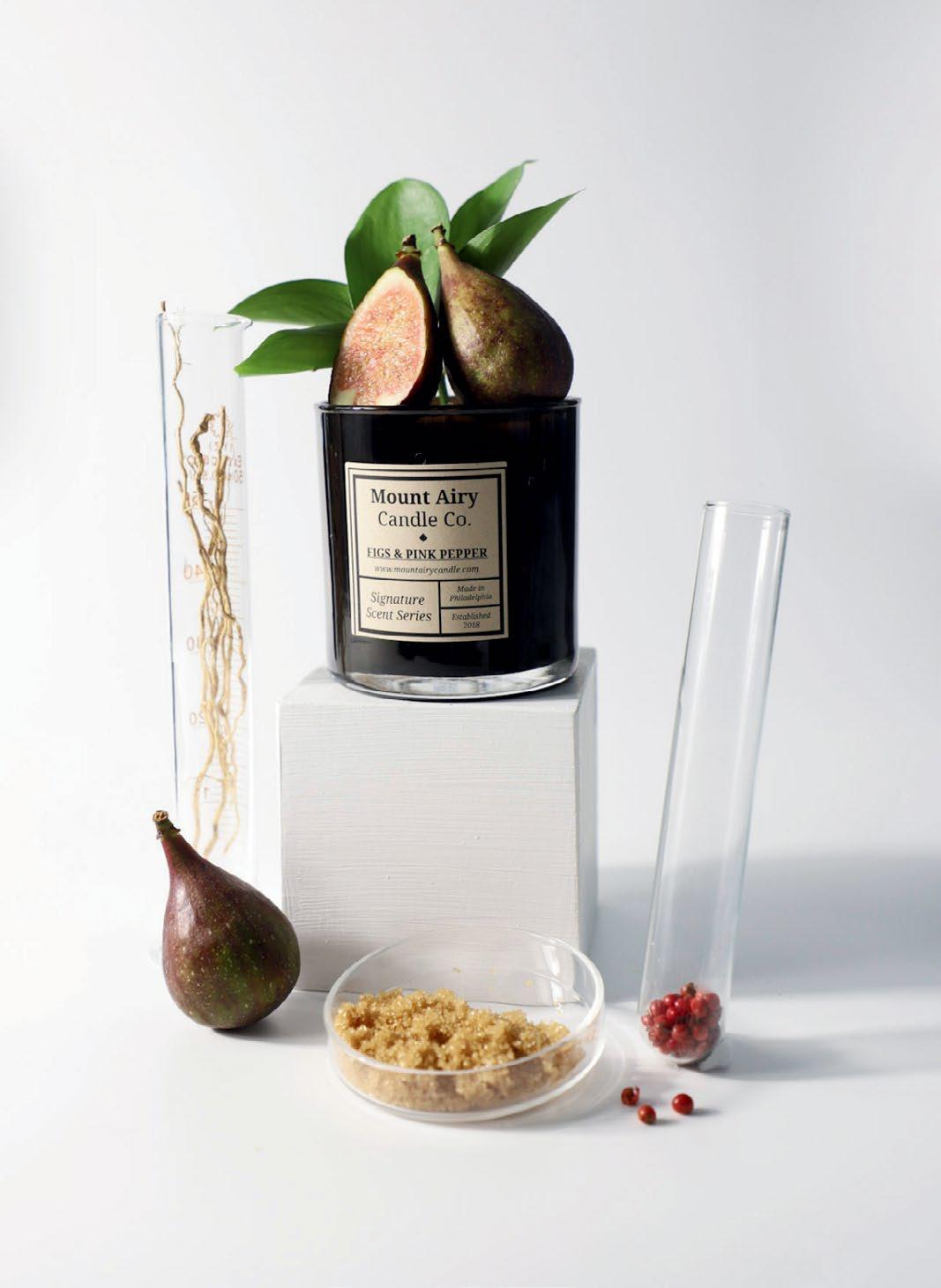




Most of Philadelphia’s unused food ends up in landfills. Improved composting services can help to change that
STORY AND PHOTOS BY JORDAN TEICHER
On a warm Saturday morning in September, Mégane Simões and Sara Dufner — the volunteer managers of the Northern Liberties Community Compost Program — are tucked behind a playground at Liberty Lands Park, hard at work. Saturday is drop-off day, a time when neighbors bring buckets and bags of food scraps, which, over weeks and months, Simões, Dufner and an intermittent crew of about half a dozen fellow volunteers turn into compost. “It’s the easiest way to compost for somebody who hasn’t composted before,” says Simões. “It’s free. You don’t have to do
anything besides drop off your food scraps once a week.”
While Dufner aerates food scraps in one of the the three compost bins, Simões empties some of the finished compost into a sifter. Today, they’ll process about 200 pounds of food scraps from about 20 dropoffs. “We’re having a little trouble keeping up with the demand. People are really into it. We have people who come in from Fishtown and Fairmount,” says Dufner. “We actually had to stop advertising our program because it’s been too successful. We ran out of space in the bins.”
The Northern Liberties Community
Compost Program is one of 13 compost sites Philadelphia Parks & Recreation supported in 2019 as part of a city-wide Community Compost Network. Modeled off a similar program in Washington, D.C., the program provided each of the sites with a three-bin compost system, tools and training for volunteers. (Due to the pandemic, composting at most of the sites didn’t kick off in earnest until 2022.)
The program emerged from an executive order Mayor Jim Kenney signed in 2016, which committed Philadelphia to a goal of diverting 90% or more of the city’s waste — including food waste, which at 17%, accounts for the largest share — away from landfills by 2035. In 2019, the City estimated that 214,000 tons of food waste are generated in Philadelphia each year. Of that, 206 million pounds — about half — are sent to a landfill or incinerator.
Composting has a number of benefits. It saves cities money on landfill fees (one estimate puts the savings at up to $250,000 annually for every 10,000 homes compost-
ing), recycles nutrients into local soil and reduces greenhouse gas emissions. But back in 2019, the City’s only compost program for food scraps was in the Department of Prisons, and there was no City-supported program for residential food waste, which accounts for at least 40% of all food waste. Today, according to the City, turning food scraps into compost is not the only way to divert organic waste from landfills, but it’s perhaps the most promising.
“When we talk about zero waste goals and waste reduction goals, it’s one of the biggest areas where we can get bang for our buck,” says Casey Kuklick, deputy director of the City’s Office of Clean and Green Initiatives. “Composting is one solution of several that we can use to deal with organics, but it’s the one that I would say has the most infrastructure around it right now.”
In the eight years since Mayor Kenney signed his executive order, composting has indeed become more common across Philadelphia. In 2023, the City provided the privately-owned Bennett Compost with City park land to use as its headquarters; in exchange Bennett picks up food waste at the City’s recreation centers and provides the City with finished compost. In March, the City announced that at least 10 new community compost sites will join the network this year and begin composting in 2025. The footprint of private composting services, meanwhile, has also expanded.
However, the vast majority of Philadelphia’s more than 650,000 households still don’t have access to composting, underscoring the lengths still yet to go for Philadelphia to become a zero-waste city. Now, with 2035 just a decade away, advocates, composting entrepreneurs and City officials are figuring out how to move the needle.
Brenda Platt is the director of the Institute for Local Self-Reliance’s Composting for Community project, which advances local composting. Methods for managing food waste, she says, exist within a hierarchy of preferability. The best option is preventing waste in the first place by buying only what you need and eating it. Then there’s donating unwanted food to hungry people, and routing food not suitable for human consumption to animals. After that, there’s home composting, then community composting, then larger and larger municipal or commercial compost operations. Disposing
of food in landfills, she says, is the worst option and should be banned.
“Cities spend millions and millions of dollars on trash, and those costs are only going to increase as landfills fill up,” Platt says. “To hedge against future increases in cost, cities should be looking at ways to reduce trash and support businesses and community-driven operations so we can build that economic power and keep the social benefits that come with community composting.”
In cities across the country, Platt has helped cities do just that. In 2018, for instance, she supported a bill in D.C. City Council that created an incentive program for residents to buy home composting systems after completing a training program. And here in Philadelphia, Platt worked with the City to get its Community Compost Network up and running in 2019.
Today, initiatives like the Northern Liberties Community Compost Program are a
adelphia, has five times as many community composting sites.
According to Andrew Kirkpatrick, the urban greening coordinator for Farm Philly, the urban agriculture program of Parks & Recreation, the City wants to continue expanding the network. But the program — which Kirkpatrick estimates costs between $40,000 and $80,000 dollars — depends on grant funding, which isn’t guaranteed.
Nic Esposito, who served as the City’s Zero Waste and Litter Cabinet director from 2017 until its dissolution in 2020, studied D.C.’s community compost network back when he worked at Parks & Recreation. Recently, the urban farm he co-manages, Emerald Street Community Farm, became one of the newest members of Philadelphia’s network. He believes community composting could be a “part of a major waste reduction strategy for neighborhoods,” along with backyard composting and curbside pickup services. But
It’s free. You don’t have to do anything besides drop off your food scraps once a week.”
MÉGANE SIMÕES, Northern Liberties Community Compost Program
testament to the network’s benefits. But it faces a number of challenges. Since its formation, the number of sites in the network has shrunk, and the number of Philadelphians who can access it remains relatively small. Three of the original sites have since left the program. Greensgrow Farms dropped out when the organization shut down in 2022. Hardy Williams Academy stopped participating after the two teachers who were running the program left the school. And Pearl Street Garden dropped out due to a staffing shortage. Today, of the 10 sites that are now formally part of the network, at least one is non-operational and just one — Liberty Lands — is processing food scraps from the general public on-site; the rest are only open to students or members of community gardens. Washington, D.C., a city with half the population as Phil-
the City, he says, isn’t investing enough in diversified composting services.
“In the same week, you might take some stuff to the community composting site, use your InSinkErator, maybe even put some scraps out curbside because you had too much,” he says. “You should have those options. And the City should be able to supply them for you.”
A diversity of options for would-be composters is important, Esposito says, because Philadelphians have different barriers to participation, which can include time, money and space. Some Philadelphians, like Simões and Dufner, will happily spend hours every week processing food scraps at their local park, or in their own backyard — but many can’t or won’t. Some Philadelphians will happily pay a private compost-
ing service to pick up their food scraps, but many can’t or won’t.
Tim Bennett, the founder of Bennett Compost, understands this well. (Full disclosure: Alex Mulcahy, Grid’s publisher, is a business partner in Bennett Compost.) In 2009, he started his business with 10 customers. Today, he has 6,000 residential customers who pay a monthly fee for a weekly pickup of their food scraps, and around 120 commercial customers. The growth, he says, has been exciting, but he knows there’s likely a limit to it. “There is some additional appetite for people who are willing to pay,” he says. “But there’s even more appetite for people who are either willing to pay less than what the private compost companies are charging, or would do it if it didn’t cost them money.”
Recently, Bennett has been testing that theory through a series of grant-funded pilot programs in partnership with the nonprofit New Kensington Community Development Corporation. In the spring, Bennett began offering no-cost or low-cost composting services, including drop-off programs and curbside pickup, in Kensington, an area of the city where the company has relatively few customers. “We’re trying to figure out what works and what doesn’t,” says Bennett.
Dave Bloovman, who co-founded Circle Compost in 2016, is also experimenting with lower-cost composting services. This year, his company launched a pay-what-you-wish community drop-off site at Trinity Memorial Church. And the company is applying for grants to provide composting services for people who can’t afford it through its nonprofit, Circle Change Co. “Funding composting programs like ours in underserved communities would be a great way to make it accessible,” says Bloovman.

Nic Esposito, of Emerald Street Community Farm, says households need more than one option to overcome barriers to composting.
Grants are useful for funding these small experiments, Bennett says, which can demonstrate how lowering the price of composting for residents can boost participation. But ultimately, he’d like to see the City partner with private composting businesses to provide no-cost residential composting at scale. “That’s just going to have to be a choice that the City will have to make. If they want to ever be able to offer no-cost or subsidized services, they’re going to have to foot some of that bill,” he says. “Some of that money maybe can come from the savings that the private companies provide when they take that material out of the city’s current trash stream.”
The City isn’t considering that kind of partnership — at least not yet. But Kuklick of the Office of Clean and Green Initiatives says there are a number of options on the table to reduce food waste and expand composting. He says the office is considering starting edu-
That’s just going to have to be a choice that the City will have to make. If they want to ever be able to offer no-cost or subsidized services, they’re going to have to foot some of that bill.”
TIM BENNETT, Bennett Compost
cational campaigns to reduce waste from the source and pulling ideas from other cities.
“We’re looking to New York and some of the innovative things they’ve done with Bigbelly composting trash receptacles,” he says. “We’re also considering how we can remove organic waste and food waste in particular at the backend of the waste stream and put it to more productive use potentially through digestion or biogas,” he says.
For now, these are just ideas. A plan to expand the capacity of the Fairmount Park Organic Recycling Center is one potential solution in the works. The center, which has been in operation for more than 40 years, currently only accepts yard waste such as leaves and trees. But if a grant application the City has filed is approved, Kuklick says the center could begin to also accept food waste from City agencies.
It’s a promising large-scale solution, but it’s not guaranteed. In the meantime, volunteers like Simões and Dufner are keeping composting free and accessible to as many neighbors as they can, a labor of love that points to composting’s potential even at the smallest scale. “I don’t think of it as a task,” says Simões. “It’s fun.” ◆
WRITTEN AND ILLUSTRATED BY BRYAN SATALINO
Composting can take many forms, from large-scale industrial facilities that process thousands of tons of waste each year to small, simple setups like a bucket with holes and worms that break down kitchen scraps. This range of composting options means there’s a solution for nearly every household’s food waste — waste that contributes to around 60% of methane emissions from landfills in the U.S. Plus, composting produces a valuable soil amendment. Here are the most common compost models according to the EPA.
In some Philly neighborhoods, residents can bring their food scraps to communal composting set-ups, often at schools, parks or community gardens. Compost tumblers or stalls maintained by volunteers keep food waste disposal local and provide neighbors with a supply of fresh soil.
Municipal composting is a curbside collection service where yard trimmings and food scraps are collected directly from residential and commercial customers, or at drop-off sites. These programs are operated by local governments and waste materials are often hauled to larger-scale composting facilities. The compost generated is typically given back to residents or used to benefit local landscapes.
Farm composting is specific to the agricultural sector and often uses the traditional byproducts of farming for its feedstock. Farm waste such as crops, manure, straw and food waste are used to create compost, which can be used cyclically as an input in the form of soil amendment. Farms often use passive “windrows” to compost their waste material.
At the smaller end of the scale, backyard composting is usually done in an enclosed bin that can be easily shaken up for aeration. Vermicomposting, or the addition of worms, can also aid in breaking down food waste, and bins can be stored indoors when a yard isn’t available. Almost all food and yard waste can be composted with this format, with the exception of dairy and meat.
This form of composting is a closed loop with compost being created and used on-site. A university may use a composting system like this for its cafeteria food scraps and yard trimmings from around campus to help meet sustainability goals and minimize the cost of hauling materials off-site. Princeton University, for example, uses a 5,000-pound-per-week rotary drum system to compost their food hall waste.
At a very large scale, commercial and industrial composting happens in facilities designed to accommodate a high volume of material and increase the speed of compost generation. Compost is often aerated, churned and watered, within systems specialized to keep odors at a minimum.
Over the years, Grid has published hundreds of recipes. For this food issue, we took a trip back to the stacks to find a sumptuous selection you can incorporate into any holiday spread.
by marisa mcclellan, food in jars
Makes one large loaf or two small ones.
2 cups finely chopped pear
1 teaspoon lemon juice
¼ cup softened butter
¾ cup packed brown sugar
¼ cup apple sauce
2 eggs
1 ¾ cups whole wheat pastry flour
2 ½ teaspoons baking powder
1 teaspoon cinnamon
½ teaspoon freshly grated nutmeg
½ teaspoon ground ginger
1 teaspoon salt
ȯ Preheat oven to 350˚F and butter one standard loaf pan or two small ones.
ȯ Peel and chop pears and toss them with the lemon juice to prevent browning. Set aside.
ȯ In a large bowl (a stand mixer works nicely, but you can use elbow grease as well), cream together butter and sugar. Add apple sauce and eggs and beat to combine. Stir in chopped pears, taking care not to stir too vigorously — they’ll dissolve into the batter.
ȯ In a small bowl, whisk together flour, baking powder, cinnamon, nutmeg, ginger and salt. Integrate the dry ingredients into the wet ones in several batches until combined.
ȯ Scrape batter into your buttered pan(s) and place in a hot oven. Bake 50-55 minutes for large loaves, 35-40 minutes for smaller ones. I like wrapping this
bread in a couple layers of parchment or wax paper secured with baker’s string or ribbon for an old-fashioned look.
by marisa mcclellan, food in jars
3 cups old-fashioned oats
2 cups chopped walnuts
1 orange, zested
¼ cup sunflower oil (or other neutral oil)
½ cup honey
¼ cup orange juice
1 cup dried cranberries
ȯ Preheat oven to 325˚F.
ȯ Combine oats, walnuts and orange zest in a large bowl. Use your hands to toss together.
ȯ Pour oil into a one-cup measure and swirl it around before adding it to the bowl. Using the same, unwashed cup to measure the honey. (The residual oil will make pouring the honey out easier.) Add orange juice and toss everything together until evenly coated. Pour onto a rimmed baking pan.
ȯ Bake for 30-35 minutes, stirring two to three times during baking to ensure even browning.
ȯ When the granola is finished baking, remove the pan from the oven and scatter the dried cranberries over the cereal. Gently stir to incorporate.
ȯ When the granola is completely cool, scoop into an airtight container. For long-term storage, keep it in the freezer.
by anna herman
1 ½ cups whole wheat flour
½ cup all-purpose white or bread flour
½ cup whole rye or oat flour
½ cup cornmeal
1 teaspoon instant yeast
1 ½ teaspoons salt
1 teaspoon balsamic vinegar
Sesame or poppy seeds for top of bread Oil as needed
ȯ Mix all ingredients in a large bowl. Add 1 ½ cups very warm water and stir well with a wooden spoon until blended.


Dough will be sticky and rough.
ȯ Cover bowl with a dishcloth. Let dough rise about 4-6 hours until doubled in bulk — time will depend on the ambient room temperature.
ȯ Oil an 8- or 9-inch loaf pan very well, as dough tends to be sticky. Lightly oil your hands and form dough into a rectangle to fit in the pan neatly. Sprinkle with seeds if desired.
ȯ Lightly oil top of loaf and cover with waxed paper. Let dough rise in the pan for about one hour until it has clearly puffed and just risen over the top edge. Preheat oven to 350˚F.
ȯ Bake bread for 40-45 minutes. To ensure bread is done, you can check the internal temperature with an instantread thermometer (every cook should have one!). It should be 195-205˚F. Remove bread from pan and cool on a rack.
by marisa mcclellan, food in jars
Serves four as a side dish.
2 acorn squash (approximately 2-3 lbs total weight)
2 tablespoons olive oil
3 tablespoons real maple syrup
1 teaspoon sea salt
ȯ Preheat oven to 400˚F. Line a large, rimmed baking sheet with parchment paper to prevent maple syrup from burning on your pan.
ȯ Wash squash well and cut in half. Scoop seeds and stringy flesh out and set aside.
ȯ Trim away the stem end and cut squash into half moons of approximately a half-inch in width. Place squash slices in a large bowl and drizzle with olive oil and maple syrup. Toss with hands to coat.
ȯ Arrange squash slices on the prepared baking sheet. They should all fit on one pan. Pour any remaining oil/ syrup from the bowl over the squash. Sprinkle with salt.
ȯ Roast for 15-20 minutes until squash is tender and browned on top.
by marisa mcclellan, food in jars
2 Ginger Gold apples (or any other tart variety)
2 Gala apples (or any other sweet, crisp variety)
2 teaspoons lemon juice
½ cup Greek yogurt
3 tablespoons honey
2 inches of ginger root
½ cup chopped and toasted walnuts
ȯ Cut apples into matchsticks (if you have a mandoline slicer, the julienne blade works really well for this) and put them in your serving bowl. Toss with the lemon juice and set aside.
ȯ In a small bowl, whisk together yogurt and honey. Peel the length of ginger and grate it on a fine grater (a Microplane is ideal) into yogurt and honey. Stir to combine and then pour over apples. Toss to coat. Top individual portions with toasted nuts and serve.
by anna herman
Serves 8-10
3 tablespoons olive oil
1-3 teaspoons cumin seeds, or ground cumin
1 teaspoon ground coriander
1 teaspoon ground hot peppers or flakes
½ teaspoon fennel seed
4 tablespoons grated fresh ginger (or halfinch piece of ginger, minced fine)
2 onions, minced
5 cloves of garlic, peeled and minced
2 carrots, tops removed, chopped fine
2 sticks of celery, chopped fine
1 butternut squash (or other hard winter squash), peeled, seeded and cubed
2 cups cubed assorted other root vegetables, such as celeriac, parsnip, turnip, potato
2 cups red lentils
8-10 cups water or vegetable stock
1 28-ounce can chopped or crushed tomatoes
1-2 cans coconut milk
Optional garnishes
ȯ Heat olive oil in a large soup pot. Add onions and garlic and sauté until onions are soft and just browning. Add spices and cook another few minutes, stirring often.
ȯ Add the chopped vegetables, water or stock and lentils. Stir well and bring to a boil. Simmer gently until the veggies are soft and the lentils break down.
ȯ Add the tomatoes and coconut milk and cook for about 30 more minutes. Season well with salt and black pepper. Adjust other seasonings to your taste.
ȯ Partially or fully purée (depending on the consistency you prefer) with an immersion or stand blender.
ȯ Stir in or garnish with chopped cilantro, browned butter and/or thick yogurt (full-fat, Greek style is especially good), toasted chopped pecans, minced garlic, salt and pepper.
by marisa mcclellan,
food in jars
1 tablespoon neutral vegetable oil
1 onion, cut into strips
¾ cup yellow curry paste
1 can coconut milk
2 cups chicken or vegetable stock
2 tablespoons fish sauce
6 cups cubed pumpkin (approximately 2 pounds squash)
1 red pepper, cubed
1 green pepper, chopped
1 pound cooked chicken or tofu, chopped
1 bunch cilantro, roughly chopped
ȯ Heat oil in a large Dutch oven until it shimmers.
ȯ Add onions and cook 2-3 minutes, until they’ve browned just slightly. Add curry paste and stir to combine.
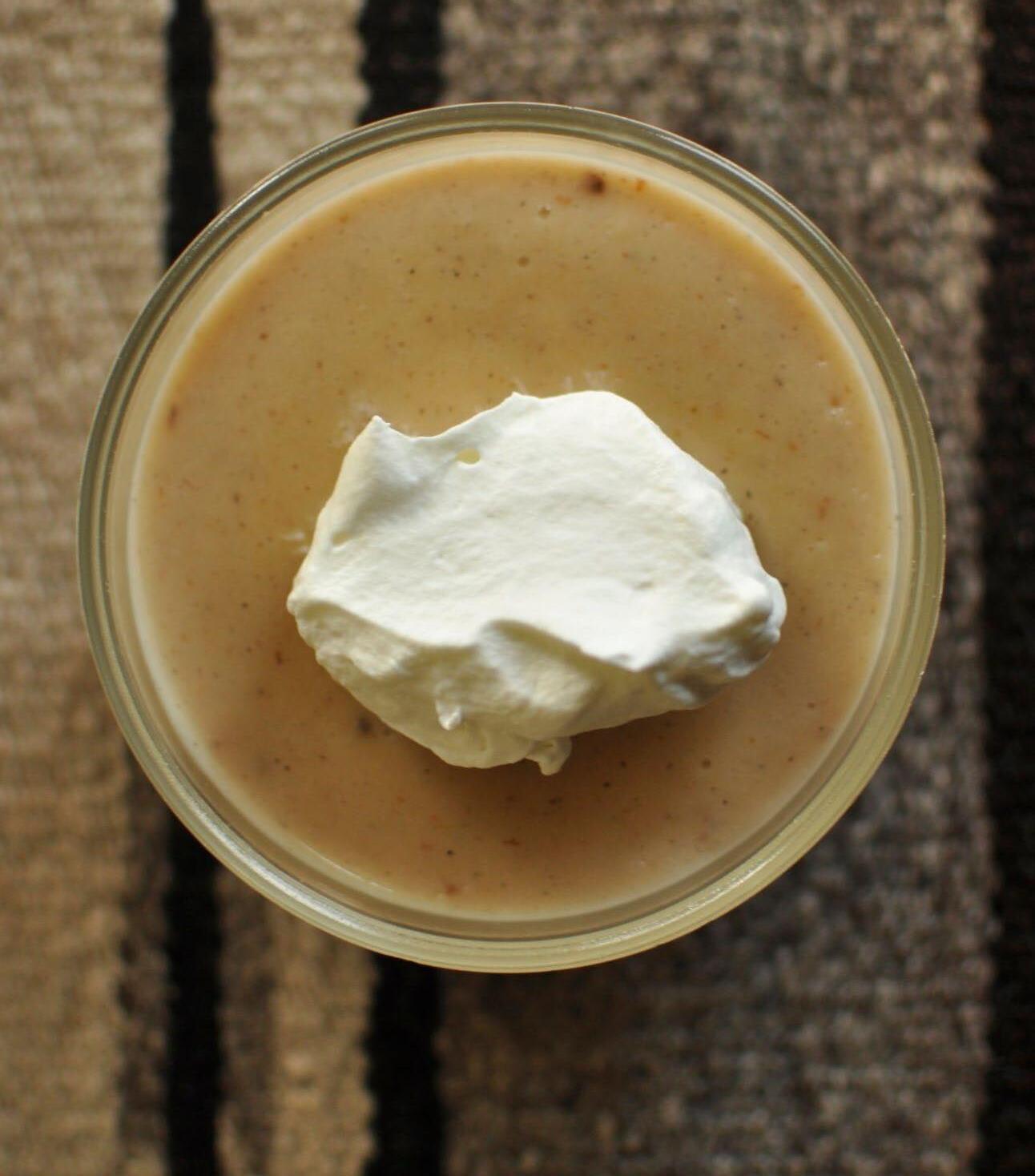
Add coconut milk, stock and fish sauce and stir until the curry paste is spread throughout. Add pumpkin cubes and simmer with the lid off until tender. This can take 10-25 minutes, depending on the type of pumpkin you use.
ȯ When the pumpkin is tender and the sauce has thickened slightly, add chopped peppers and tofu or chicken. Cook until the peppers and protein are heated through.
ȯ Stir in chopped cilantro before serving.
Yellow Curry Paste
Makes approximately 1½ cups, enough for two batches of pumpkin curry.
5 ounces shallots (approximately 4-6)
10 cloves garlic
3 long red chilies
2 tablespoons chopped lemongrass (just the tender inner part)
2 tablespoons brown sugar
1 tablespoon tomato paste
1 inch ginger, peeled juice and zest of one lime
1 teaspoon curry powder
1 teaspoon ground coriander
1 teaspoon turmeric
½ teaspoon cinnamon
½ teaspoon ground cumin
½ teaspoon shrimp or tom yum paste
½ teaspoon ground white pepper
½ teaspoon salt
ȯ Combine all ingredients in a food processor and blend until mostly smooth (it won’t be perfect, that’s okay). Add water if it needs extra moisture. Scrape sides of processor down several times during blending. Excess curry paste will keep up to one week in the refrigerator. For longer storage, freeze.
by marisa mcclellan, food in jars
cup granulated white sugar
¼ cup water
4 cups milk (preferably whole)
cup corn starch
¼ teaspoon sea salt
2 teaspoons vanilla extract
ȯ Combine sugar and water in a medium saucepan and place over medium-high heat. Let simmer for 8-10 minutes, until a deep, rich color develops.
ȯ While the sugar cooks, whisk the corn starch, sea salt and vanilla extract into ½ cup milk. Set aside.
ȯ When the sugar is a rich, tan color, remove the pot from heat and whisk in the remaining 3 ½ cups of milk. The mixture will hiss and bubble madly. Return pot to heat and stir until the sugar dissolves into the milk and has thickened slightly, about 10 minutes.
ȯ Whisk in the cornstarch slurry and cook for 2-3 minutes, until the pudding has thickened. Remove pot from heat and spoon pudding into serving dishes or a storage container.
ȯ Set in refrigerator until cool.
by marisa mcclellan, food in jars
1 cup flour cup unsweetened cocoa powder, divided
½ teaspoon baking powder
¾ teaspoon salt
2 large eggs
1 cup white sugar
¾ cup whole milk
4 tablespoons butter, melted and cooled
2 teaspoons pure vanilla extract
2 tablespoons hazelnut liqueur
¾ cup firmly packed dark-brown sugar
1½ cups boiling water
½ cup semi-sweet chocolate chips
ȯ Preheat oven to 350˚F.
ȯ Combine flour, a third cup of the cocoa powder, baking powder and salt in a large bowl. Whisk together to combine.
ȯ In another bowl, combine eggs, white sugar, milk, butter, vanilla and liqueur. Whisk together. Once integrated, add to the dry ingredients and stir until the batter just comes together. Pour into an 8-inch baking dish and set aside.
ȯ In a large, heat-proof measuring cup, whisk together the remaining cocoa powder, brown sugar and boiling water. Pour over the batter and resist the temptation to mix. Scatter chocolate chips across the surface of the batter.
ȯ Bake 30-35 minutes, until a toothpick comes out clean. Let cool 10 minutes before serving. ◆
We specialize in the ingenious Brompton Bicycle, made & designed in London to save you time — and space — with its fast, compact fold. Open Wed-Sat, 12-6 pm at 133 S. 23rd St. On the Web @trophybikes
BOOK STORE
Books & Stuff
They can ban books in our libraries and schools, but they can’t ban the books in your home library. Grow your home library! Black woman-owned online shop for children, teens & adults. booksandstuff.info
Back to Earth Compost Crew
Residential curbside compost pick-up, commercial pick-up, five collection sites & compost education workshops. Montgomery County & parts of Chester County. First month free trial. backtoearthcompost.com
Bennett Compost
The area’s longest running organics collection service (est 2009) serving all of Philadelphia with residential and commercial pickups and locally-made soil products. 215.520.2406 bennettcompost.com
Circle Compost
We’re a woman-owned hyper-local business. We offer 2 or 5 gallon buckets & haul with e-bikes & motor vehicles. We offer finished compost, lawn waste pickups & commercial services. 30 day free trial! circlecompost. com
The Franklin Fountain
The Franklin Fountain now offers returnable reusable pints of ice cream in Vanilla Bean, Chocolate & Caramelized Banana! Our ice cream is made with PA dairy & all natural ingredients. franklinfountain.com
Kimberton Waldorf School
A holistic education for students in preschool12th grade. Emphasizes creativity, critical thinking, nature, the arts & experiential learning. Register for an Open House! (610) 933-3635 kimberton.org
Echo House Electric
Local electrician who works to provide highquality results on private & public sector projects including old buildings, new construction, residential, commercial & institutional. Minority business. echohouseelectric.com
Hope Hill Lavender Farm
Established in 2011, our farm offers shopping for made-on-premise lavender products in a scenic environment. Honey, bath & body, teas, candles, lavender essential oil and more. hopehilllavenderfarm.com
Philly AIDS Thrift
As a nonprofit thrift store, our goal is to sell the lovely, useful items that people donate & distribute the proceeds to local organizations involved in the fight against HIV/AIDS. phillyaidsthrift.com
STITCH AND DESTROY creates upcycled alternative fashions & accessories from preloved clothing & textile waste. Shop vintage, books, recycled wares & original fashions. 523 S 4th St. stitchanddestroy.com
Laurel Hill
With our commitment to sustainability, Laurel Hill Cemeteries & Funeral Home specializes in green burials and funerals, has a variety of ecofriendly products to choose from, and offers pet aquamation. laurelhillphl.com
Holistic Home LLC
Philly’s original green cleaning service, est 2010. Handmade & hypoallergenic products w/ natural ingredients & essential oils. Safe for kids, pets & our cleaners. 215-421-4050 HolisticHomeLLC@gmail.com
GROCERY
Kimberton Whole Foods
A family-owned and operated natural grocery store with seven locations in Southeastern PA, selling local, organic and sustainably-grown food for over thirty years. kimbertonwholefoods. com
Mount Airy Candle Co.
Makers of uniquely scented candles, handcrafted perfumery and body care products. Follow us on Instagram @mountairycandleco and find us at retailers throughout Greater Philadelphia. mountairycandle.com
Tombino.shop
Manhole Covers from the world over permanently etched into Functional Art. Cork Coasters, Trivets. Wood Magnets & Wall Art. Hand-drawn & Handmade in Philadelphia. From Aalborg to Zurich get your city! tombino.shop
Center City Breathe
Hello, Philadelphia. Are you ready to breathe? centercitybreathe.com
ATTENTION: Makers, small businesses and green entrepreneurs: Place your ad here! email alex@gridphilly.com
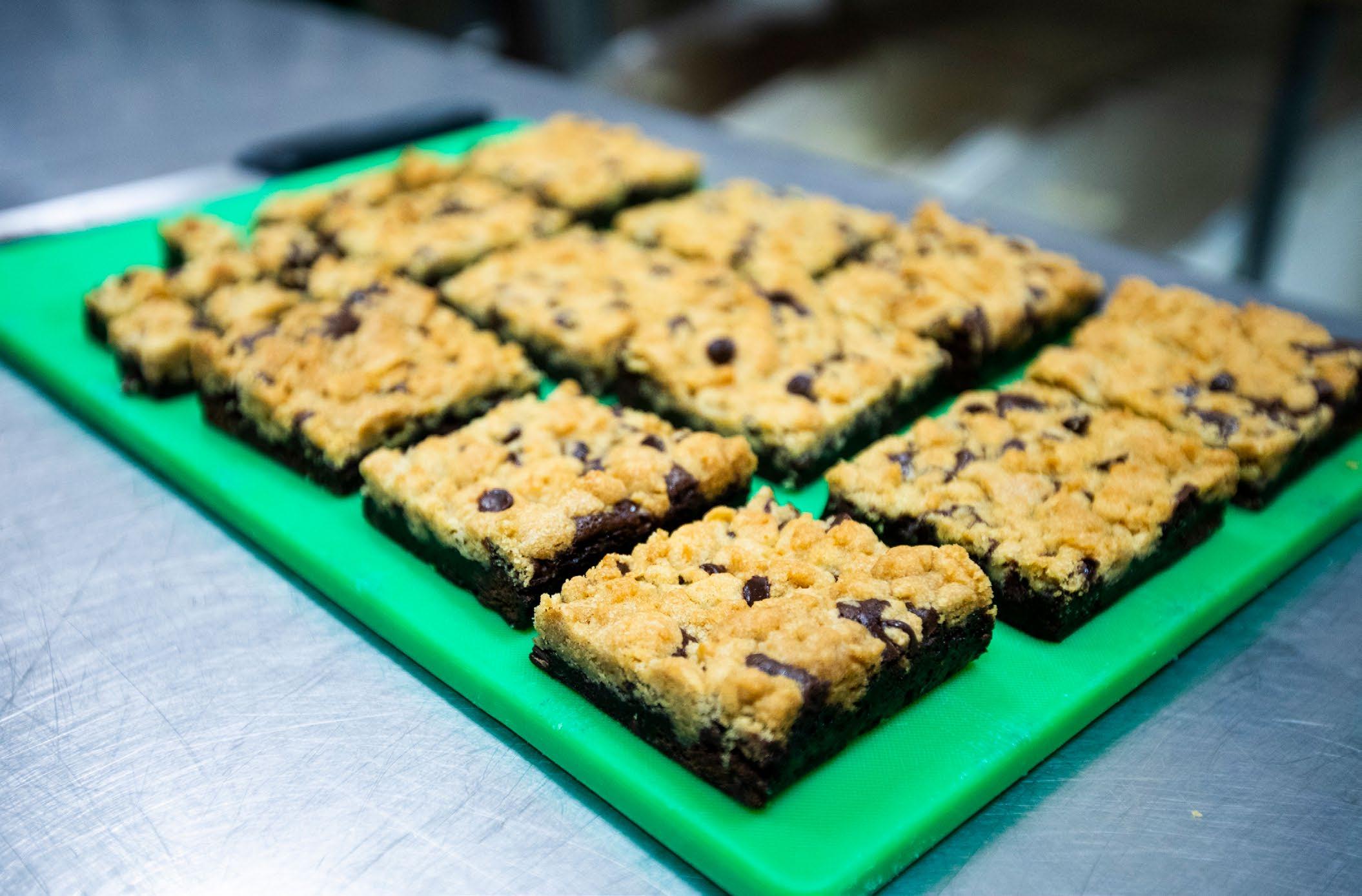
BY SOPHIA D. MEROW
At manayunk’s Crust Vegan Bakery this past May, PB&J scone season was giving way to jasmine peach scone season. Midseason, the dough invariably left over when a batch of scones is rolled and cut is incorporated into the next batch. “But at the end of the season, there’s no next batch,” Crust owner Meagan Benz says, recalling what she did with that last bit of strawberry-peanut butter dough. “I just rolled it out and made very tiny scones out of it.”
It’s that kind of thinking that — spoiler alert! — snagged Crust top honors in the Sustainable Business Network of Greater Philadelphia’s (SBN) inaugural Food Saver Challenge.
In the autumn of 2023 — aka pumpkin
spice scone season — Benz applied to participate in the challenge, designed to support area food businesses in their efforts to reduce food waste and empower them to spur progress toward Philadelphia’s goal of diverting 90% or more of the City’s waste from landfills by 2035.
“I was hopeful that I could learn some new ideas,” says Benz of her interest in the challenge, “that it would force me to be a bit more in touch with our waste.” Along with providing tasty vegan sweets to customers and a living wage to staff, reducing waste has long been a Crust priority. “I wanted to get better at what’s already important to us.”
The Food Saver Challenge ran from October 2023 through March 2024, with Crust and eight other businesses — Philly Food-
works , Philadelphia Catering Company, Bar Hygge, Old City Coffee, LUHV Food, High Fidelity Bakery, Mariposa Food Co-op and Reading Terminal Market — accruing points according to the Environmental Protection Agency’s Wasted Food Scale. The scale tiers pathways for preventing or managing food waste according to their benefit to the environment and a circular economy.
Prevention of food waste — producing, buying or serving only what is needed — earned participants the most points; waste reduction methods such as repurposing and donation garnered fewer points; and composting netted the fewest. Businesses submitted waste data to SBN monthly.
While each challenge participant implemented food-saving strategies suited to indi-

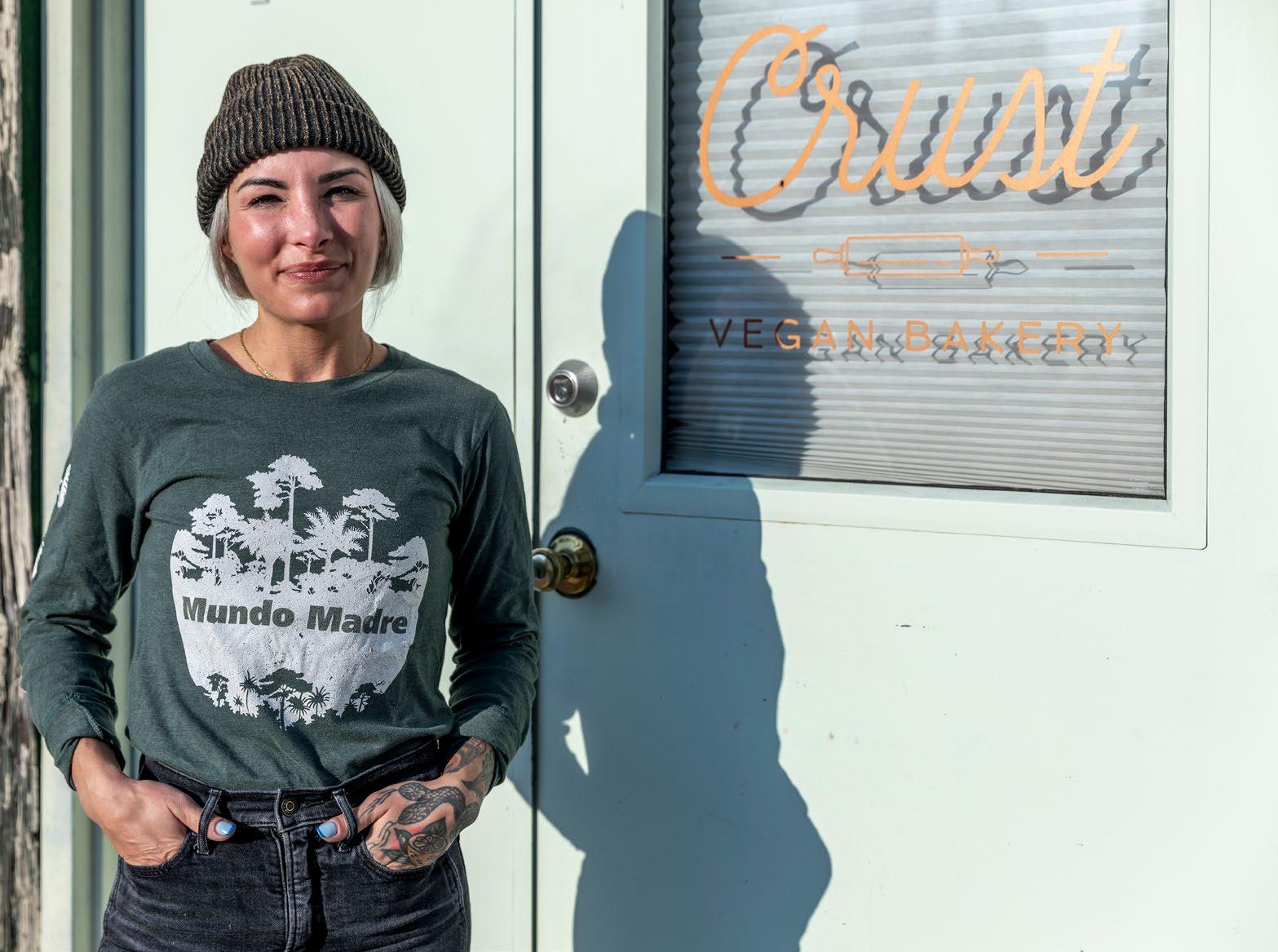
Without the challenge I could have still been sleeping on the fact that there’s so much valuable information within these [waste] logs that we already keep.”
MEAGAN
Crust Vegan Bakery
vidual business priorities and on-the-ground realities, SBN’s August 2 024 Food Saver Challenge Report identified four key methods (useful for households too!) for effectively mitigating food waste: shifting purchasing or production patterns, food repurposing, food redistribution and composting.
Composting was established practice at SBN member Crust long before the Food Saver Challenge — the bakery has been a Bennett Compost customer since 2018 — so Benz didn’t need to make any adjustments on that front as she began digging into the numbers last fall, looking for ways to cut waste. Her data analysis did reveal actionable fluctuation in the demand for certain products at Crust’s Main Street storefront. “I realized that we need to be baking less cookies a day in the winter,” Benz says, reporting that the insight prompted her to revise instructions to staff. “‘Going forward we’re going to do half dozens. Don’t bake
more until we sell out of a flavor.’”
Of course even a mindful, well-instructed staff will overbake a batch of cookies on occasion, or pull a tray of brownies before they’re quite done. Which is where what SBN executive director Devi Ramkissoon called Crust’s “unique repurposing solutions” come in. Throughout the challenge, “leftover ingredients were used whenever possible to prevent any edible food from entering the landfill,” Ramkissoon enthused in an email.
Crust has turned too-crisp cookies into crust for cheesecake “for years,” Benz says, but the challenge inspired her to seek out novel ways to give could-be discards new purpose. It turns out that too-gooey brownies make ideal ice cream add-ins or can be pressed into shells for ice cream pies.
While Benz doesn’t want to sell a subpar baked good, be it an underdone brownie or a cake cup approaching the end of its shelf life, she would “love for someone to still eat
it,” so products not ripe for repurposing are donated. (“The end of our shelf life isn’t like this product is now bad,” Benz emphasizes.) Crust’s storefront is closed on Monday and Tuesday, so each Sunday, product that would be expired by Wednesday is donated, usually to Germantown Community Fridges or the commUNITY fridge at the Ridge Avenue coffee shop of Crust wholesale customer Unity Java.
Over the six-month Food Saver Challenge, participating businesses together donated more than $82,000 worth of food while diverting almost 85,000 pounds of food from the waste stream. Crust’s waste reduction efforts earned more than 1,800 points, more than any other competitor.
Benz credits the challenge with bringing Crust’s waste log, which predates the challenge, into more productive use. The log’s relevance to Crust’s standing in the competition strengthened the link in staffers’ minds between minimizing mistakes and keeping waste down, and the patterns discerned in the data have motivated Benz to continue making time to review the log regularly. “Without the challenge I could have still been sleeping on the fact that there’s so much valuable information within these logs that we already keep,” Benz says.
At a May 2 closing ceremony held at Crust’s commercial kitchen, the bakery was awarded a citation from the City, a trophy created by SBN member Remark Glass and a $5,000 check. Benz treated attendees to those scaled-down PB&J scones she’d innovated.
Representatives of Food Saver Challenge partners Bennett Compost, Circle Compost, ClearCOGS, Drexel Food Lab, Share Food Program and Sharing Excess also enjoyed miniature blueberry muffins made with fruit that hadn’t been used in winter bakes in the quantities anticipated. “Everything we served was on theme,” Benz says. “It was a great way to continue to repurpose what would have been waste for the event about how we repurpose waste.” ◆
The next iteration of the Food Saver Challenge is a partnership with Saxbys, a Certified B Corporation most of whose 100% student-run cafés are located on or near college campuses. The challenge will focus on reducing food waste during semester break periods at Saxbys cafés in Philadelphia.
BY JENNY ROBERTS
Growing up in Philadelphia, Marcus Greene Sr. says his family struggled to buy groceries. Even with food stamps and other government assistance, it still wasn’t enough.
“I specifically remember as a youth, standing in line on Lehigh Avenue, waiting with the rest of the community to get our food donations,” says Greene, now vice convener of the Mariposa Food Co-op’s board of delegates. That’s why he’s passionate about volunteering with Philly Food Rescue, which he says helps “get the food out to the masses.”
“That’s something that resonated with me,” Greene says.
An initiative of the nonprofit organization Share Food Program since 2021, Philly
Food Rescue collects perishable food from local businesses and donates it to pantries, senior centers, community fridges and others in need across Bucks, Chester, Delaware, Montgomery and Philadelphia counties, as well as Camden, New Jersey.
“We’re an anti-food-waste intervention that works to resource our partners on the ground,” says director Suzannah Hartzell. Philly Food Rescue acts as a “middle man,” she adds, connecting food from businesses to the organizations serving the people who need it — and keeping food out of landfills in the process.
“To be able to divert food from getting into the landfills is making a significant impact on emissions, on climate change,” Hartzell says.
Philly Food Rescue’s “agile” nature allows it to make use of food that wouldn’t make it to the shelves at a traditional pantry, diverting it from the waste stream, Hartzell says. “If a pantry is giving out food once a week on a Thursday, they can’t get a really perishable donation on a Monday,” she explains. “It wouldn’t still be good long enough to last until their distribution.” In this way, Philly Food Rescue is able to fill in a gap in the food access space, Hartzell says. Last year, Philly Food Rescue helped 283 community partners receive 25,000 pounds of food each from more than 200 businesses. Food donations are transported by volunteers like Greene who make regularly scheduled deliveries, or use an app to accept taking a donation to a receiving partner. Each trip between a donation and delivery site is within five miles or up to a half-hour drive. Last year, 396 volunteers averaged 19 rescues each.
Greene also has experience both giving and receiving food donations through Philly Food Rescue. In 2021, he was managing three recovery houses in Germantown that received perishable food donations twice a week that would be cooked right away to feed residents.
“The cost of food is outrageous, so the


It’s a huge environmental impact that we’re having of being able to get that food before it’s going to expire and being able to take it to where it needs to go — to folks who will use it.”
GEORGE MATYSIK, Share Food Program
donations really, really helped and meant a lot to us,” he says.
In 2021, the cost of all-food prices increased by 3.9% from the previous year, according to the U S Department of Agriculture. The following year food prices rose by 9.9% — faster than in any year since 1979. In 2023, food prices again increased, this time by 5.8%.
After his experience receiving donations from Philly Food Rescue, Greene helped form a partnership between the food rescue program and Mariposa Food Co-op in 2022. The West Philadelphia co-op makes
a weekly donation that can include fruit, vegetables, bread or meat.
“It really depends on what the season is and the kind of things we have available,” Greene says.
The Swarthmore Co-op is another retail partner with Philly Food Rescue. It has multiple scheduled donations for pickup each week. Vlad Stefanovich, produce and specialty manager, says the co-op donates milk, baked goods and produce that are “not quite the highest quality to sell,” but still good.
“Every single donation item has to fit a cri-
teria,” he says. Dairy products can’t be more than two days past the use-by date, but bread and baked goods are still usable as long as they’re soft and not moldy, he says.
In addition to working with retail partners, Philly Food Rescue also accepts donations in special circumstances. That might mean Target’s freezers went down and the food needs to be picked up in the next hour, or there might be leftover trays of food from a wedding that will be trashed otherwise.
“We can mobilize really quickly in either emergency situations or one-time situations,” Hartzell says.
About 30 to 40% of food is wasted in the U.S.; it takes up the biggest share of municipal landfills, according to the U S Food and Drug Administration.
In operation since 2018 (housed under a different nonprofit organization in its early years), Philly Food Rescue diverts about seven million pounds of food from the waste stream each year, says George Matysik, executive director of Share. “It’s a huge environmental impact that we’re having of being able to get that food before it’s going to expire and being able to take it to where it needs to go — to folks who will use it,” he adds.
For volunteer Cynthia Thornton-Landis, Philly Food Rescue’s two-fold mission is part of the appeal that inspires her to deliver a food donation to a senior center each Wednesday. She’s concerned about both food insecurity and global warming. Philly Food Rescue combats both locally.
“It really does address a need,” the Elkins Park resident says. “They’re really wonderful people doing their bit to prevent waste and address food insecurity, and hopefully, lower the carbon footprint just a little bit to help stem global climate change.” ◆
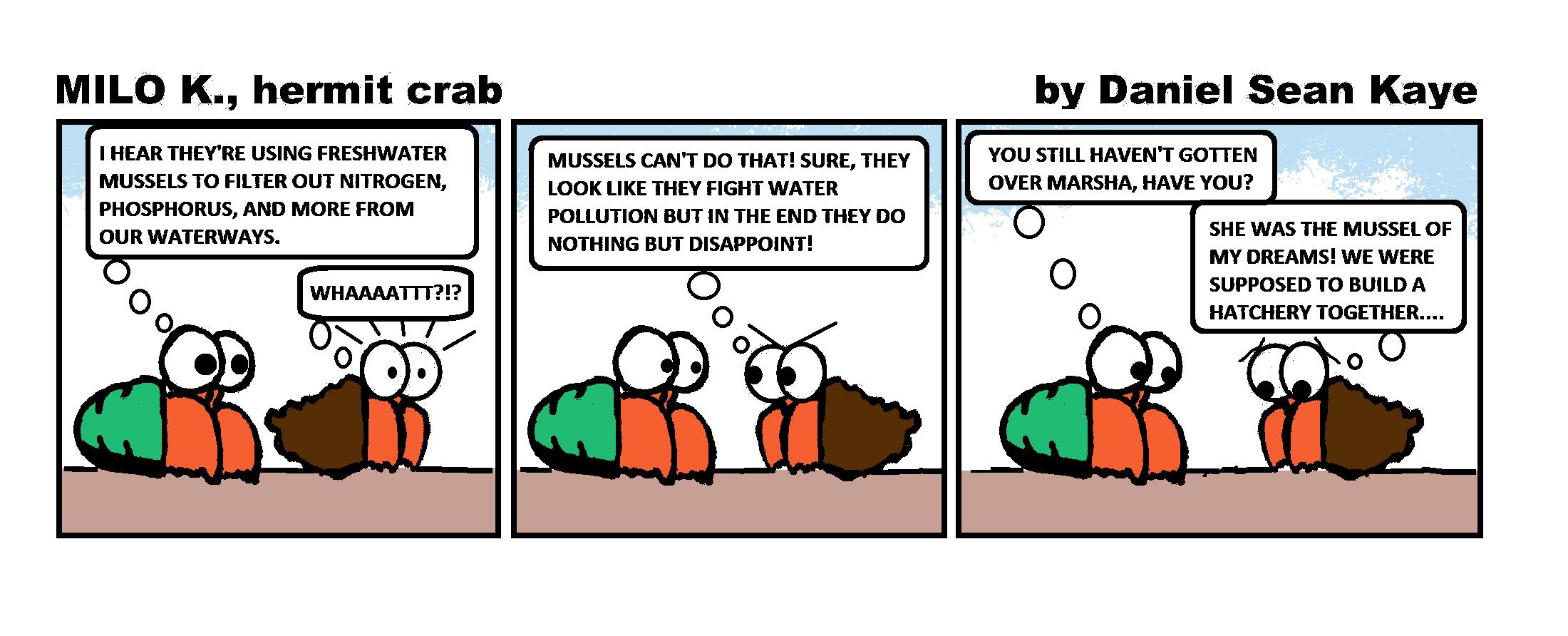
Garden co-coordinator
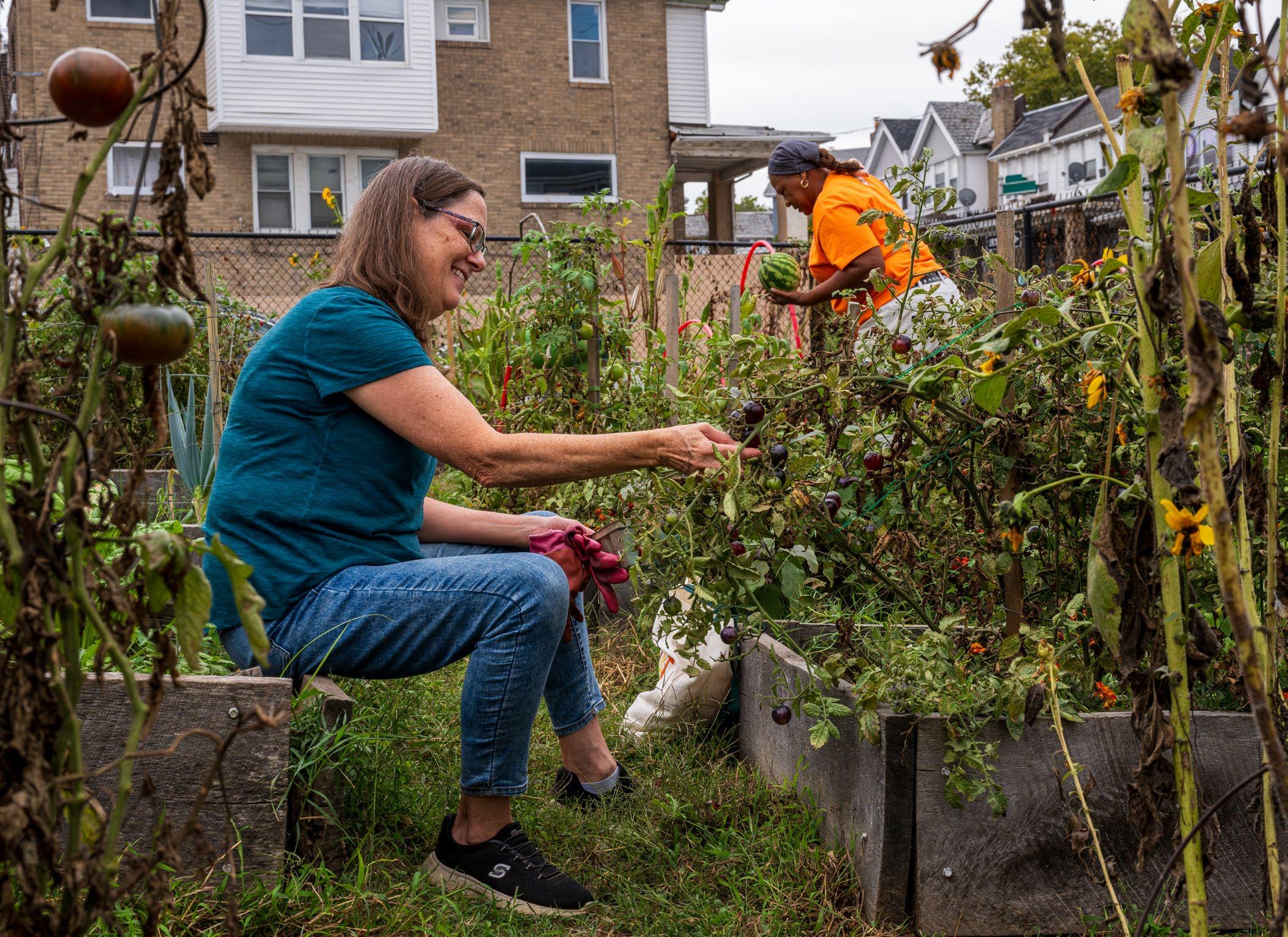
BY SJ PUNDERSON
At the Pulaski Zeralda Community Garden in Germantown, the air is thick with the scent of green onions and okra. These vegetables grow from some of the 38 plots, including one dedicated to a local women’s center. This season alone, the garden yielded blackberries, strawberries, tomatoes, okra, peppers, corn and collards. The garden participates in the Pennsylvania Horticultural Society (PHS) City Harvest program and donates produce to community fridges and a local church.
“This garden is good for the soul. It keeps me grounded,” says Tracy Savage, talking
with her garden co-coordinator Dee Dee Risher about their connection to the space.
“For me, this garden is a tie to the rural land I grew up [on] in South Carolina,” Risher says.
Pulaski Zeralda is one of many community gardens across Philadelphia that serves as vital greenspace in a neighborhood grappling with vacant, blighted lots. They provide fresh food, social connections and a sanctuary from urban life. Yet, land security is a constant battle as developers seek to buy up and build on these cultivated plots. Recent legal changes, including a Philadelphia City Council bill facilitating garden land transfers, offer hope amid gar-
deners’ continued struggles to protect their communities’ green havens.
In neighborhoods across Philadelphia, some 40,000 lots lay vacant. Nearly 75% of those abandoned properties are privately owned, according to the City of Philadelphia. Many are strewn with trash, overgrown with weeds and may be tax delinquent.
These vacant lots are especially common in Philly’s low-resource neighborhoods. Besides being eyesores, they can have serious social impacts on residents. “Dilapidated, vacant lots increase residents’ risk of depression and stress, which may contribute to socioeconomic disparities in mental ill-
ness,” said Eugenia C South, MD, an assistant professor of Emergency Medicine at the University of Pennsylvania and lead author of a 2018 study about the effect of greenspaces on mental health. “Our data shows that greening vacant lots can have a positive impact on the health of those living in these neighborhoods.”
In response, neglected lots from Cheltenham to Cobbs Creek have been transformed into community gardens and greenspaces. “Philadelphia currently has between 300 and 400 community gardens,” says Adam Hill, director of Community Gardens at PHS.
In 2014, the Pulaski Zeralda gardeners began the process of purchasing the two parcels of city-owned land on which they’d been gardening for years. And while, technically, they had been gardening as squatters for a quarter century, Councilmember Cindy Bass supported their efforts to preserve the garden. With the help of the Neighborhood Gardens Trust (NGT), led by executive director Jenny Greenberg, and the Public Interest Law Center’s Garden Justice Legal Initiative, the gardeners were successful in making the purchase two years later.
While community gardens like Pulaski Zeralda provide vital resources, land security remains a challenge.
In 2023, NGT purchased two lots directly from developers, preventing the destruction of gardens that had thrived there for decades. But NGT can’t save them all: Over 140 community gardens have been lost to development since 2008, according to the Philadelphia Garden Data Collaborative, including La Finquita, a celebrated garden in Kensington that closed in May 2018
Recent shifts in state and local policy could make it simpler for community groups to secure ownership of the land they’ve lovingly cultivated for years. In September 2024, a new Pennsylvania law reduced the required time for adverse possession — a legal tool that allows individuals or community groups to claim ownership of property they’ve maintained. Previously, gardeners had to continuously use a lot for 21 years before applying for ownership; now they can do so after just 10 years.
“This could be a really helpful tool for the hundreds of Philadelphians who have been maintaining side yards for a long time,” Greenberg says. “If a lot is privately
This garden is good for the soul. It keeps me grounded.”
TRACY SAVAGE, Pulaski Zeralda Community Garden

owned and you can’t find the owner, there’s potential to gain ownership through this law.” However, the process is still complex, requiring continuous and exclusive use for a decade, possession must be hostile — the owner can’t have granted permission — and use of the land must be “notorious,” or obvious. “Things like signs, fences and raised beds can help,” adds Hill.
Sari Bernstein, staff attorney with the Garden Justice Legal Initiative, which provides pro bono legal counsel to community gardens, believes the new law will make a significant difference. “I believe many more
gardens will qualify for permanent preservation under this law,” she says. “The garden community in Philadelphia is very organized and these people are doing a service to their neighborhoods.”
Another legislative change came this past spring via Philadelphia City Council Bill No. 240187, which allows the Philadelphia Land Bank to bypass sheriff’s sales when it buys foreclosed properties. It can then transfer ownership to community gardeners, who will maintain them as life-giving resources in neighborhoods. Councilmember Kendra Brooks, co-sponsor of the bill, wrote in her
newsletter to constituents: “In dozens of high-poverty neighborhoods across Philadelphia, community members have stepped up to clean up vacant lots and transform them into gardens. I support garden land belonging to the communities that care for them.”
Greenberg says funding the Land Bank would enable them to acquire more tax-delinquent properties for community gardens and transfer them to NGT for permanent preservation. “The Land Bank is acquiring lots from the U.S. Bank lien situation, which is very important, but there are so many other gardens that could be preserved as well.”
These legal changes offer hope for Philadelphia’s community gardeners, many of whom have spent years fighting for their greenspaces. But it remains to be seen how effective these bureaucratic measures will be in bringing real, tangible change. NGT is working towards protecting 70 total gardens by next year. “You can’t put a price on things like greenspace and flood reduction
in our city that is dealing increasingly with climate change,” says Greenberg, who is also on the board of the Land Bank.
In 2023, the gardeners at Pulaski Zeralda faced a new challenge. The vacant lot next to them that had been privately owned and tax delinquent had been purchased by a developer for $11,000. The developer, Nickle Holdings, LLC, had cleared the debt and was preparing to build a four-story apartment building that would block out much of the sun at the garden. The community strongly supported the garden and only had a week to mobilize before the local zoning hearing that would recommend a decision to Councilmember Bass on the eight-unit apartment building.
“We worked with a local attorney to navigate Germantown politics,” Greenberg says. “And the community really turned this crisis into an opportunity.” With mounting public pressure in favor of the garden and financial support from NGT, garden advo-
cates including Risher and Savage won the legal battle and eventually purchased the lot for $65,000. The developer still walked away with a tidy profit. The Pulaski Zeralda story is one of success, but not every community garden is so lucky.
Back at the garden, the hum of rush-hour traffic fades into the background as members envision what’s next. “It’s exciting to think about this land becoming something great,” Savage says, looking at the empty lot that will soon take shape with plans for beautification, with more raised beds and a community space for meeting and children’s programming.
Savage’s mother, Glenda McCall, who’s been part of the garden for over 32 years, beams with pride. “I used to bring Tracy and her sister here as kids, and now, look at her, helping the next generation,” she says. “When I get to the garden, I take my shoes off, put my feet in the dirt and read my Bible. It’s so peaceful here.”
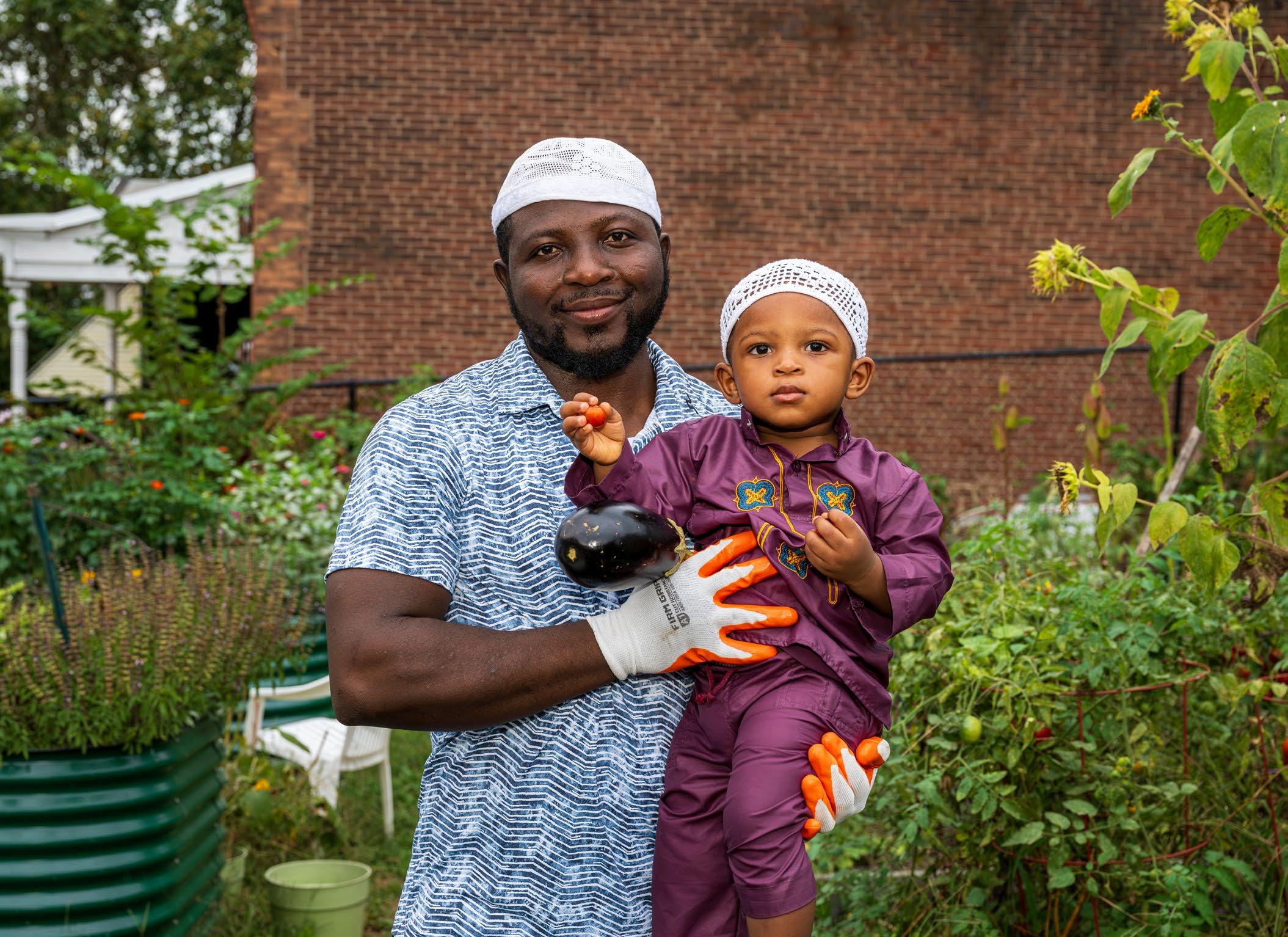
BY TROY BYNUM
Pre-order your local, fresh turkey and pies from the Co-op. We carry local farmraised, never frozen turkeys as well as organic, halal, and kosher options. Pre-order for pick-up at any of our stores at www.weaversway.coop/thanksgiving.
For the week of Nov. 10:
o Flours
o Sugars and/or honey
o Spices, flavorings (vanilla), salt & pepper
o Bouillon or stock
o Frozen pie shells
o Boxed stuffing
o Crackers for appetizers
o Graham crackers (if needed) for pie
o Drinks
o Charcuterie board items, such as cornichons, small jams, and nuts.
For the week of Nov. 17:
o Brussels sprouts
o Carrots
o Celery
o Apples or pears
o Oranges
Here’s a shopping list of typical ingredients you may need to make your Thanksgiving favorites.

"o Cornmeal
o Baking soda and powder
o Evaporated or nondairy milks
o Butters
o Cooking oils and vinegars
o Tofurky or Field Roast
o Canned pumpkin
o Stuffing mix
o Onions, garlic, and potatoes — store in a cool dark place
o Local Cranberries
o Sweet potatoes
o Whipped cream
o Green beans and Fresh herbs (end of the week)
Tuesday – Wednesday before Thanksgiving:
o Pick up your fresh turkey, pies, flowers and a few odds and ends.
Ambler • Chestnut Hill • Germantown • Mt Airy Seasonal Farm Market in Roxborough Open through Thanksgiving


Comic author and illustrator, sustainability expert
“As a kid, when I found out about climate change, I had a lot of climate anxiety. That’s one of the reasons why I entered the sustainability field. I had to work on this problem,” shares Desiree Izecksohn (Master of Environmental Studies ’23).
“For my master’s degree capstone, I decided to write a graphic novel about sustainability issues for kids ages 10 to 12.” When her capstone seminar instructors championed her unconventional project idea, she was surprised and grateful. “I’m so glad that they supported me… Now, it’s my passion project,” she says.
The topics she covers were guided by PA public school science requirements for students in Desiree’s target age group. “The goal is for the book to be complementary literature for science classes,” she explains. The resulting book tackles issues like recycling, air pollution, and climate change. Desiree also addressed her childhood experience with climate anxiety. “I think that using comics is a great way to approach very heavy, complex topics,” she says. “Once kids understand the science behind things like climate change and why recycling is important, then they can act on it, and we will have more people joining the cause.”
Desiree is currently working on publishing her graphic novel as well as outlining a second and third book to build a series of educational environmental books for kids. “The hope is to empower students to take action and think about how they can help the environment and help society,” she says.
To learn
about